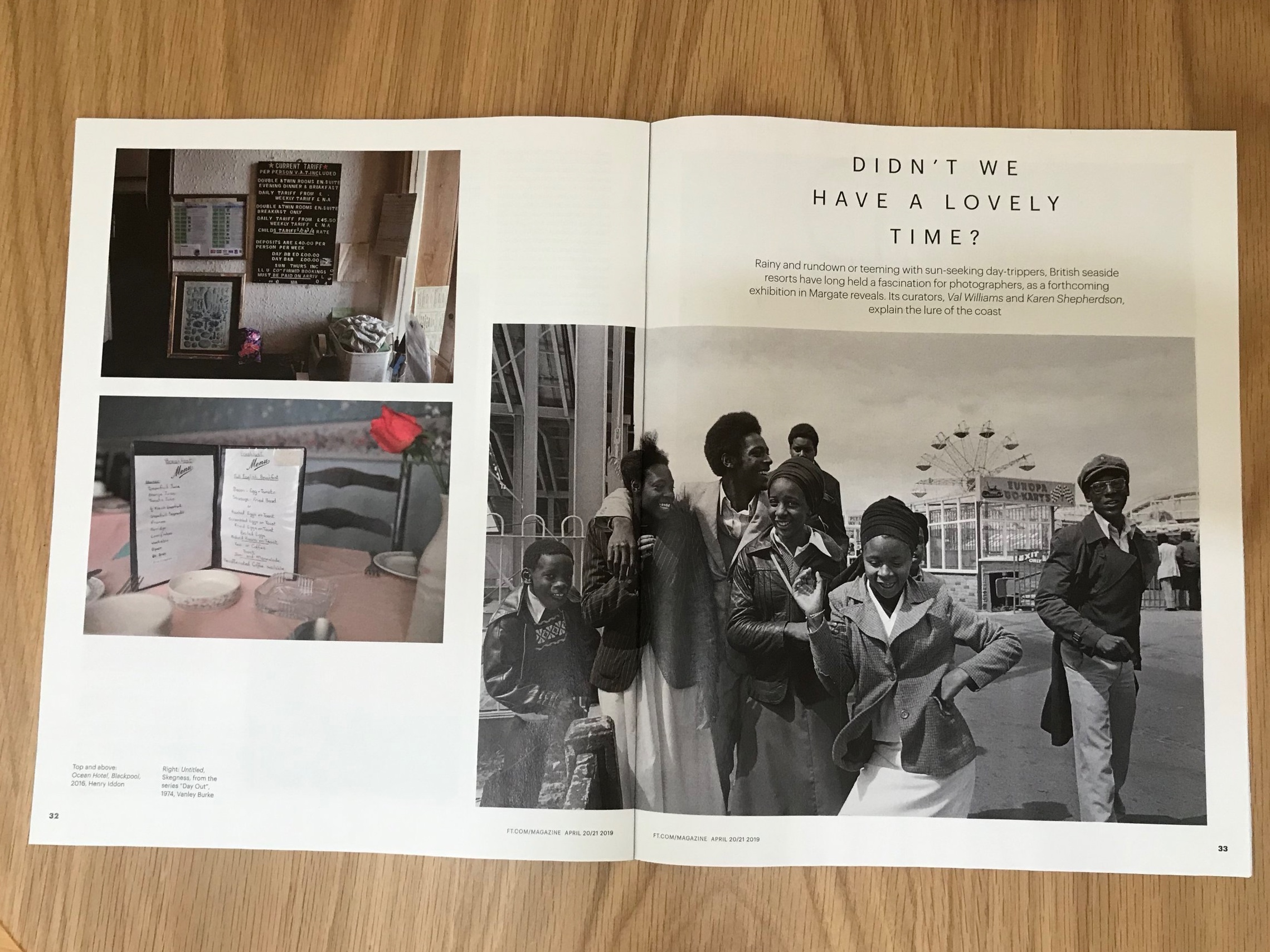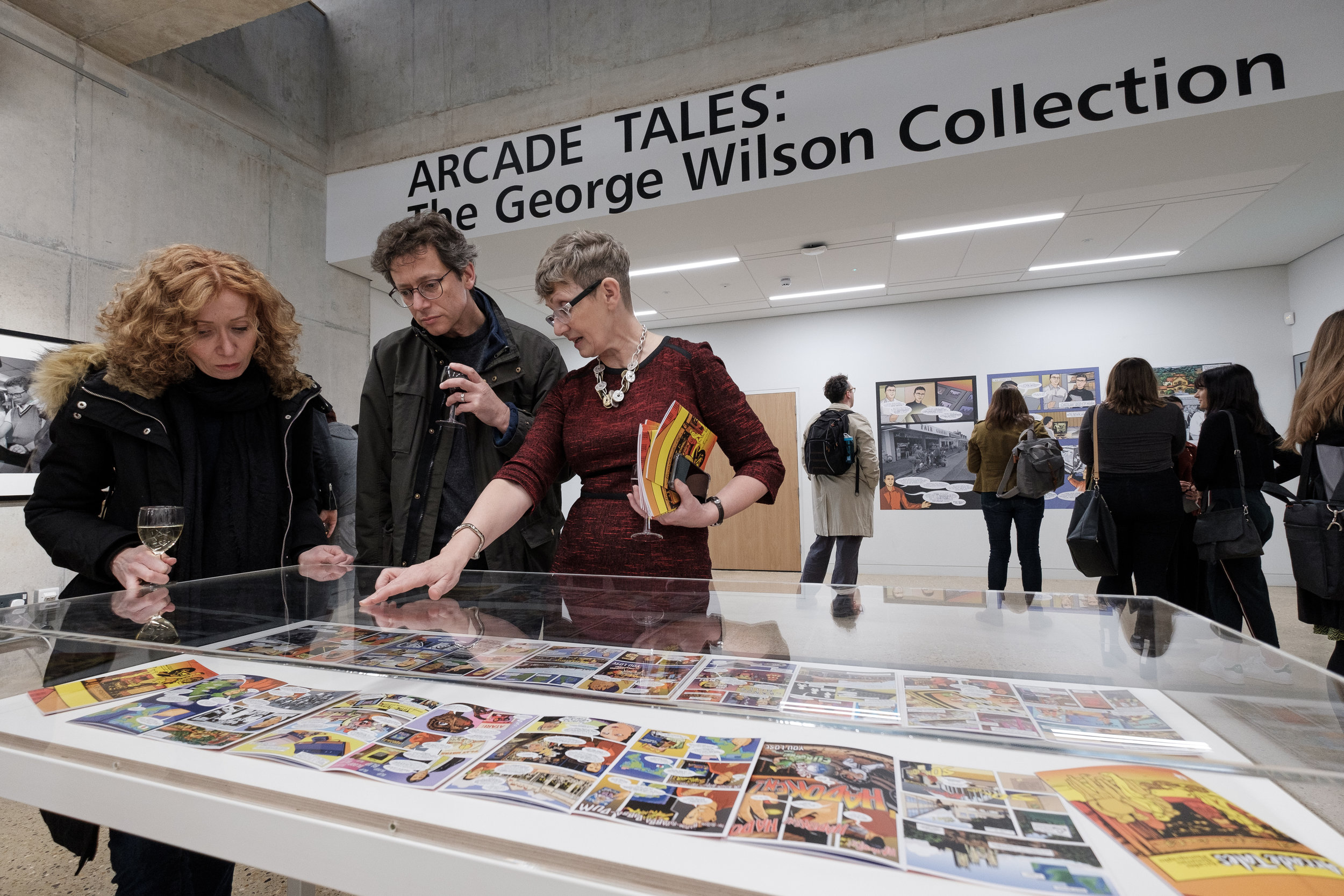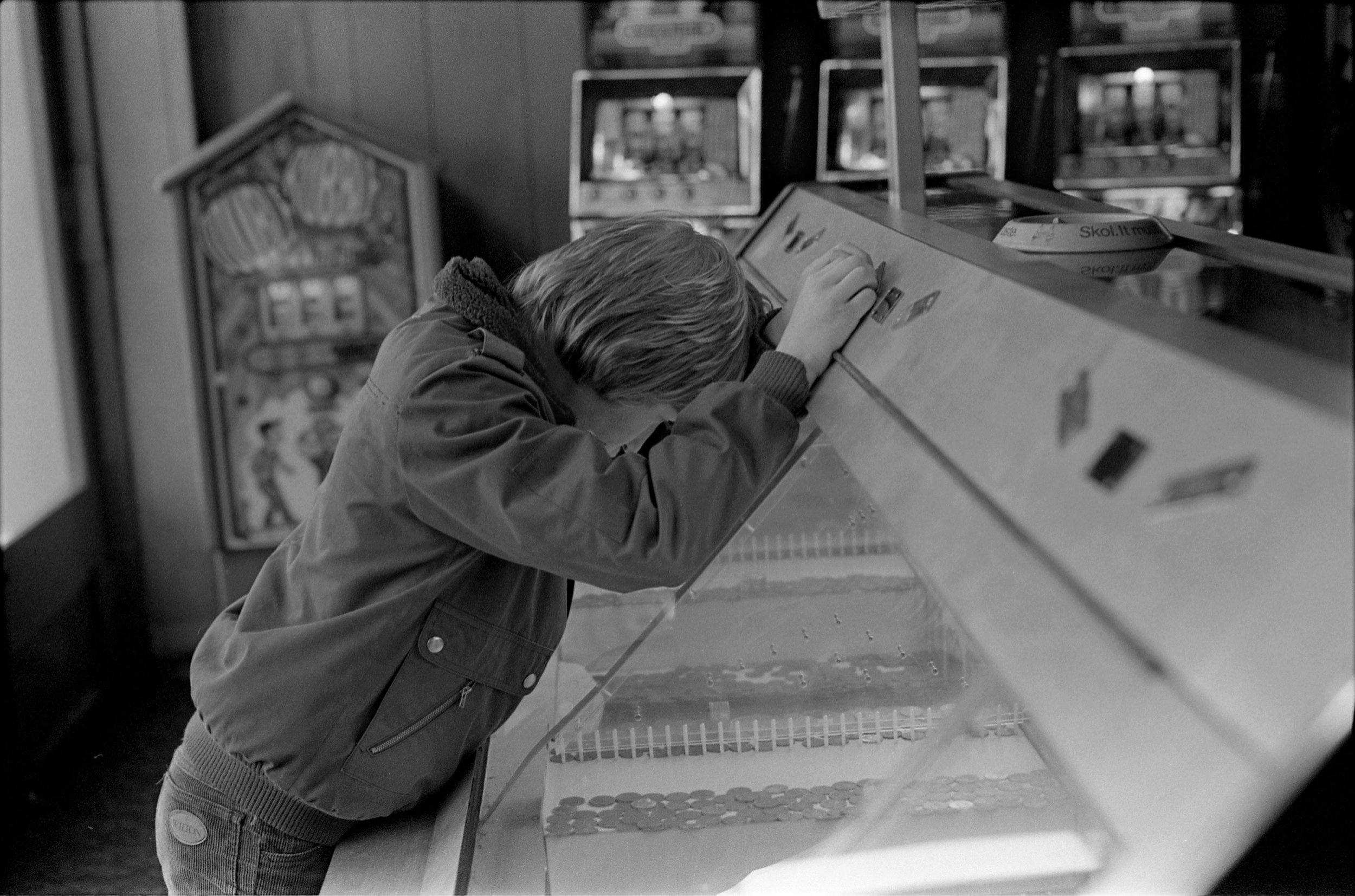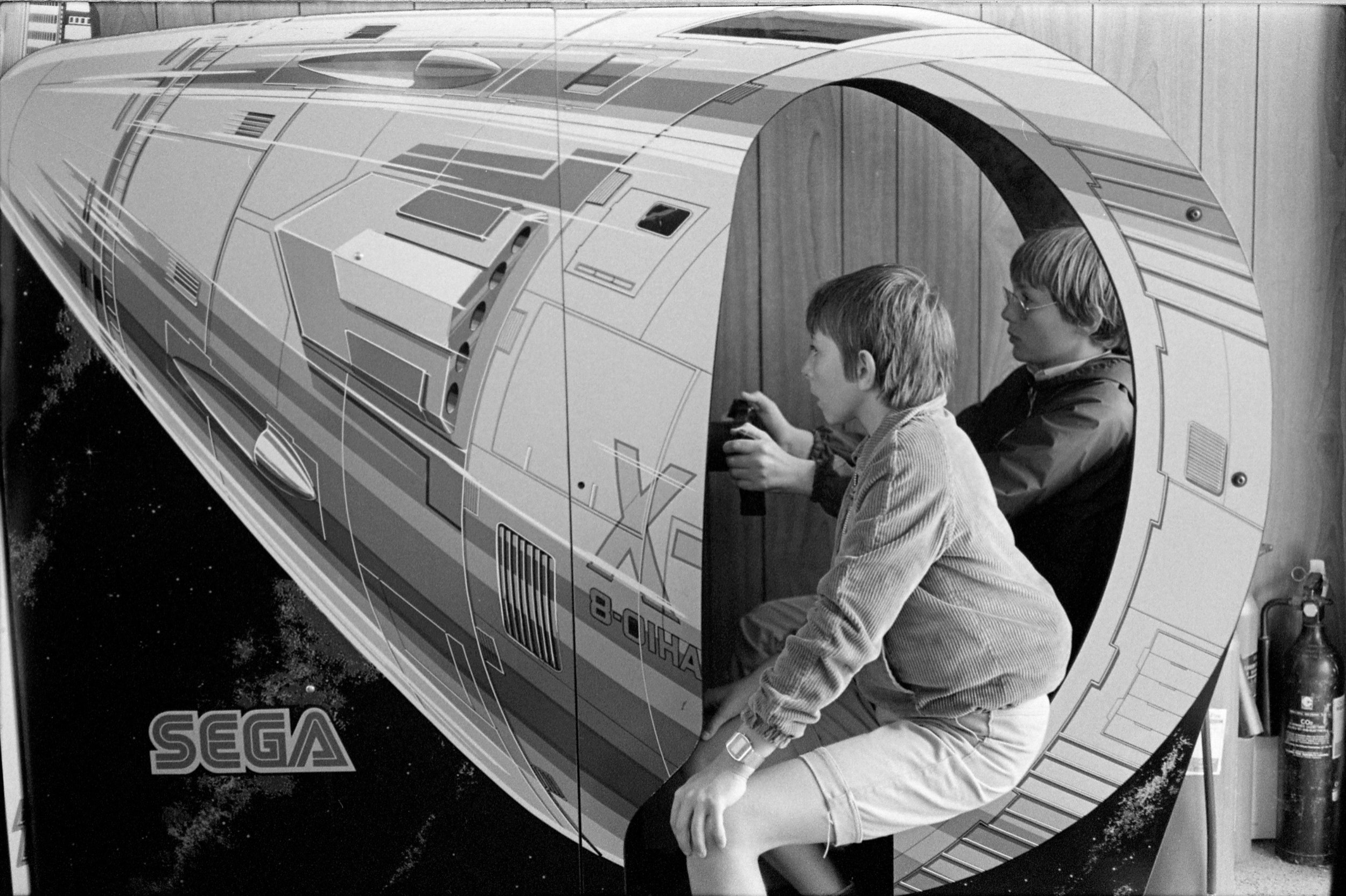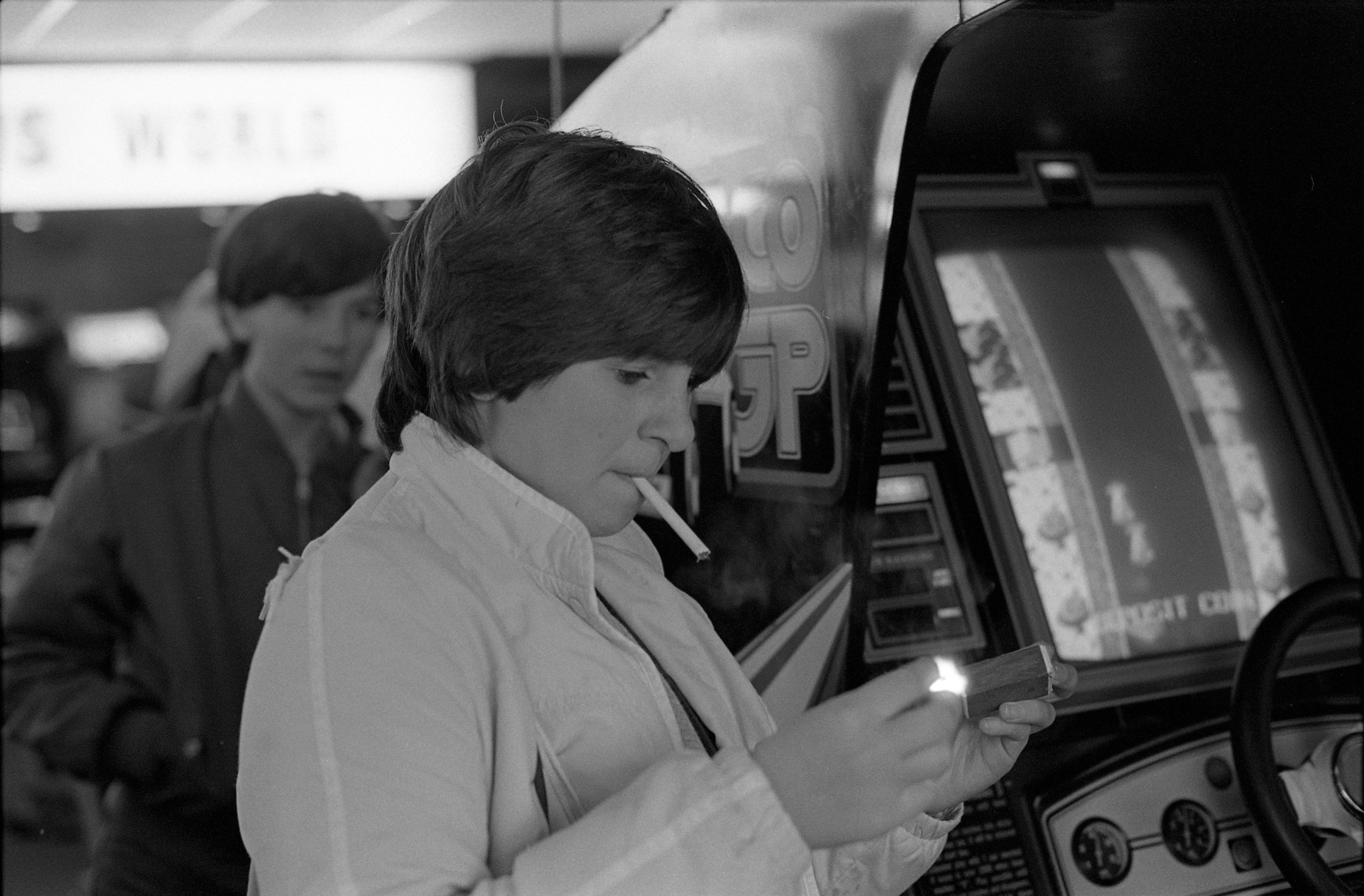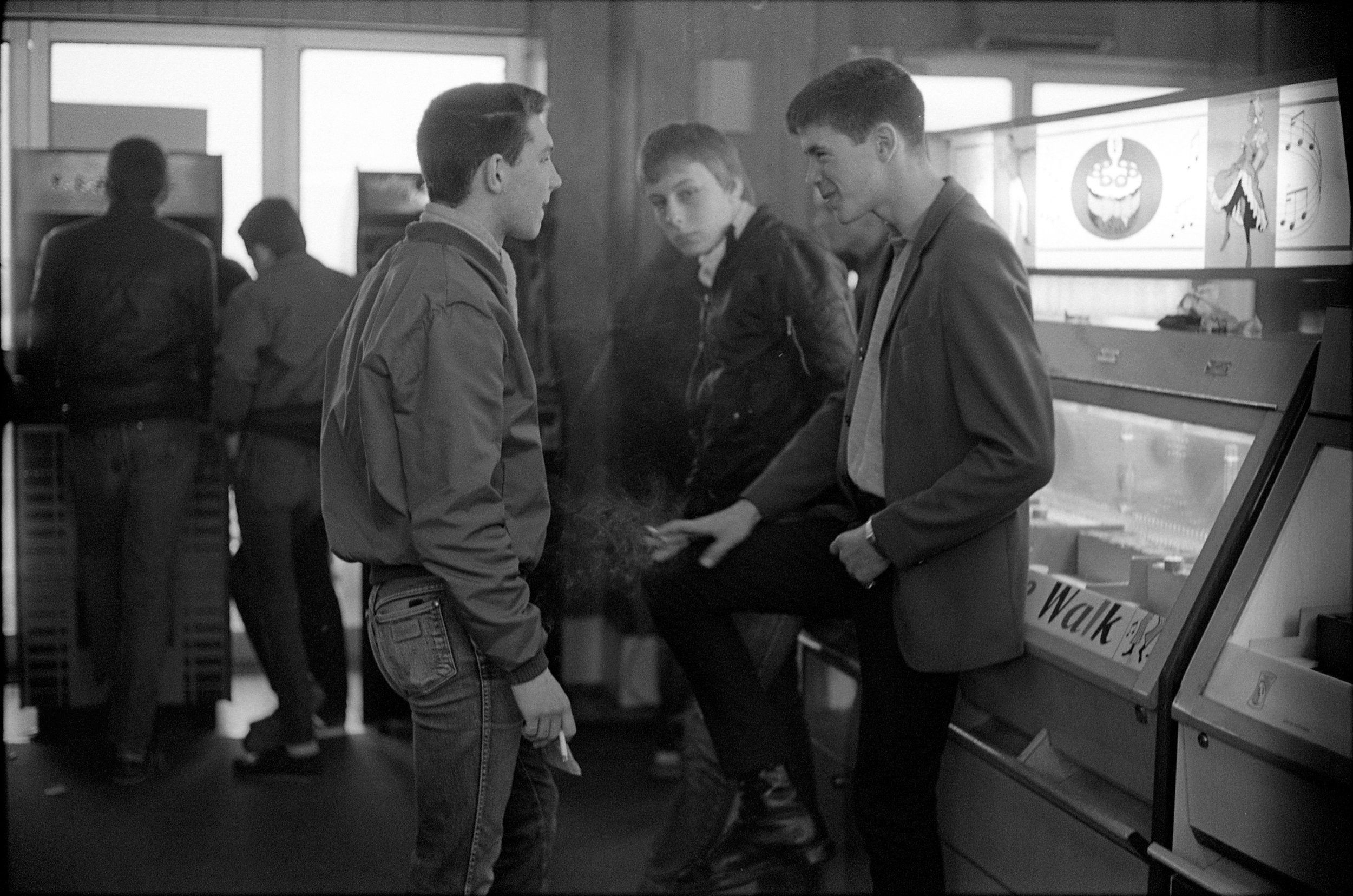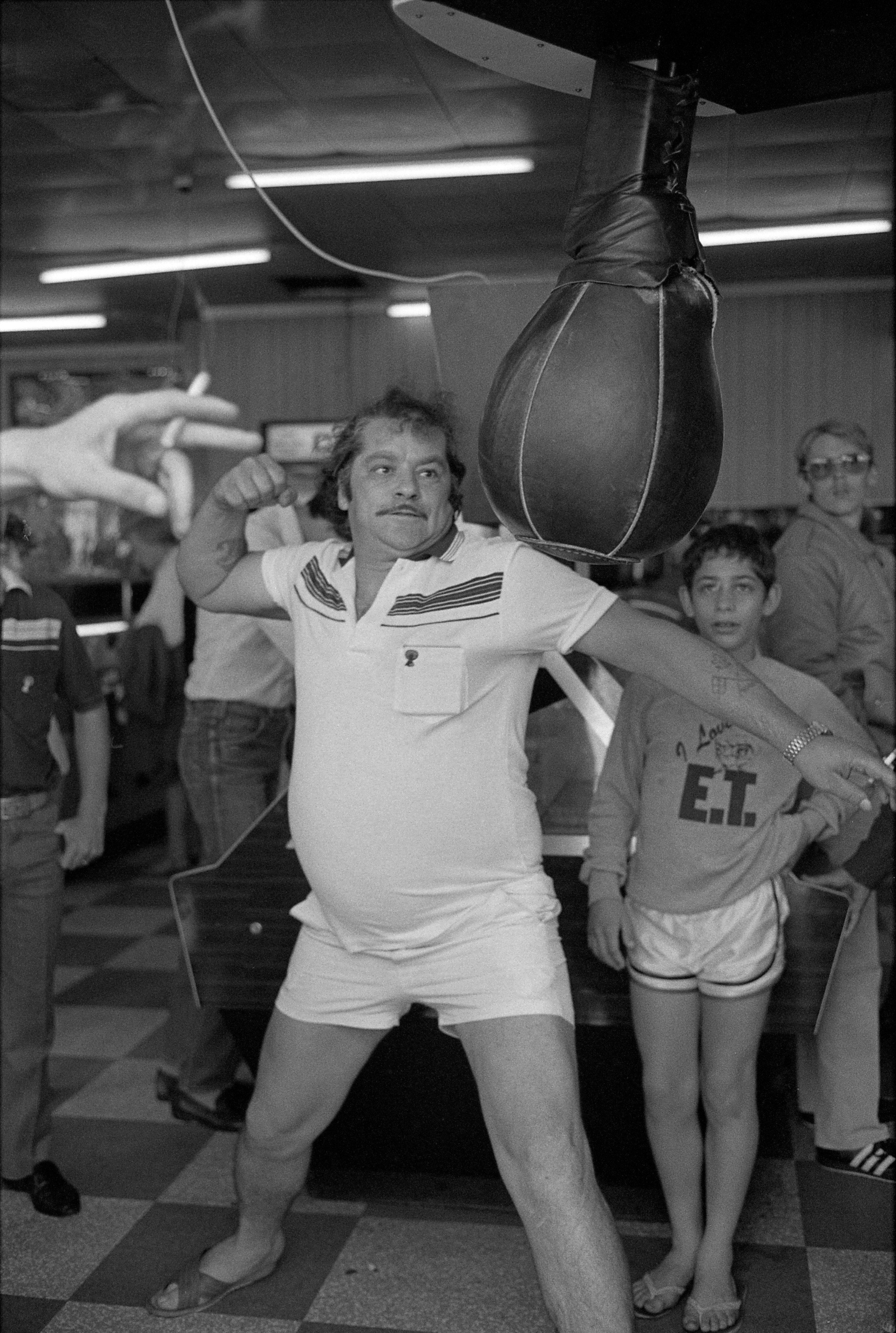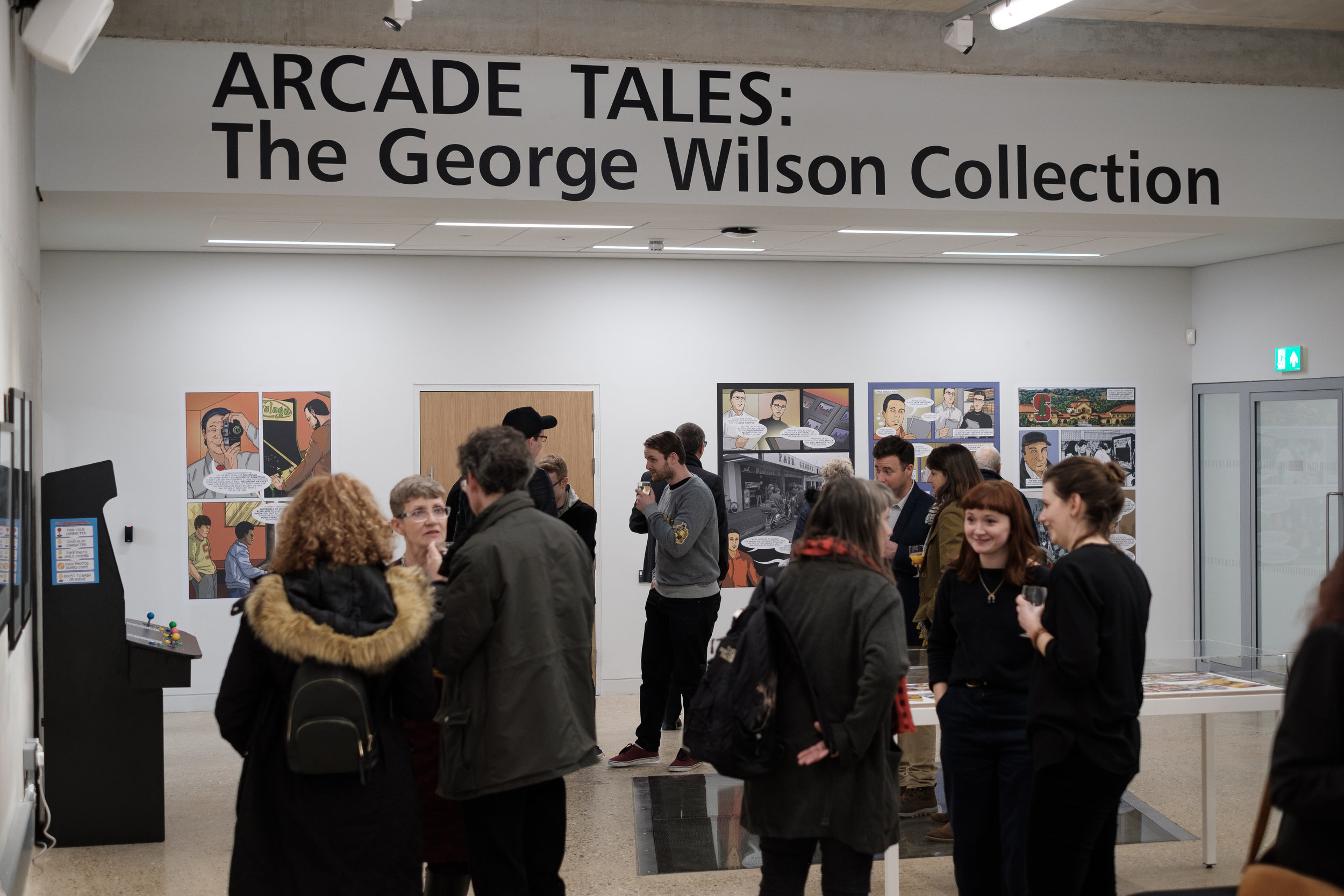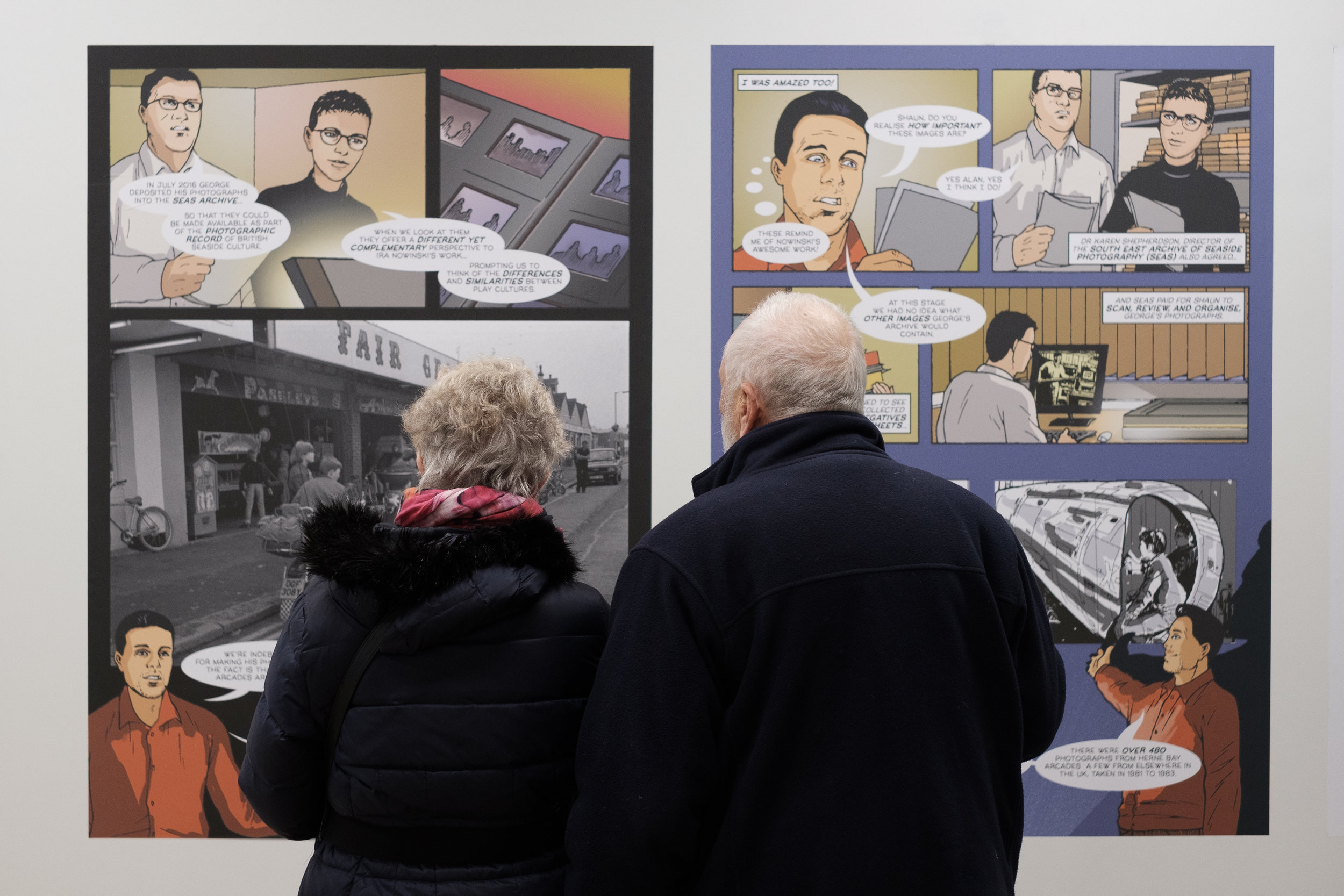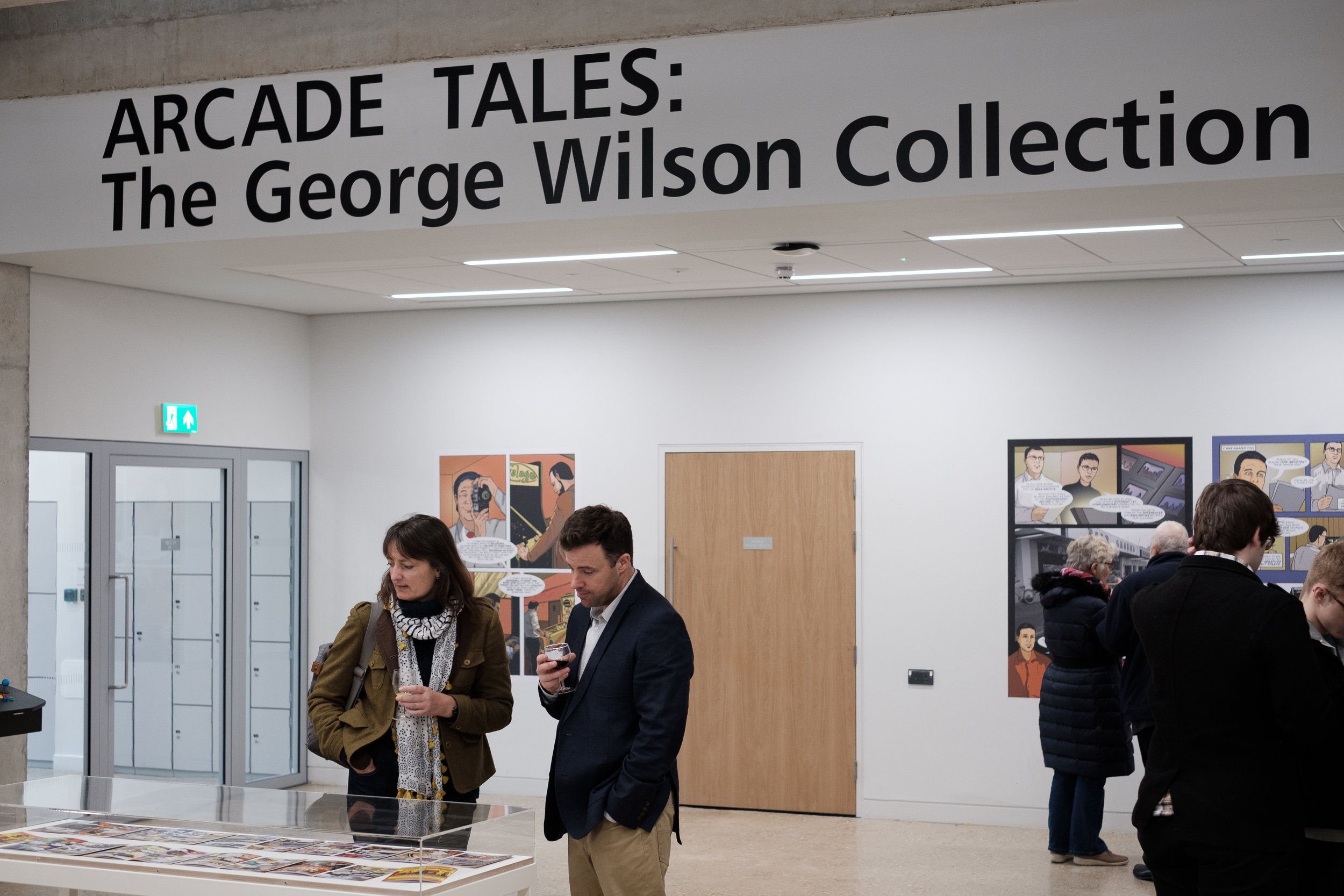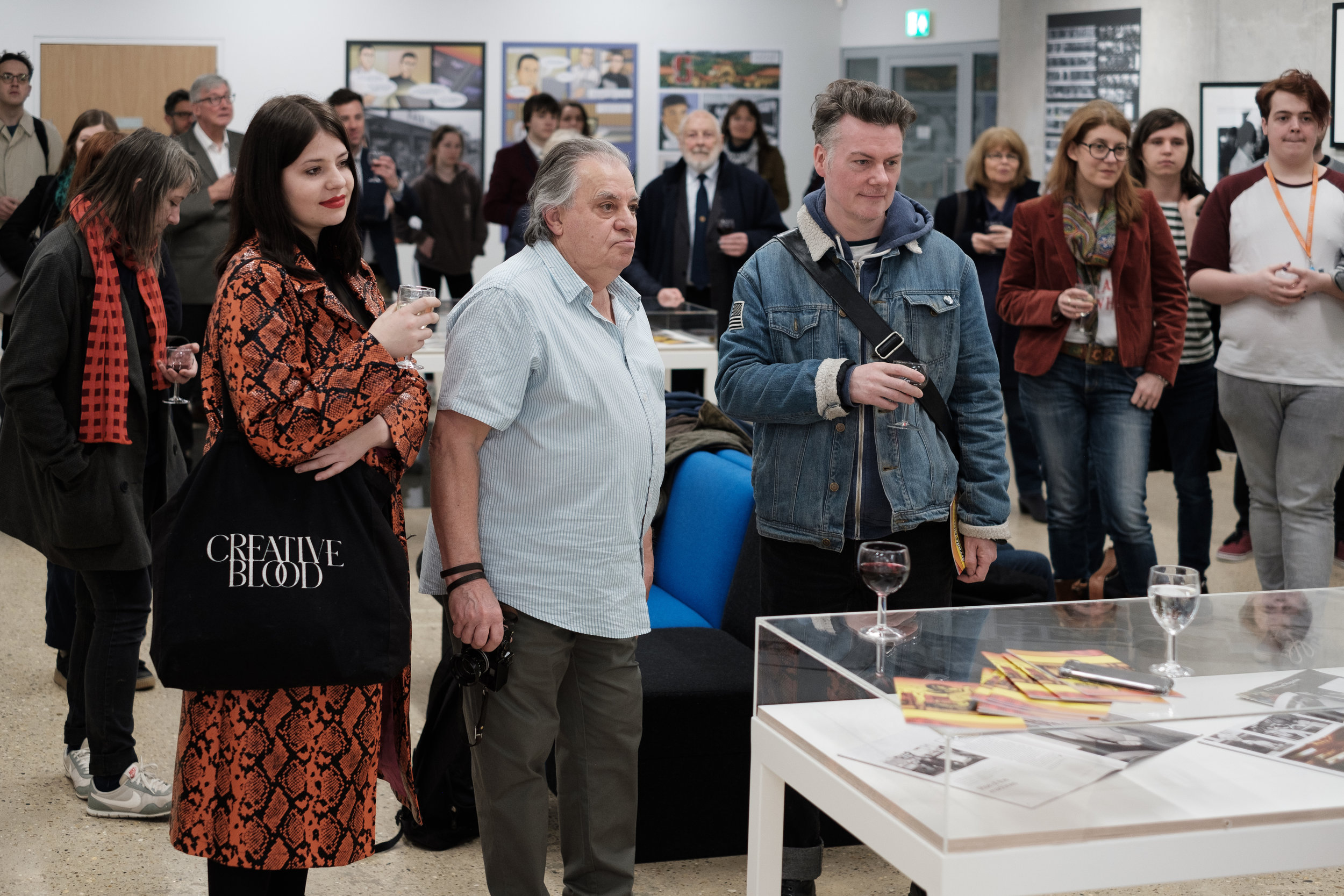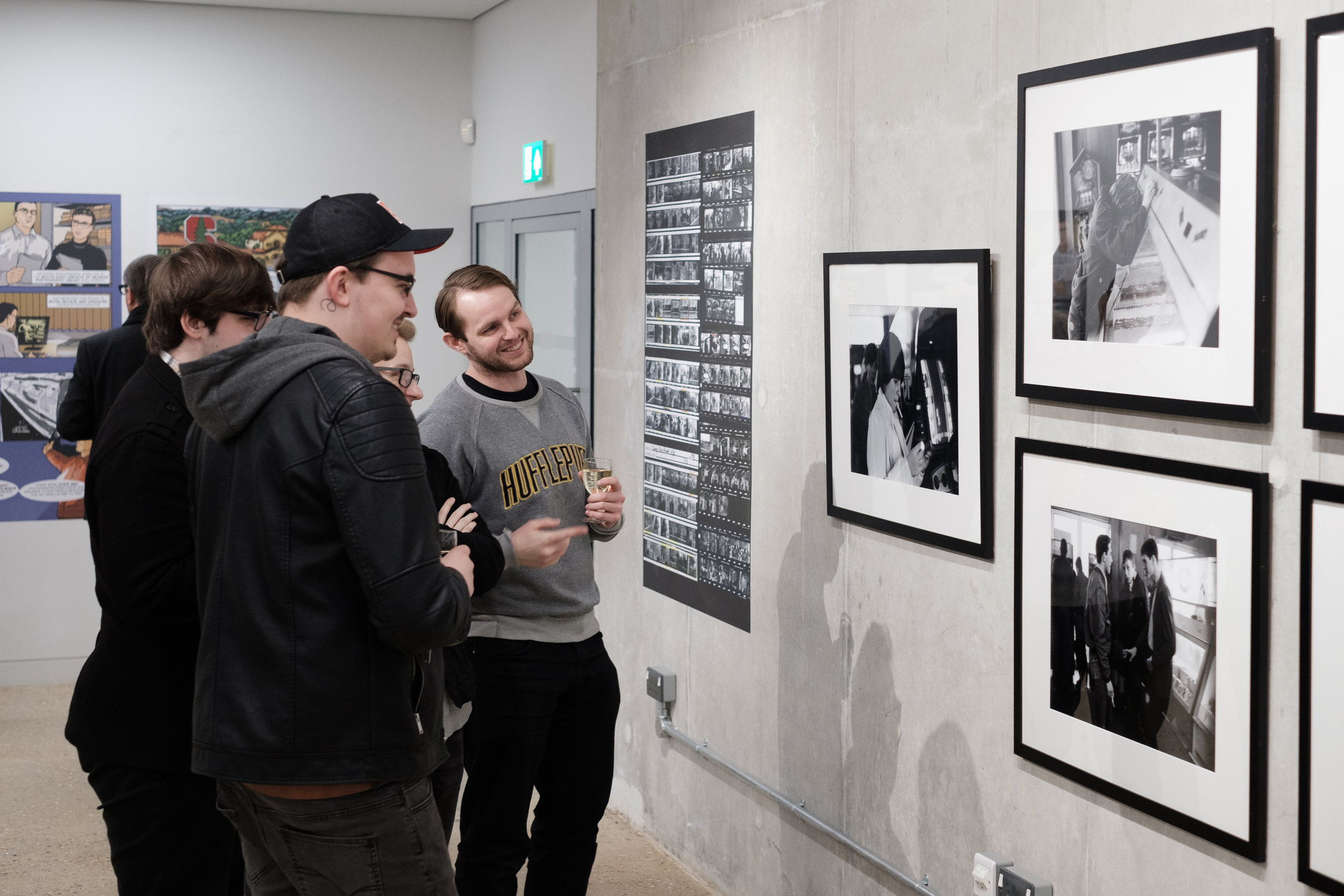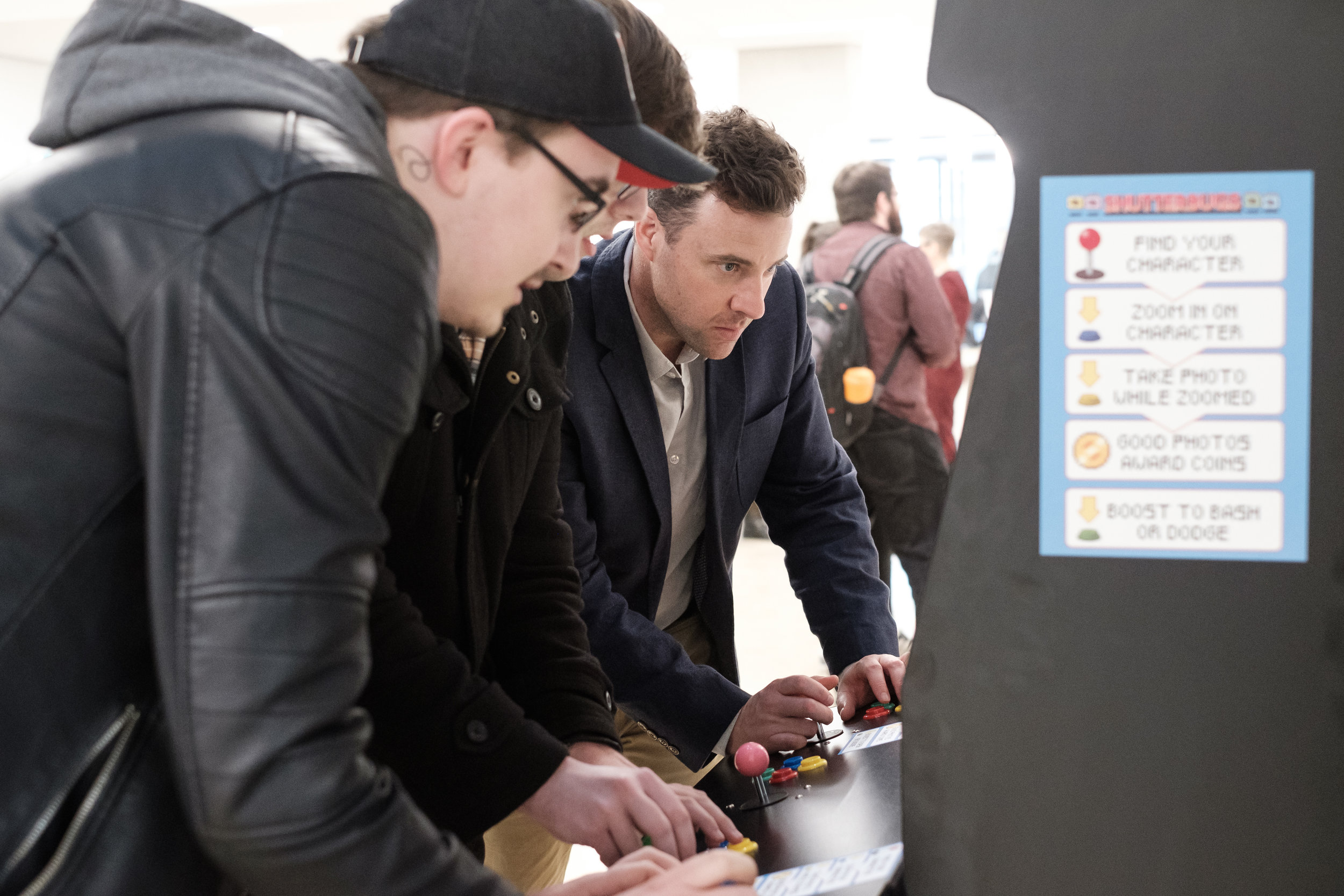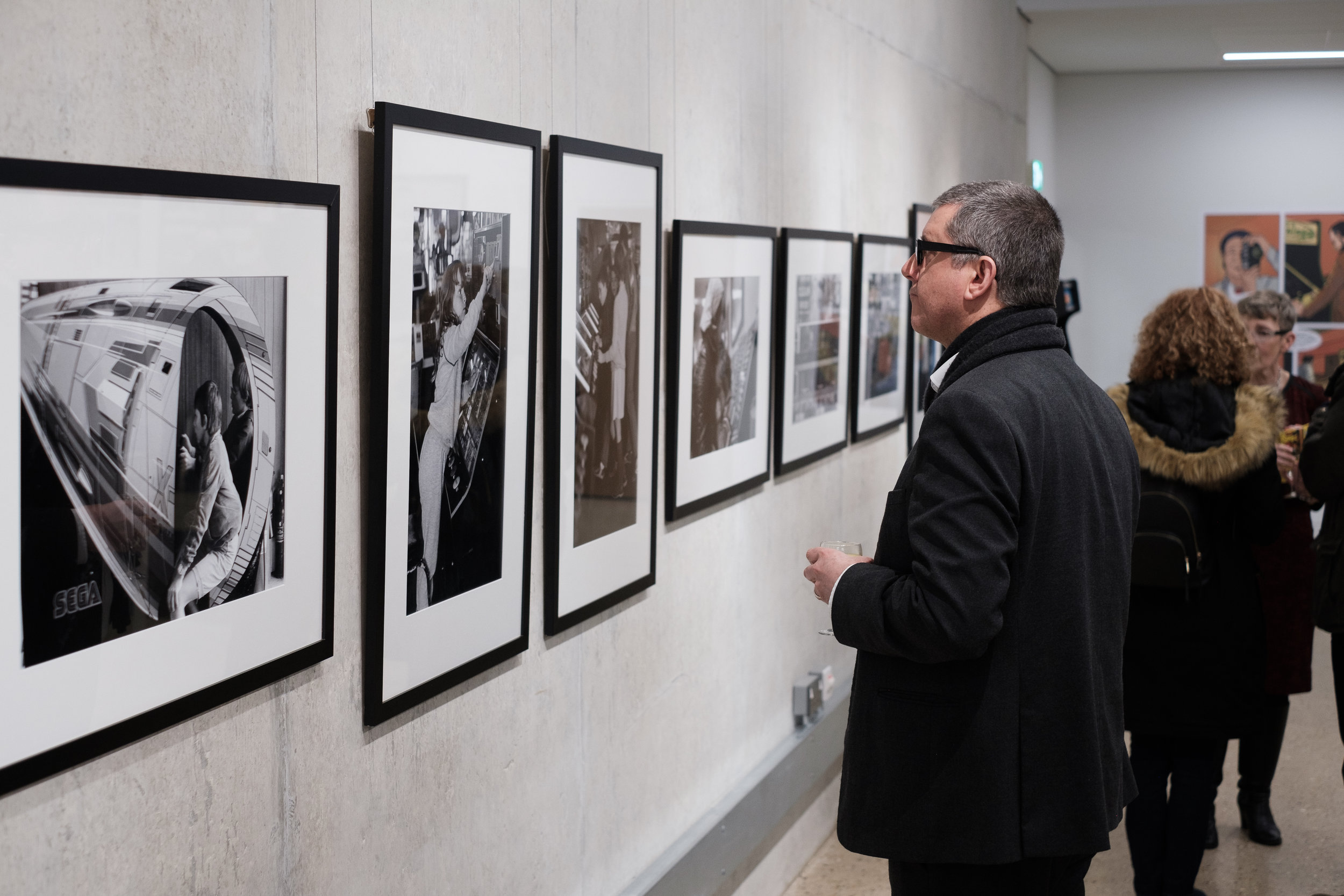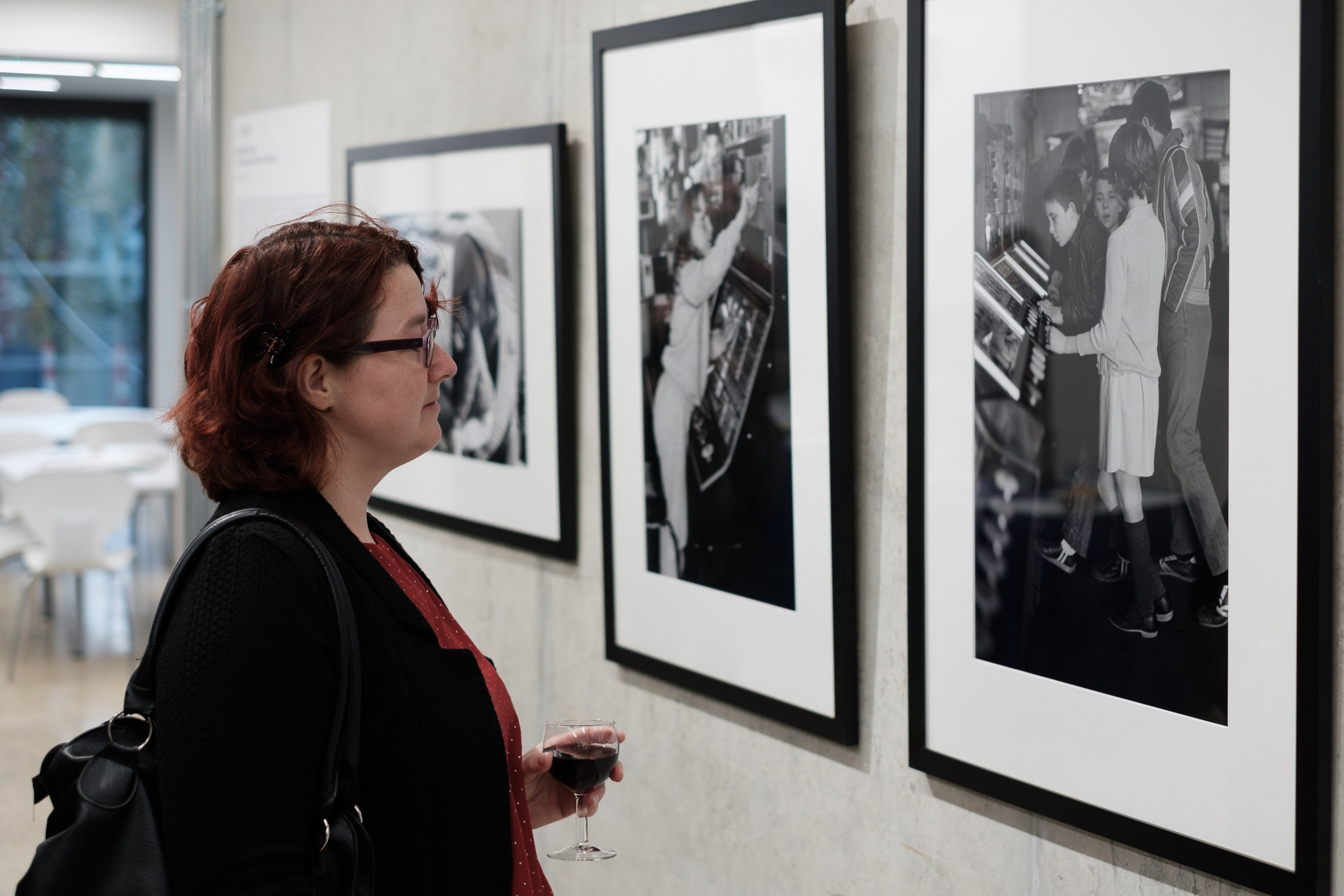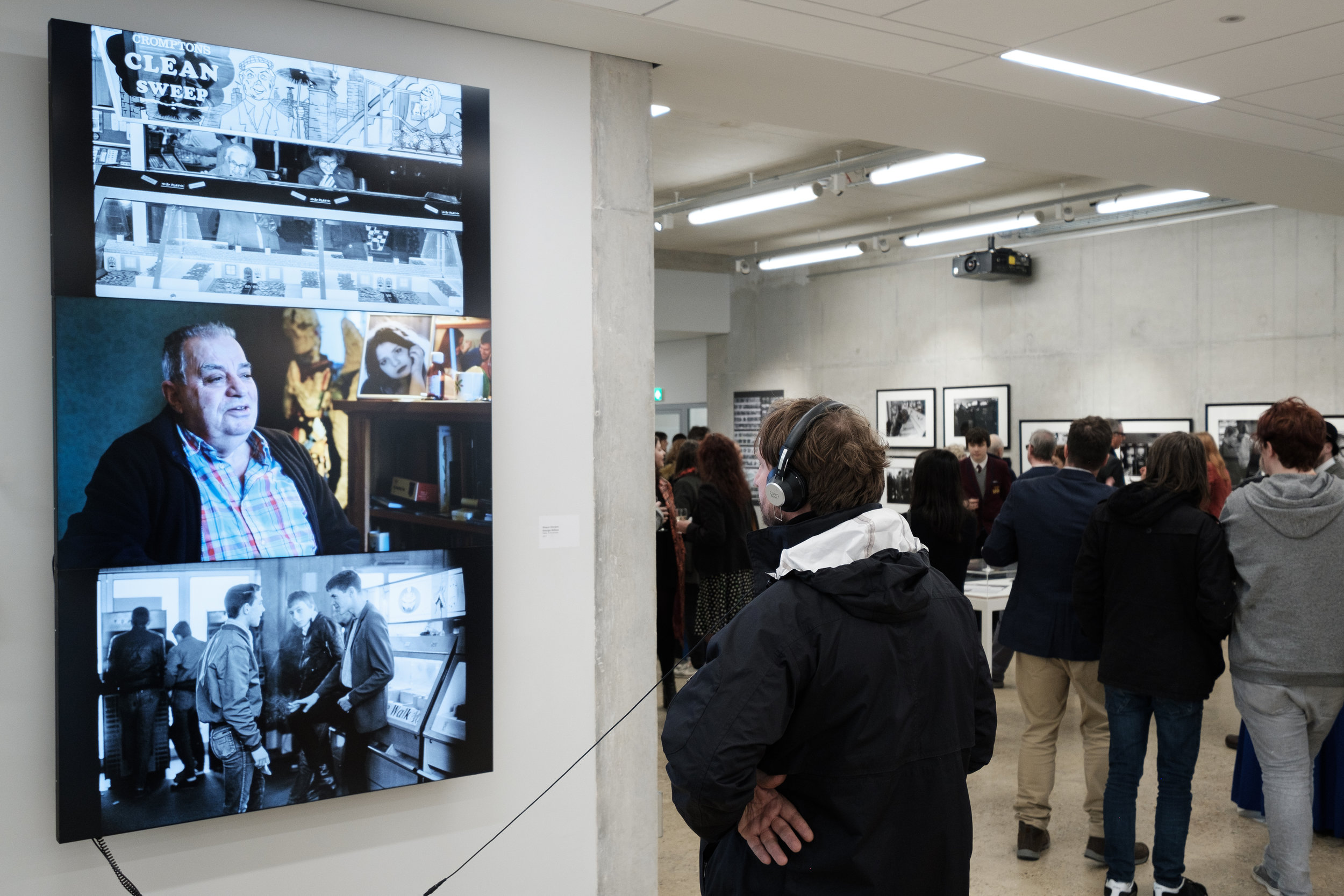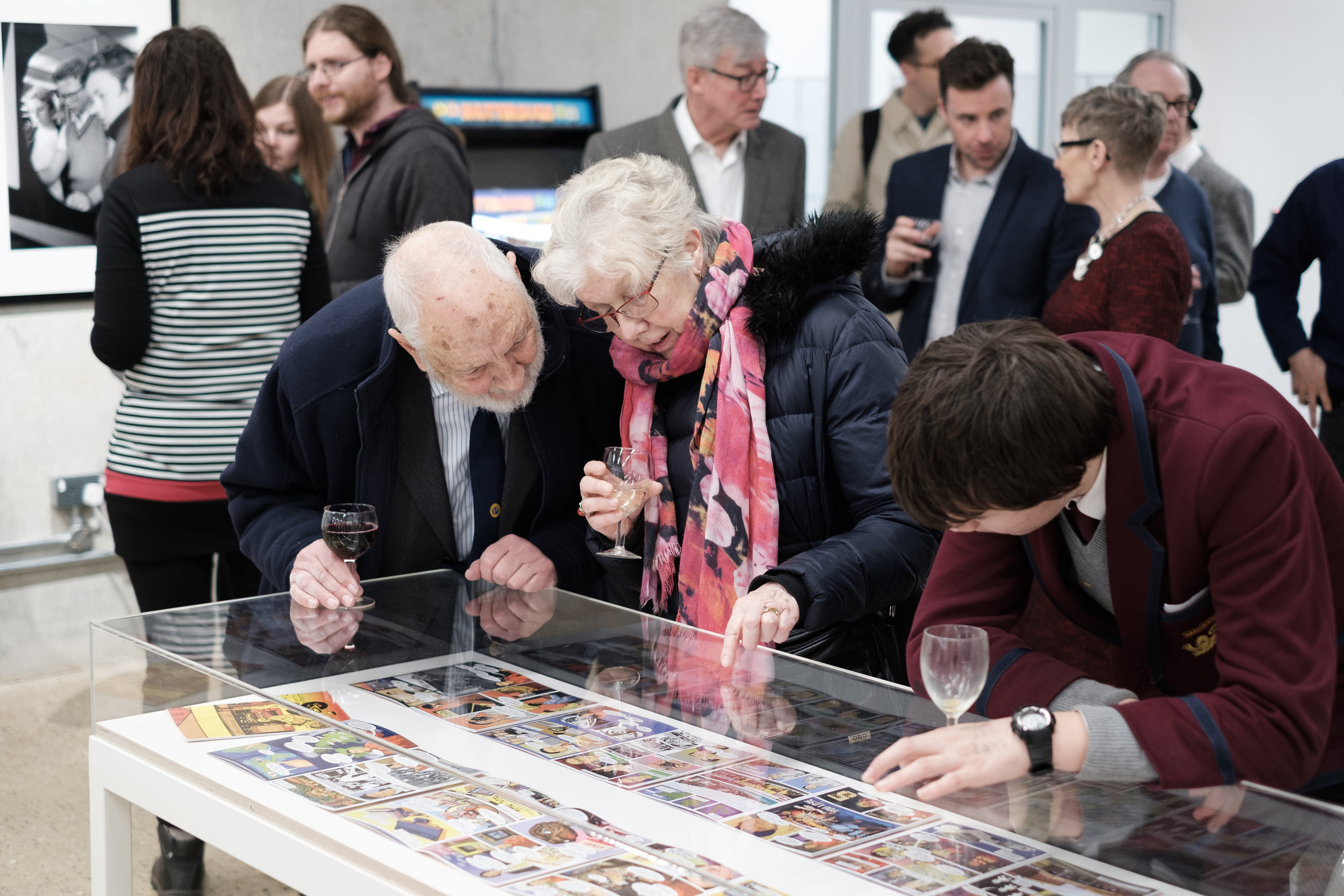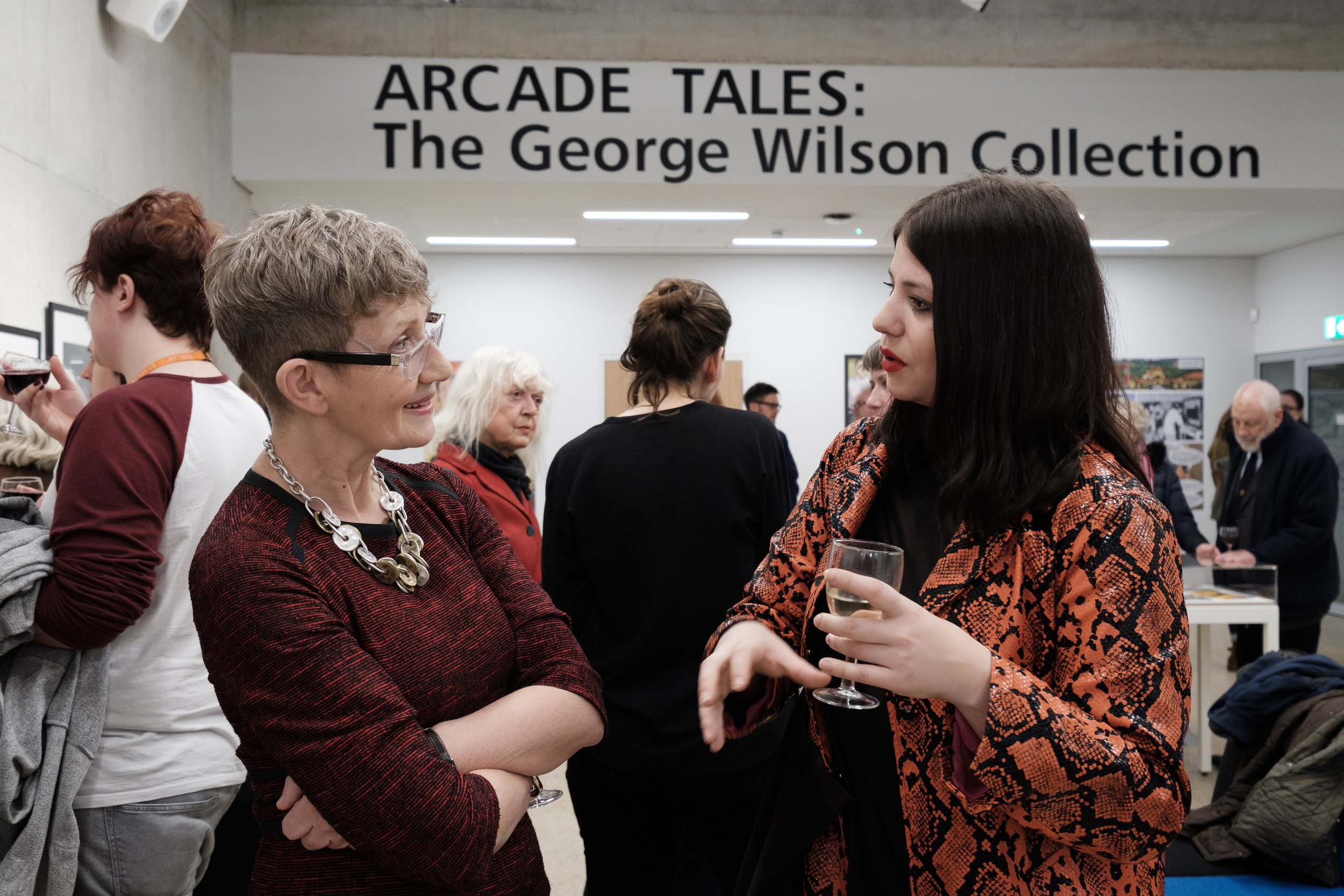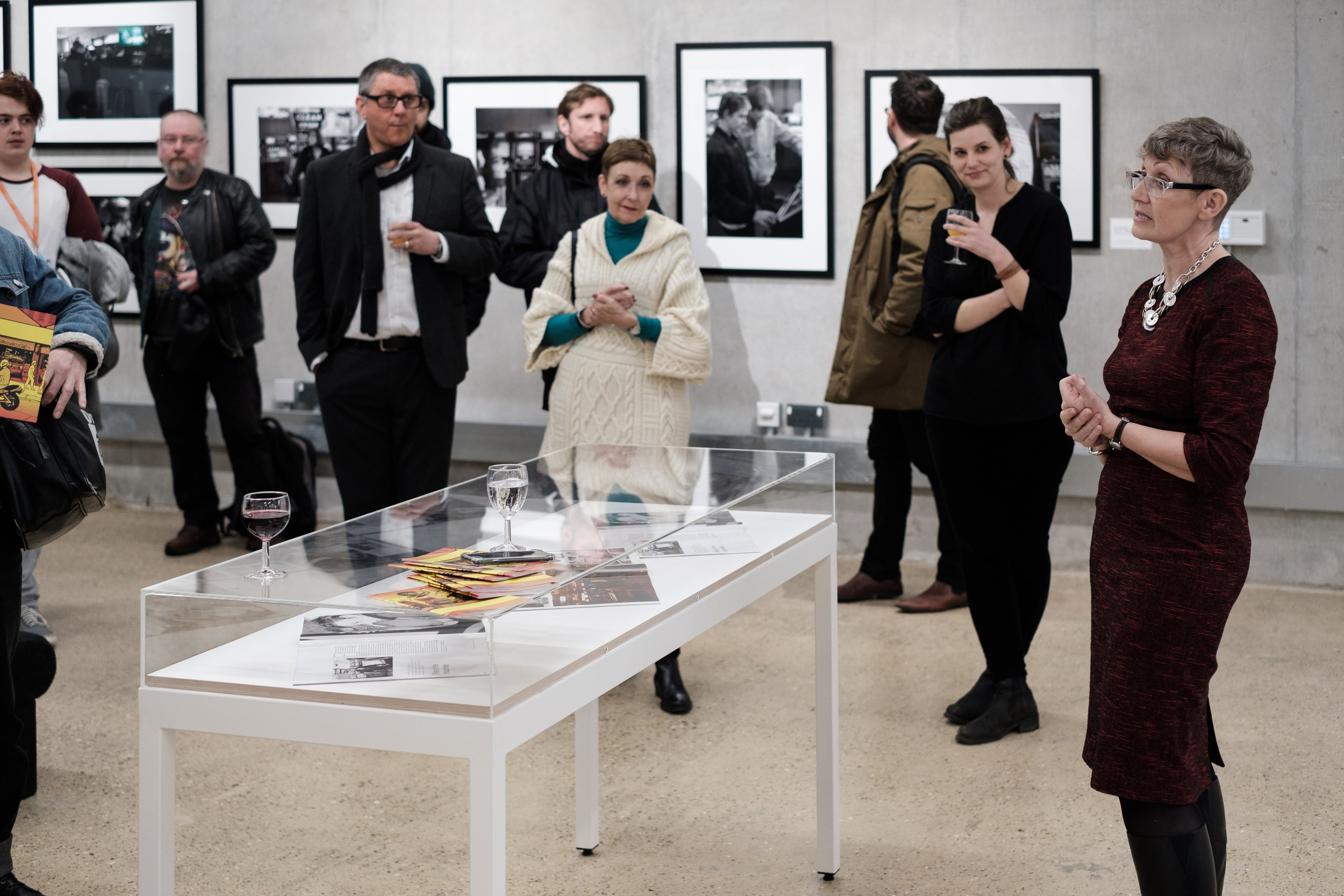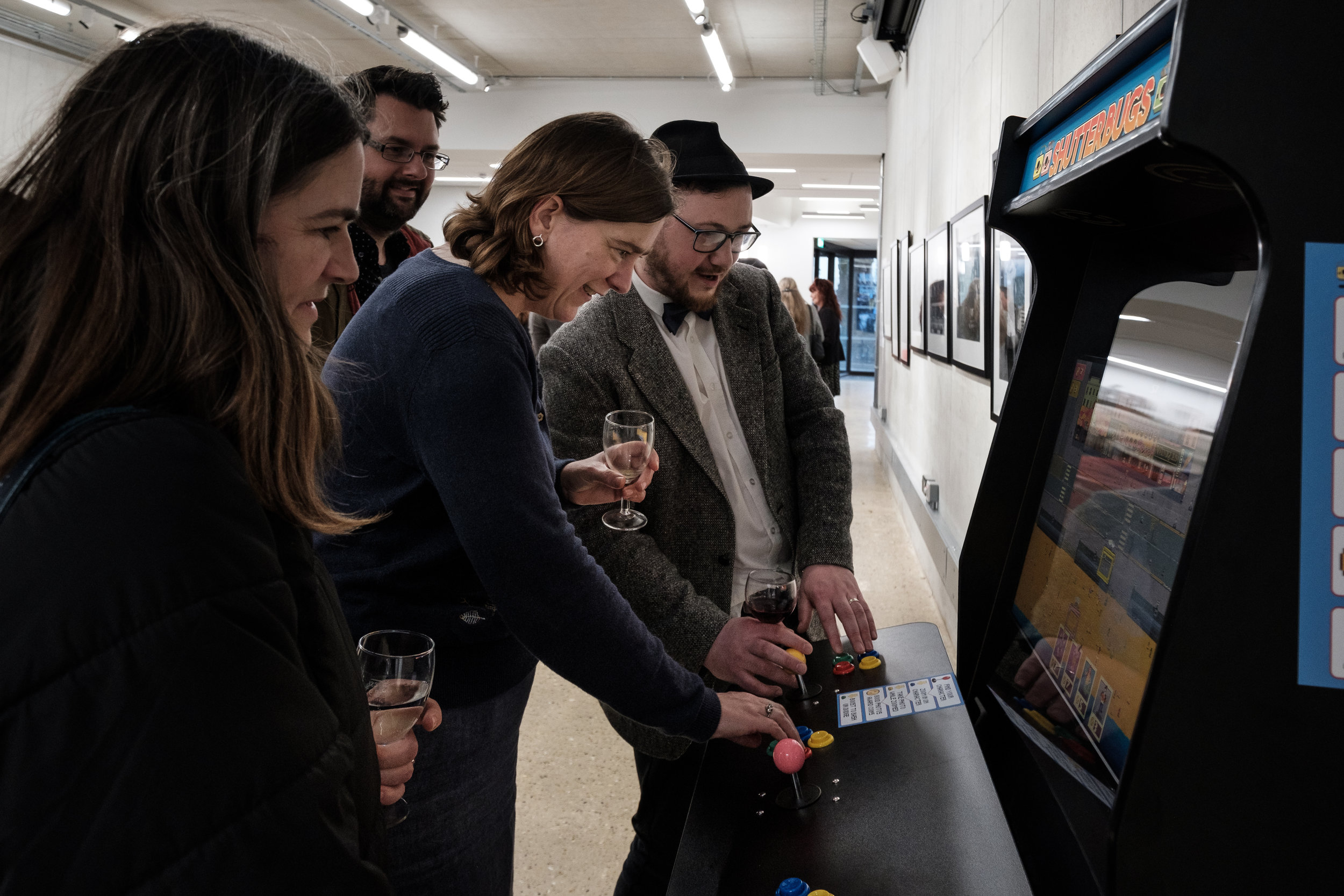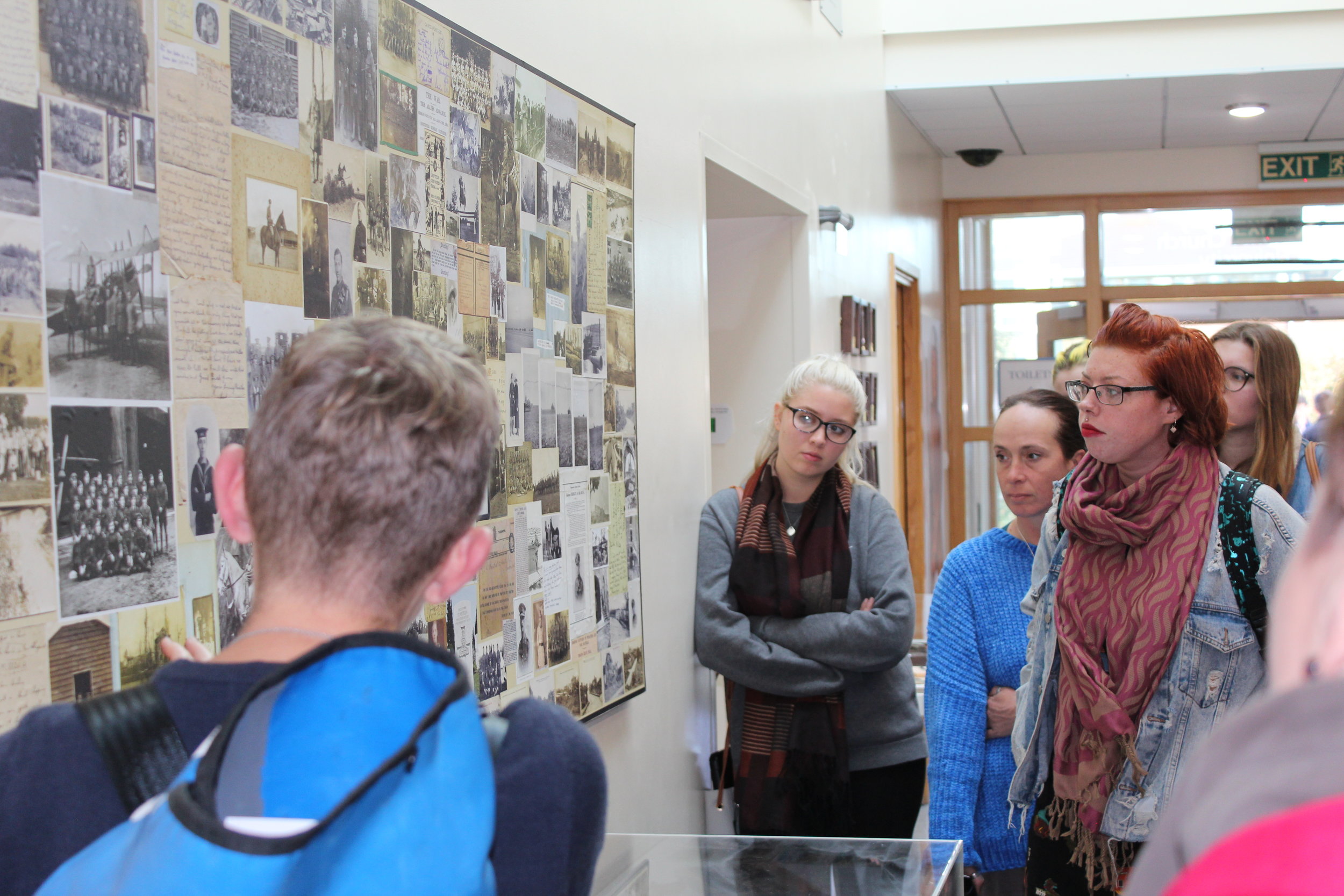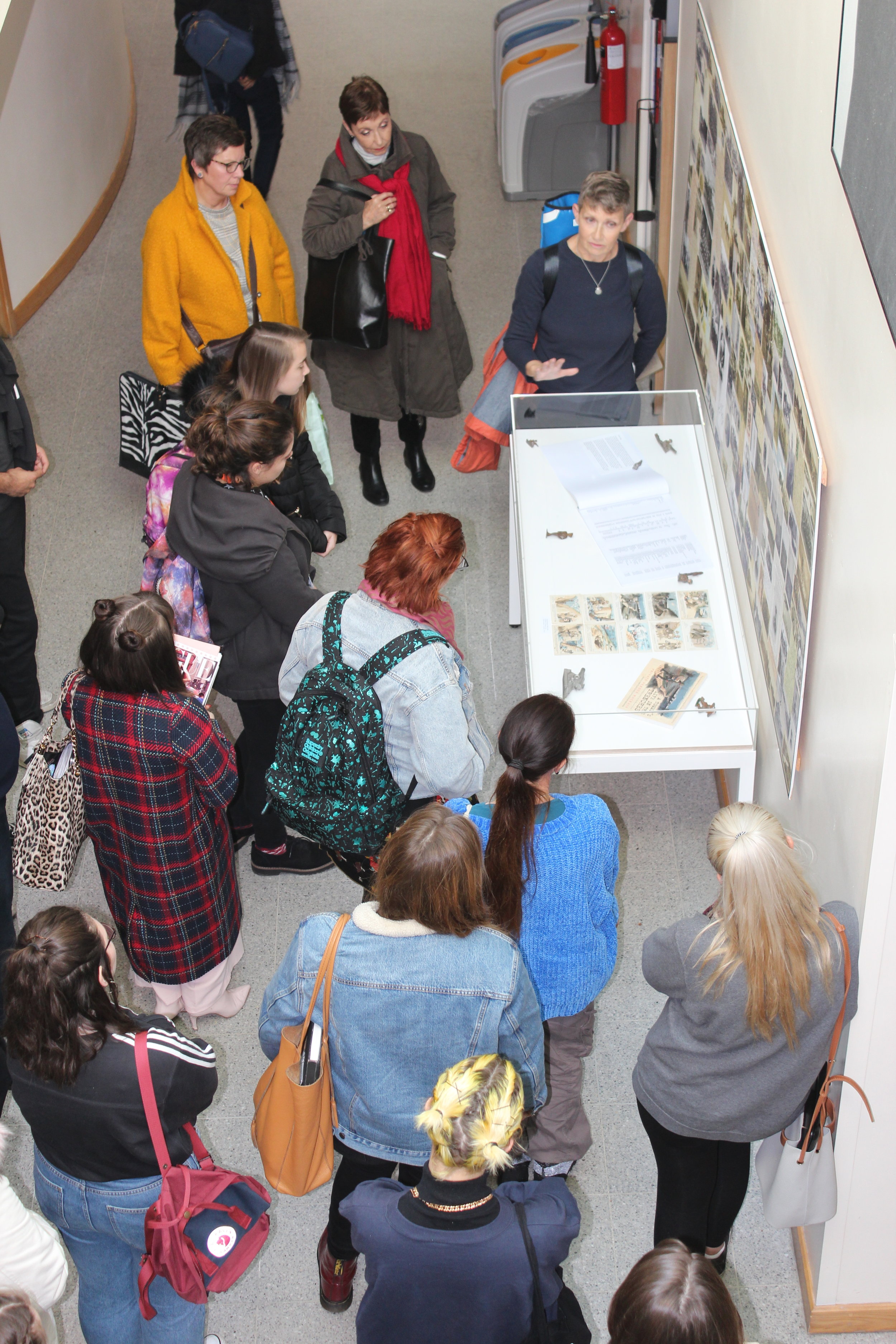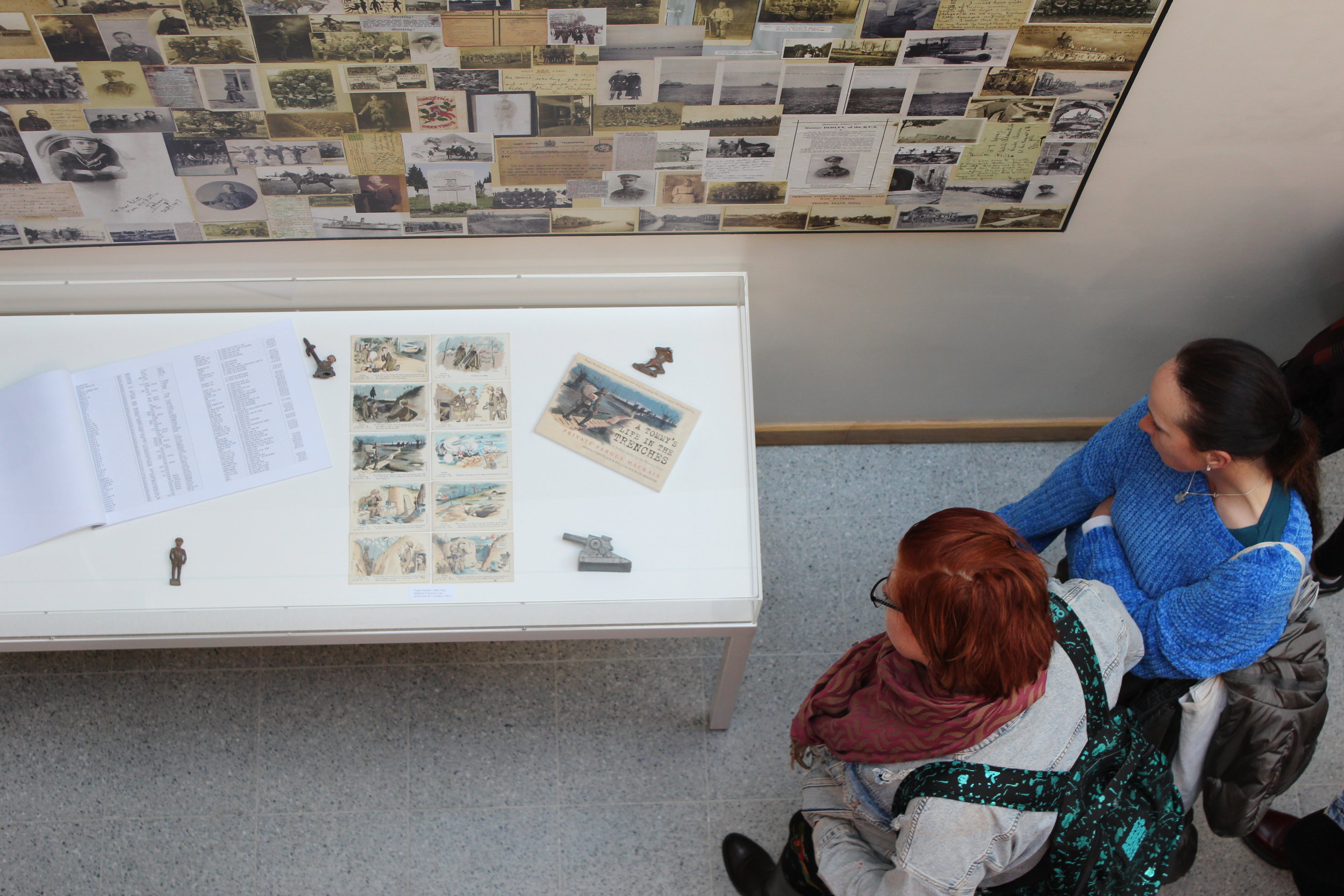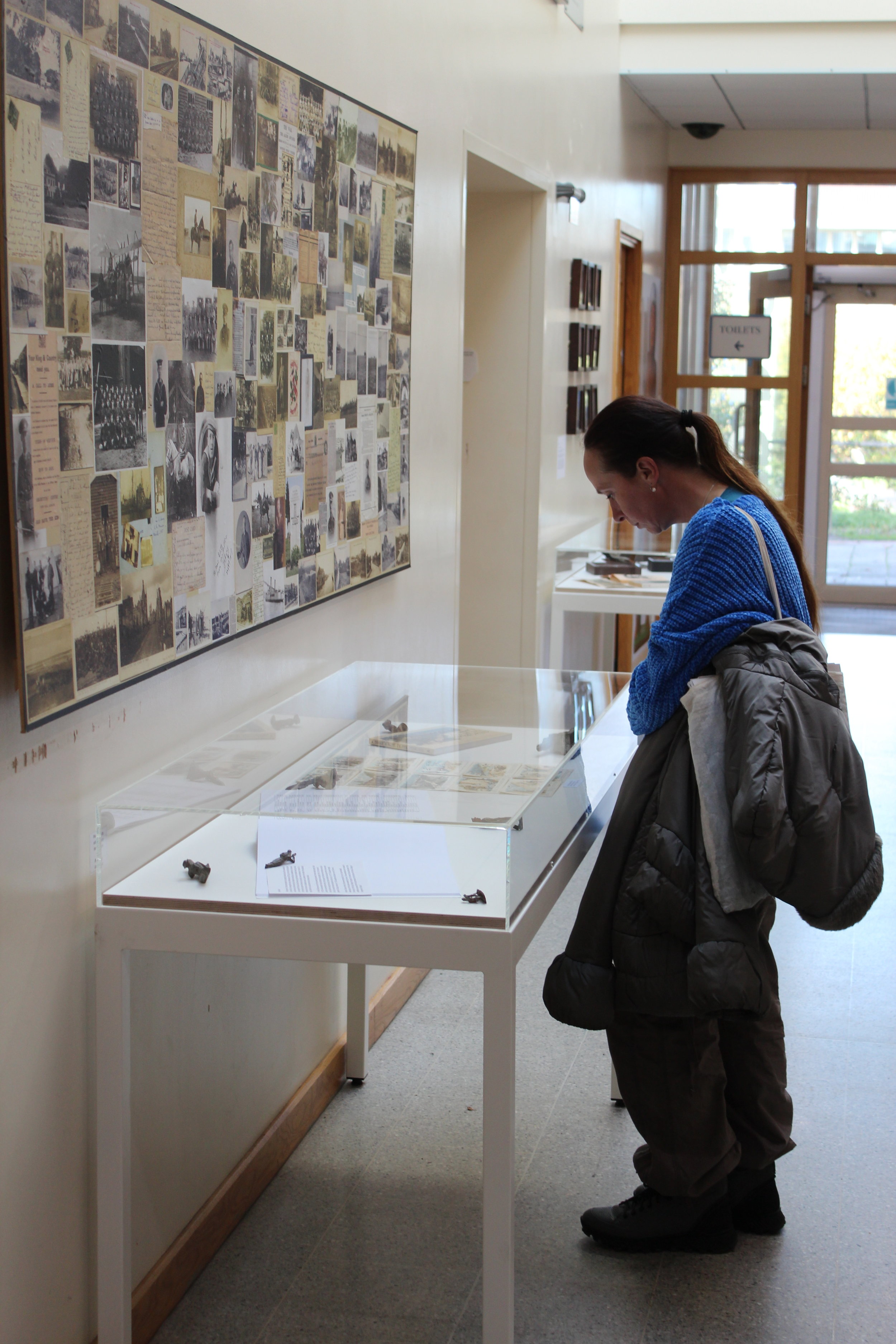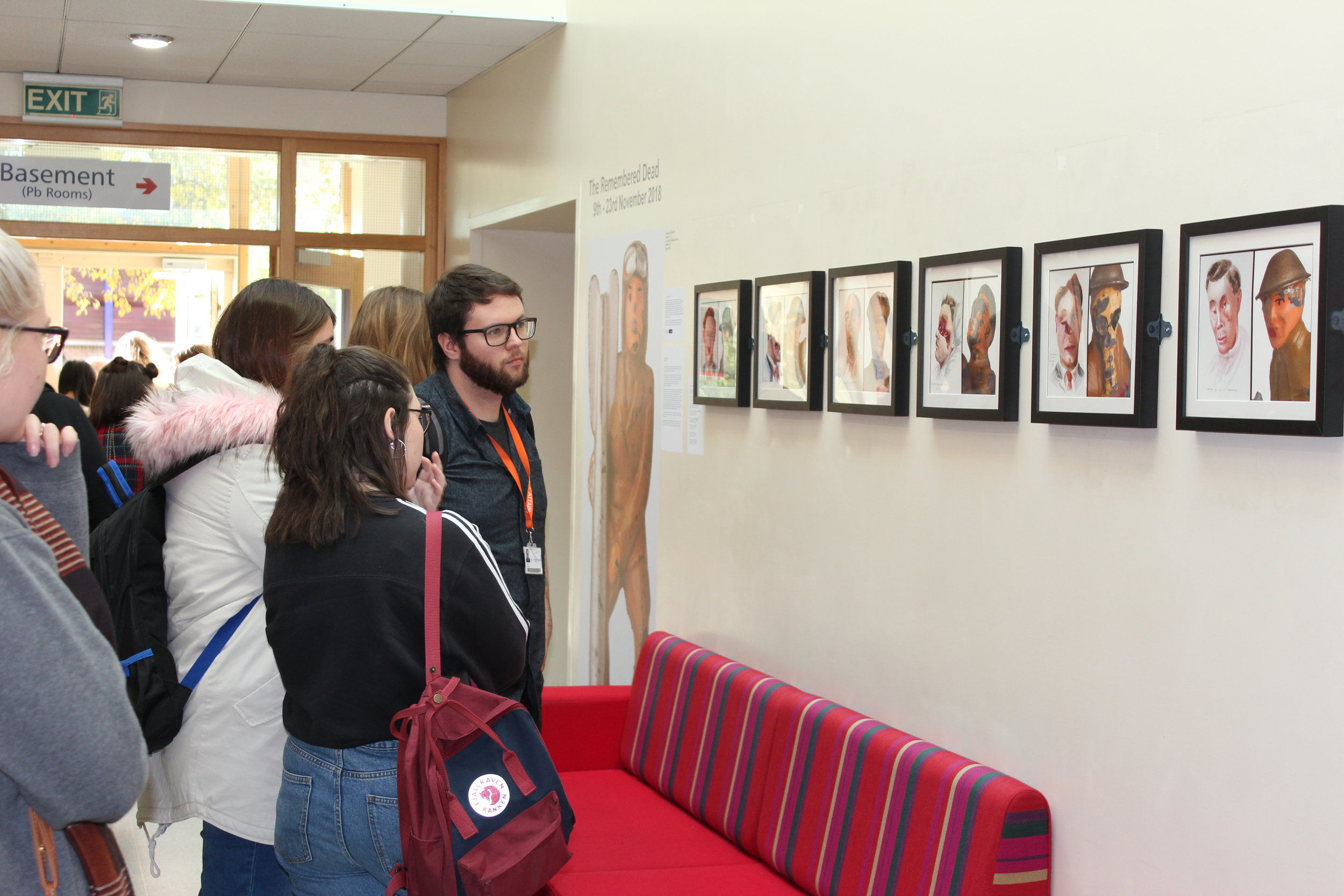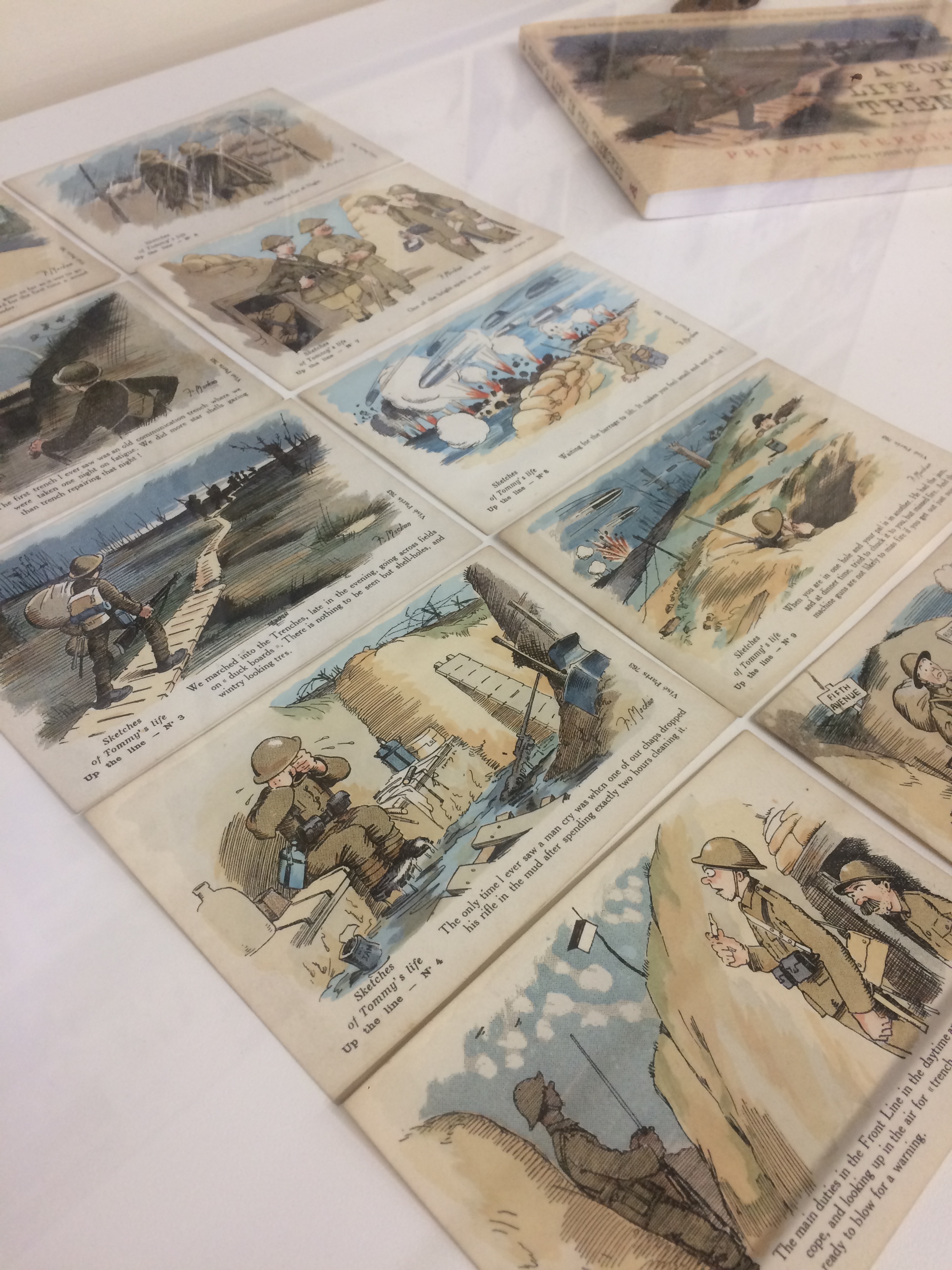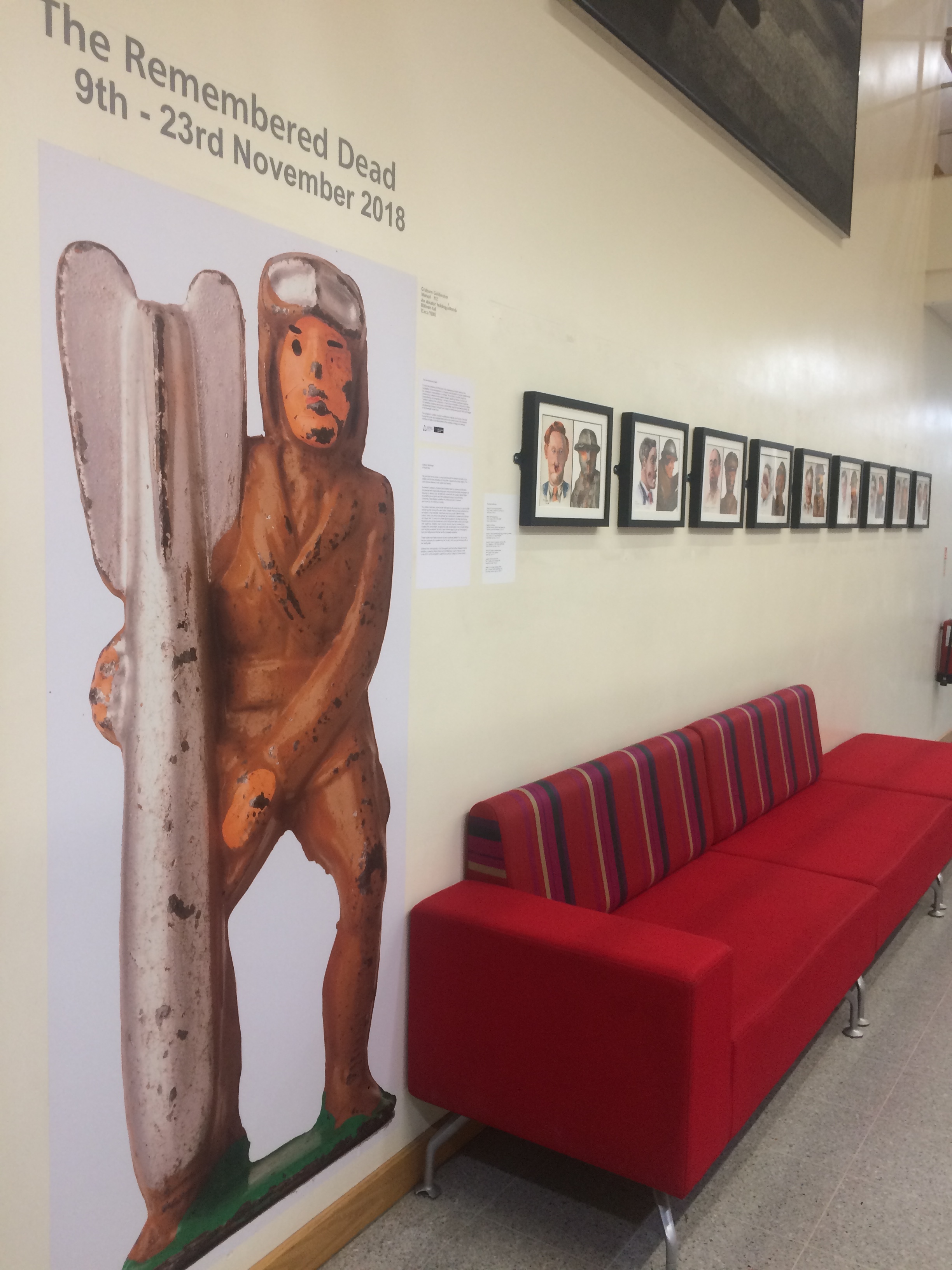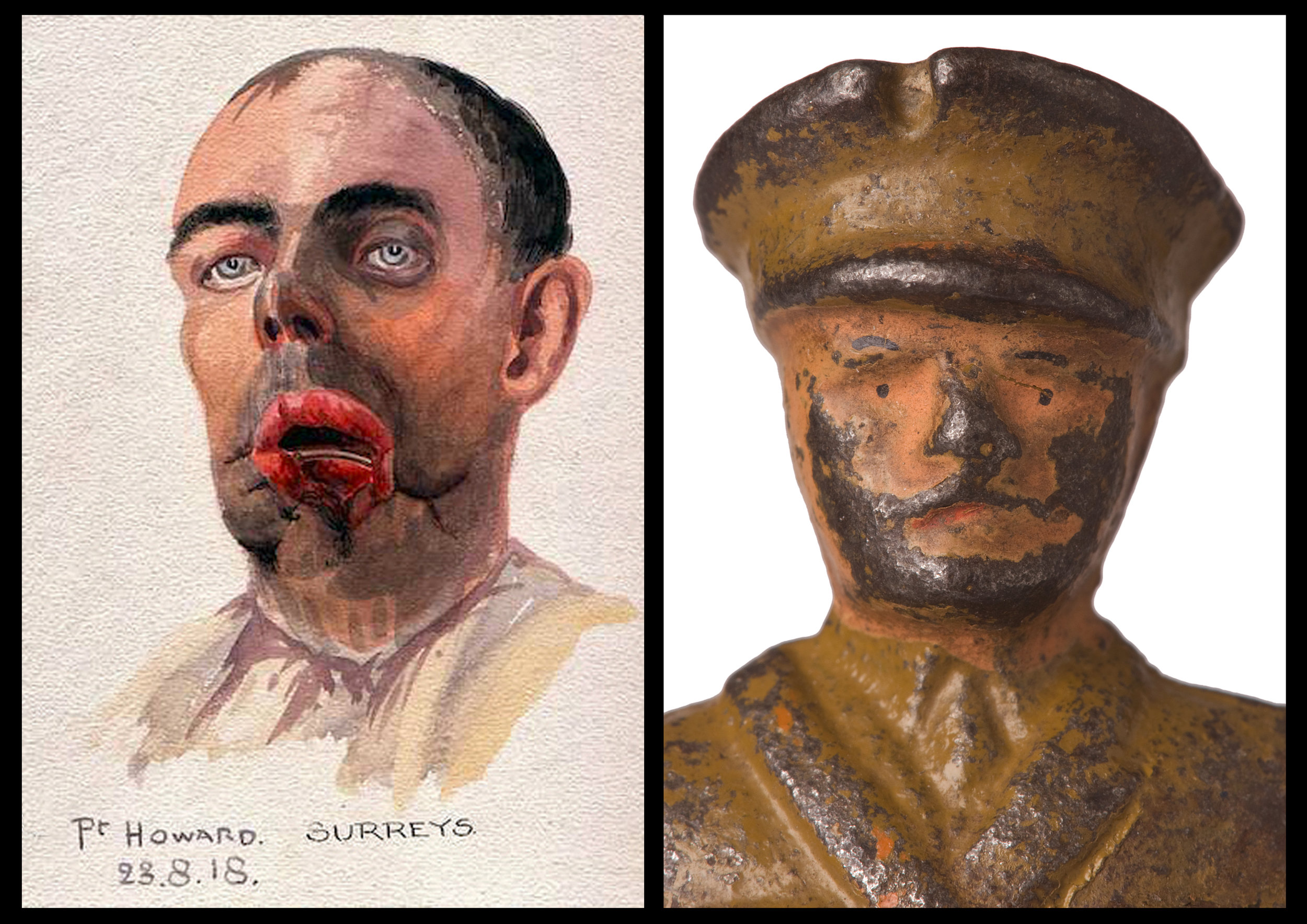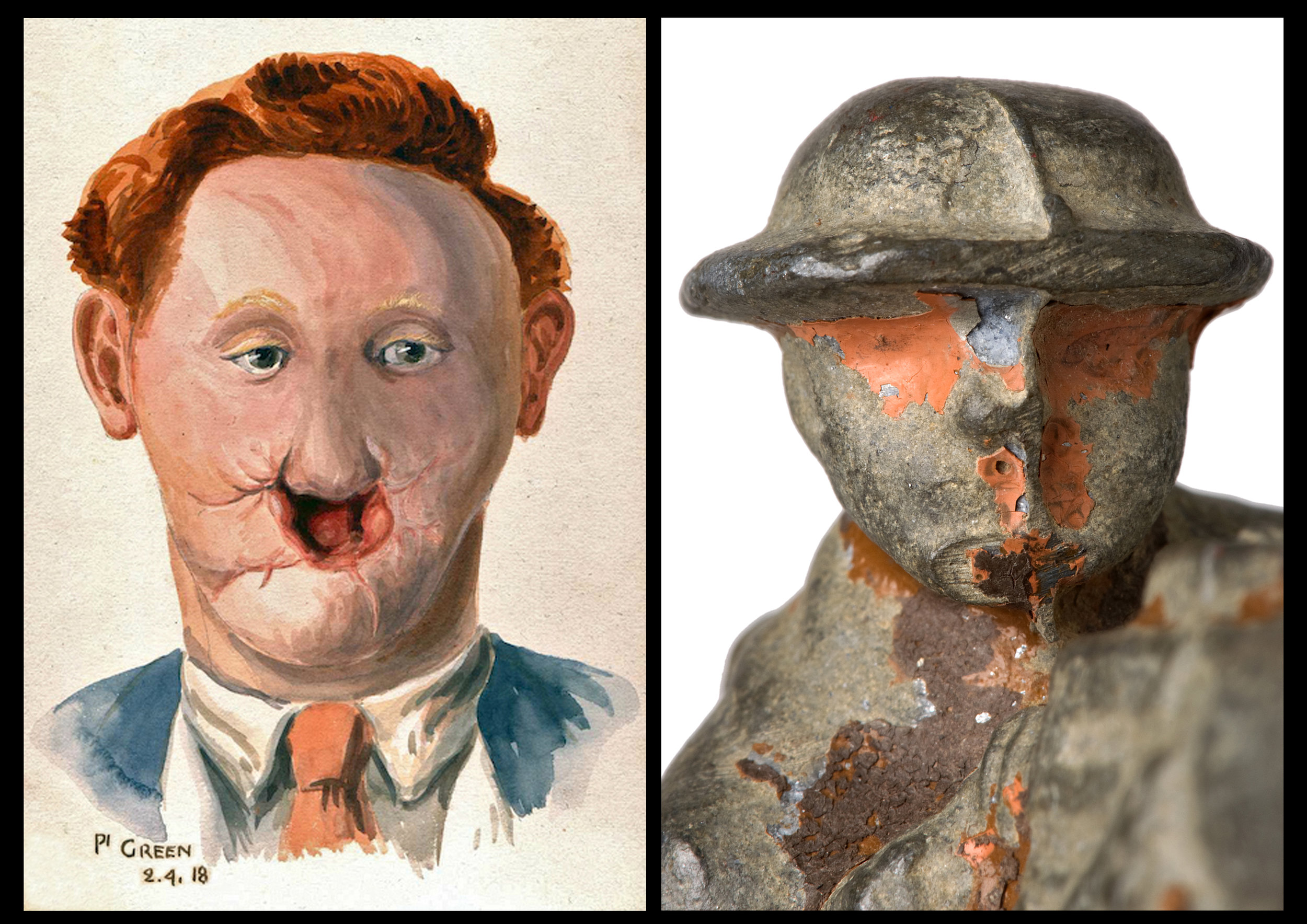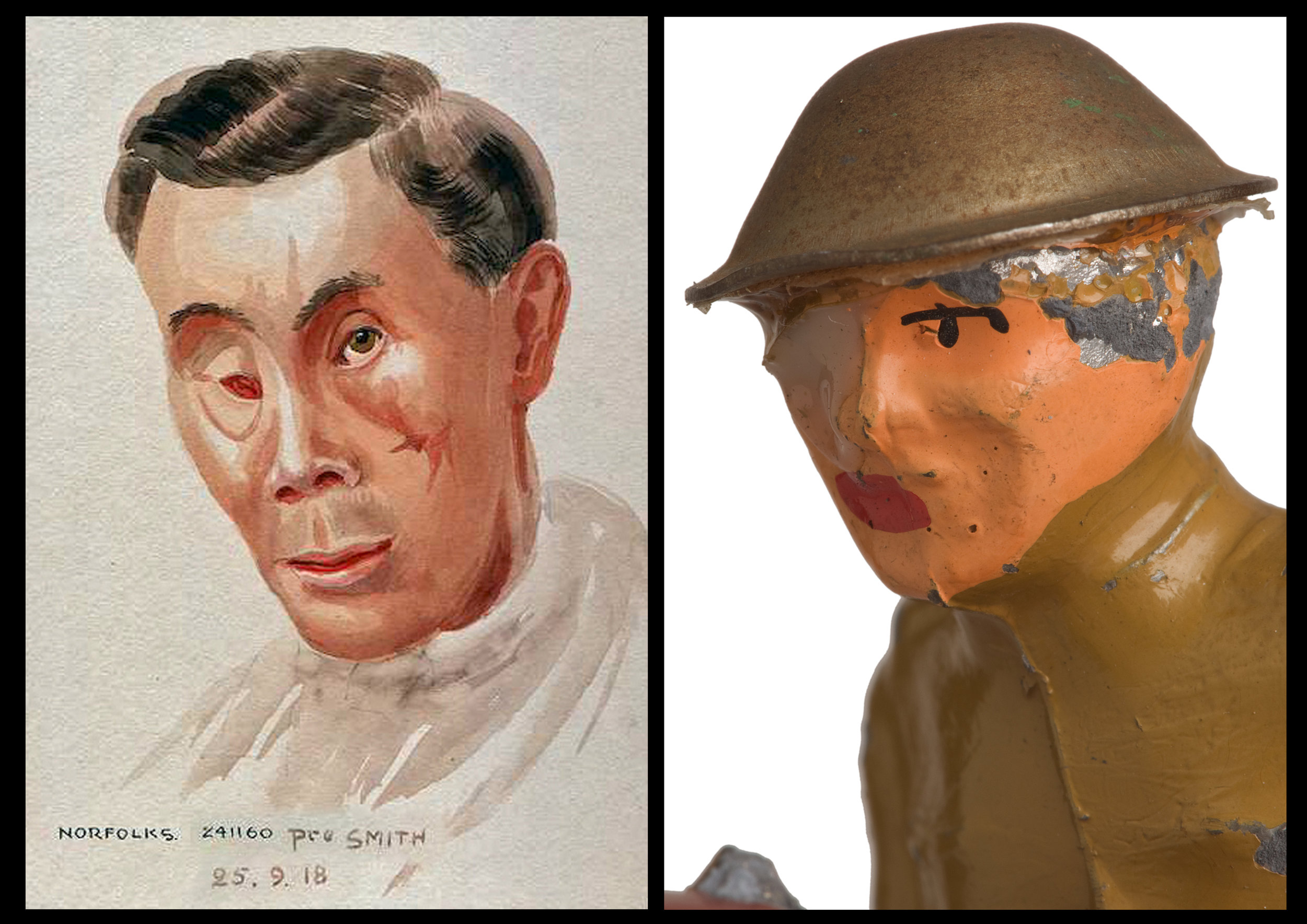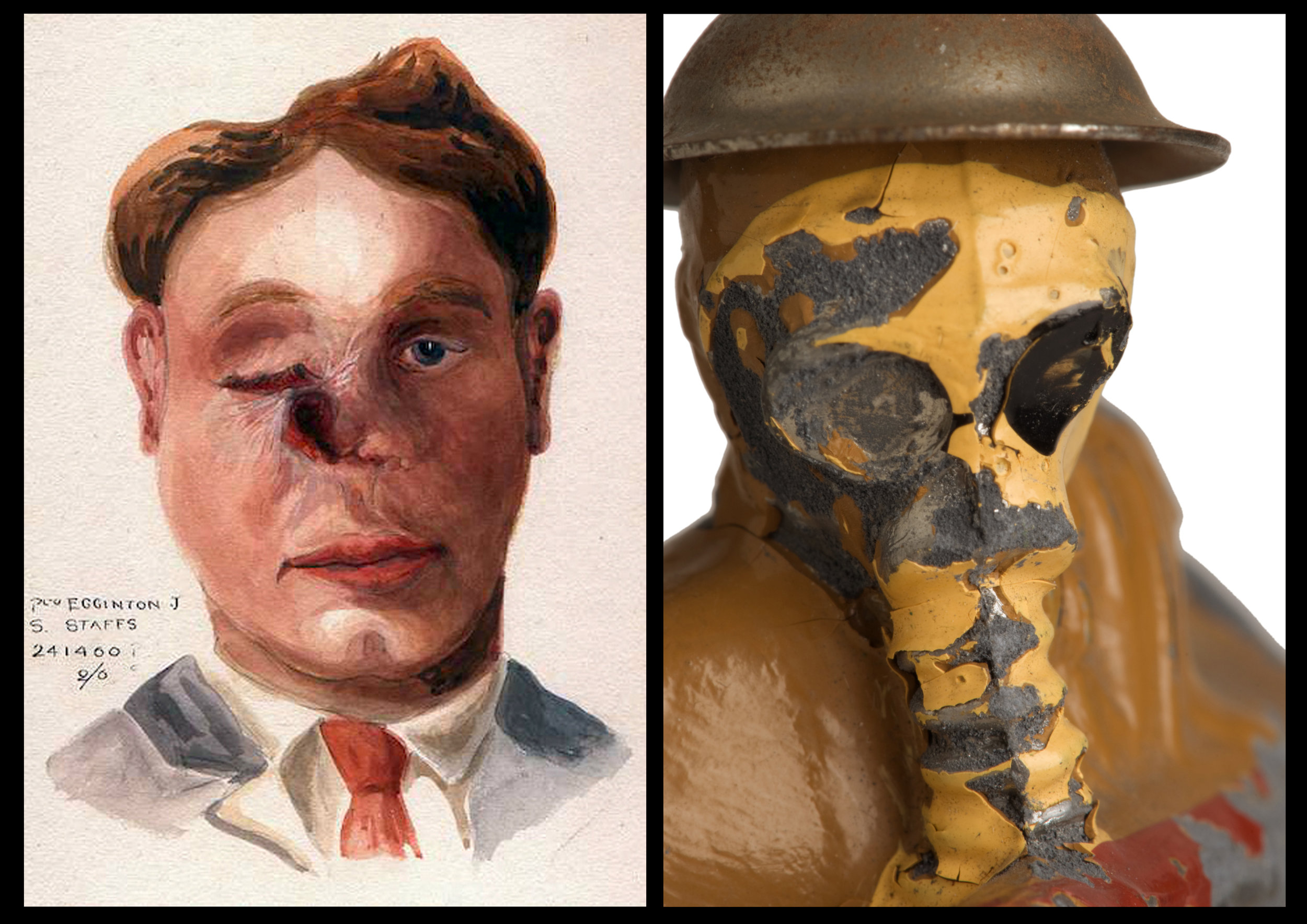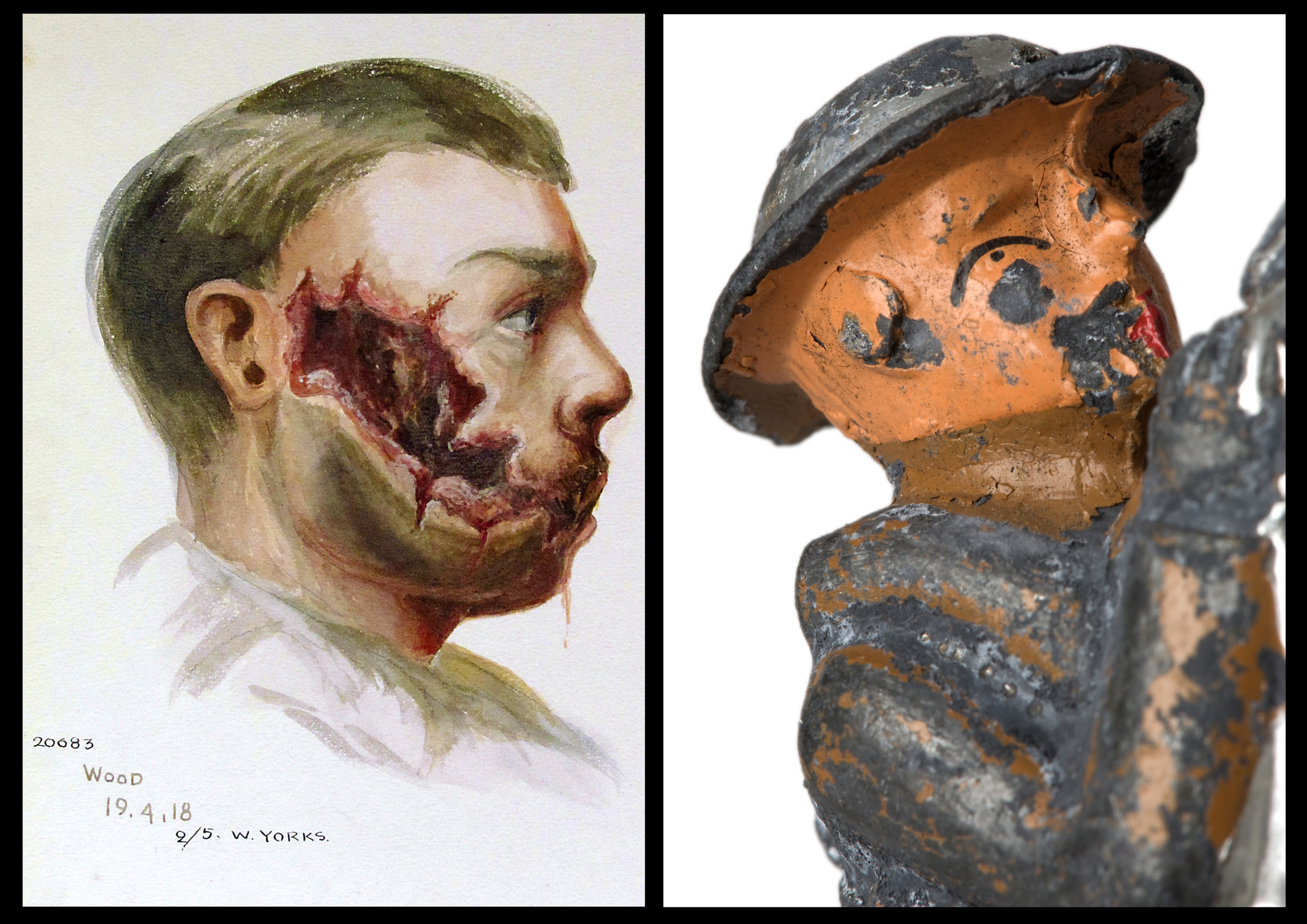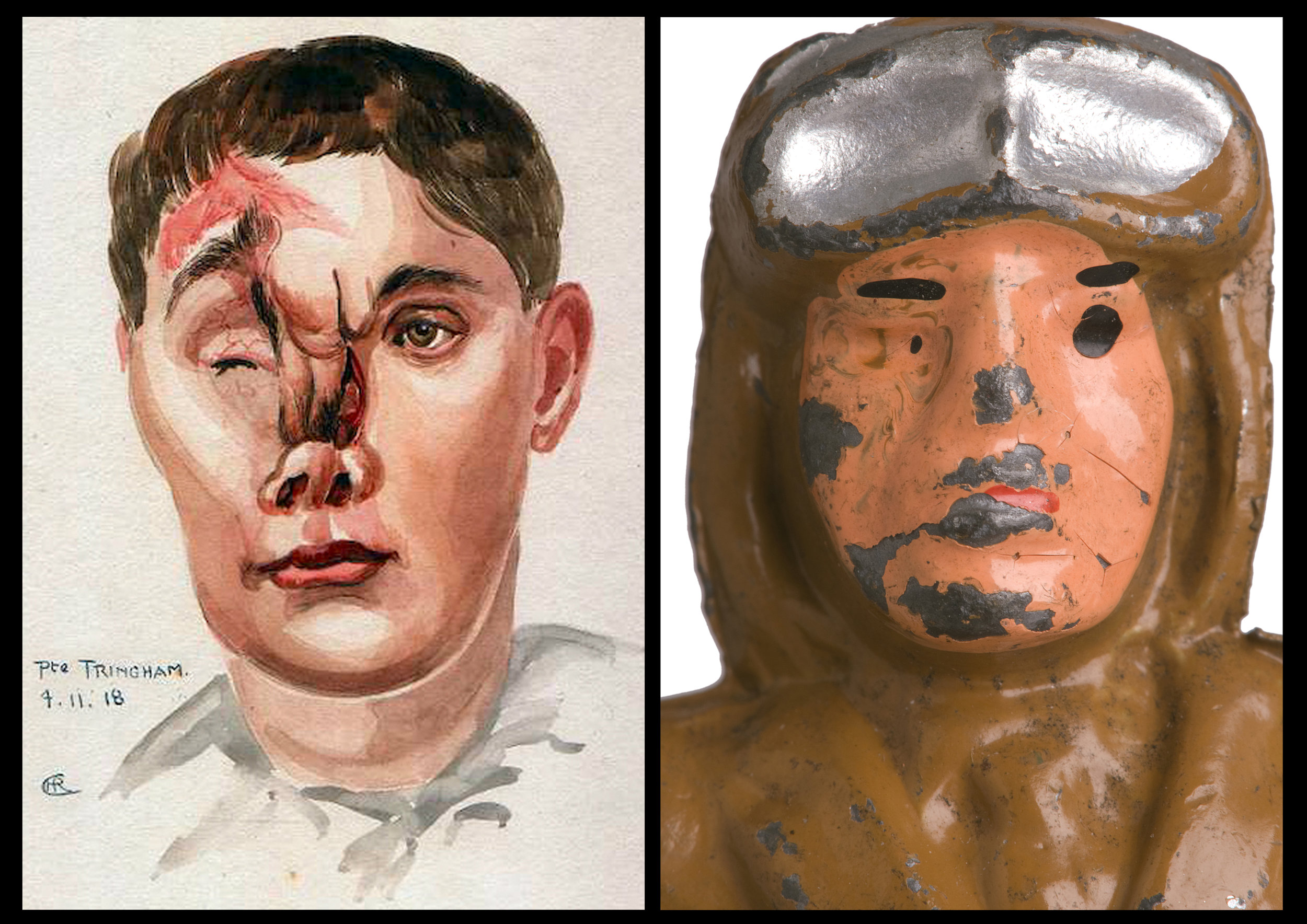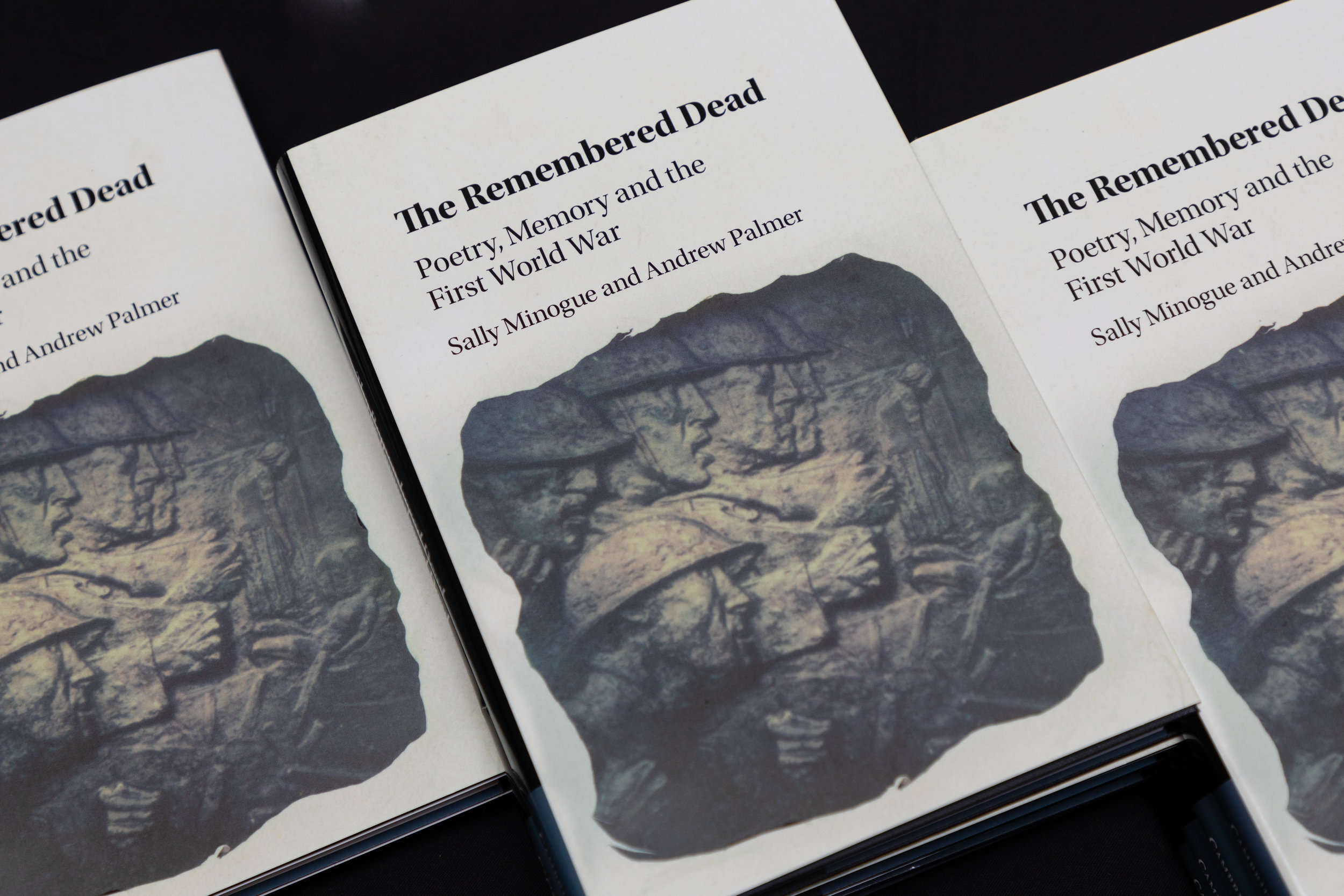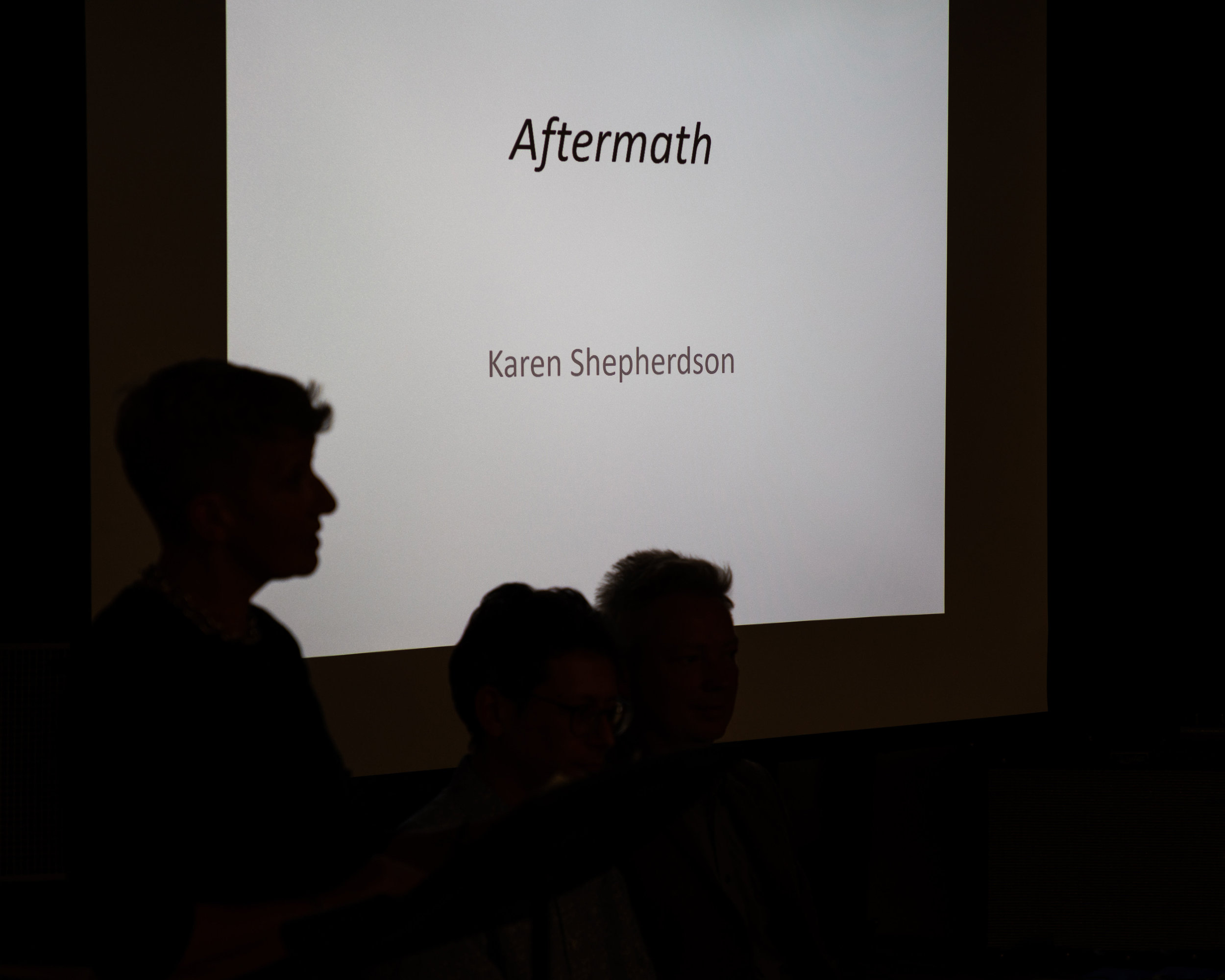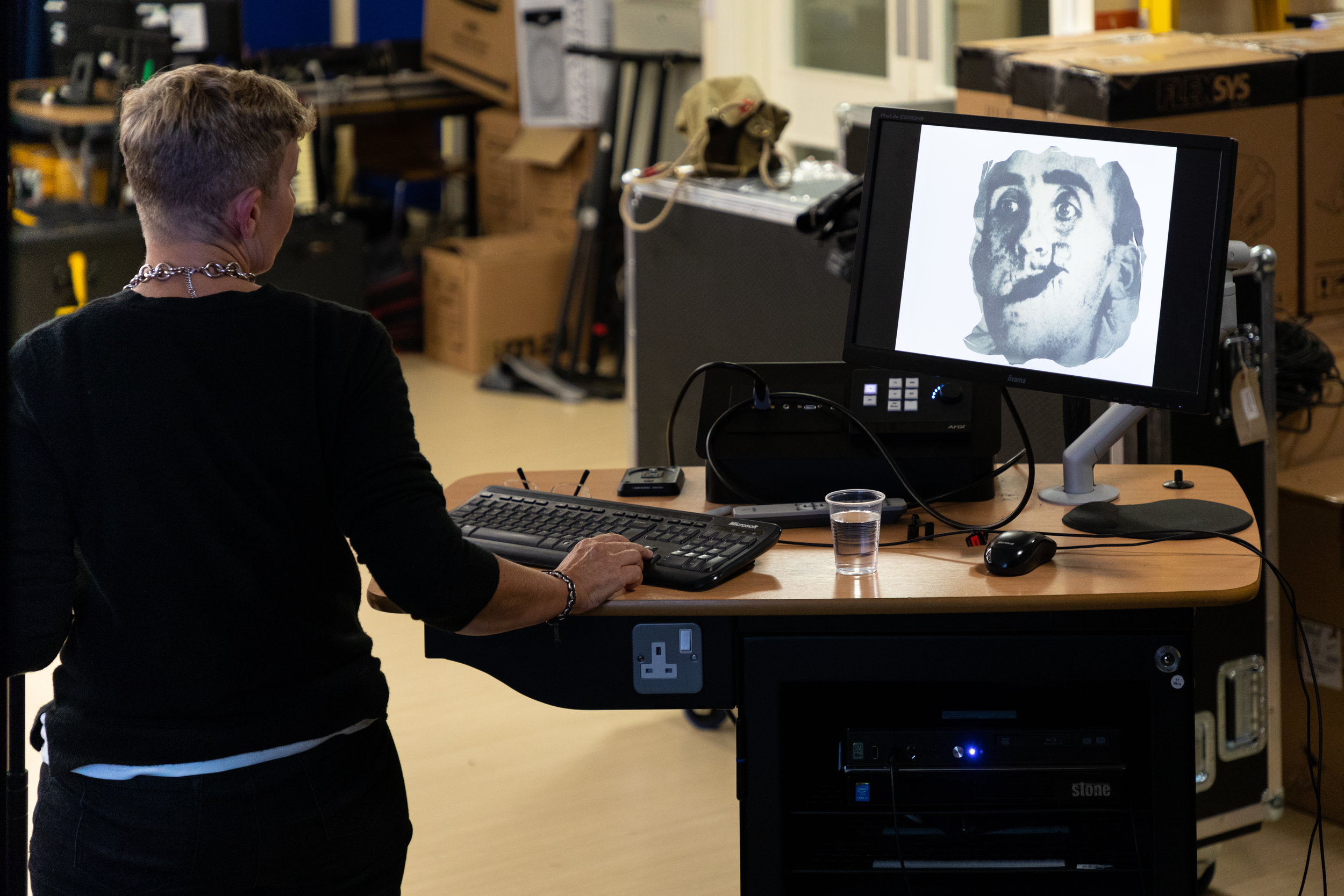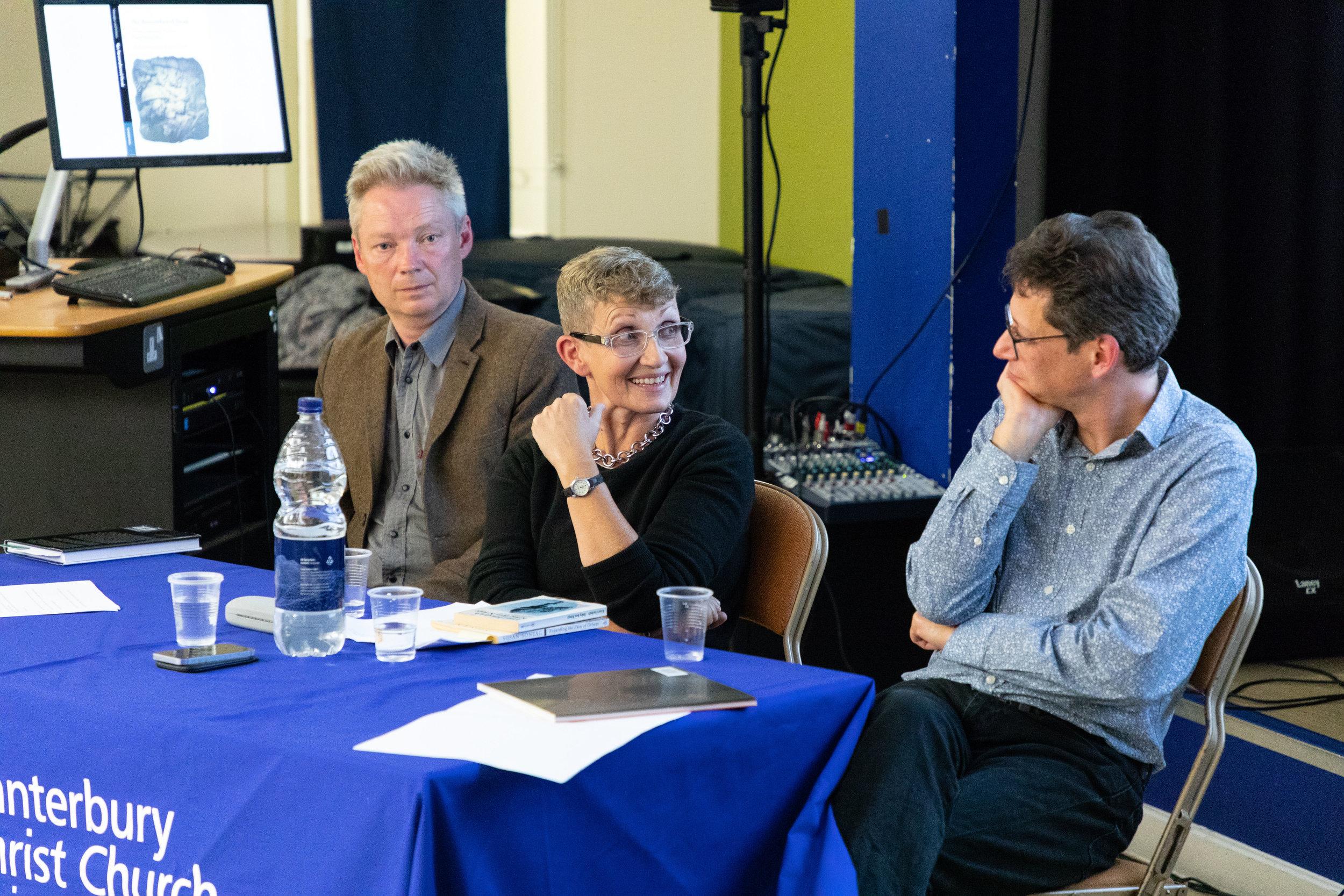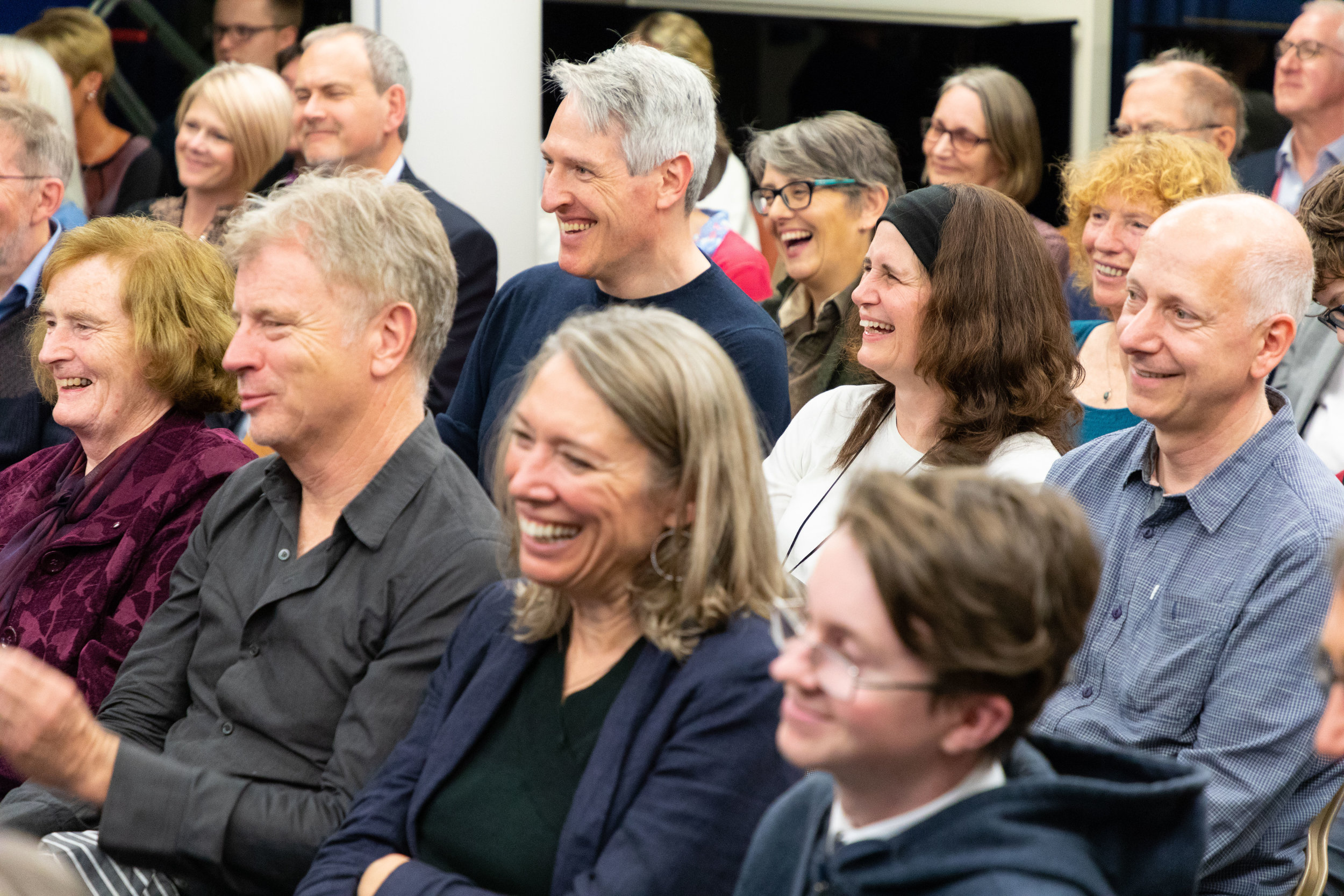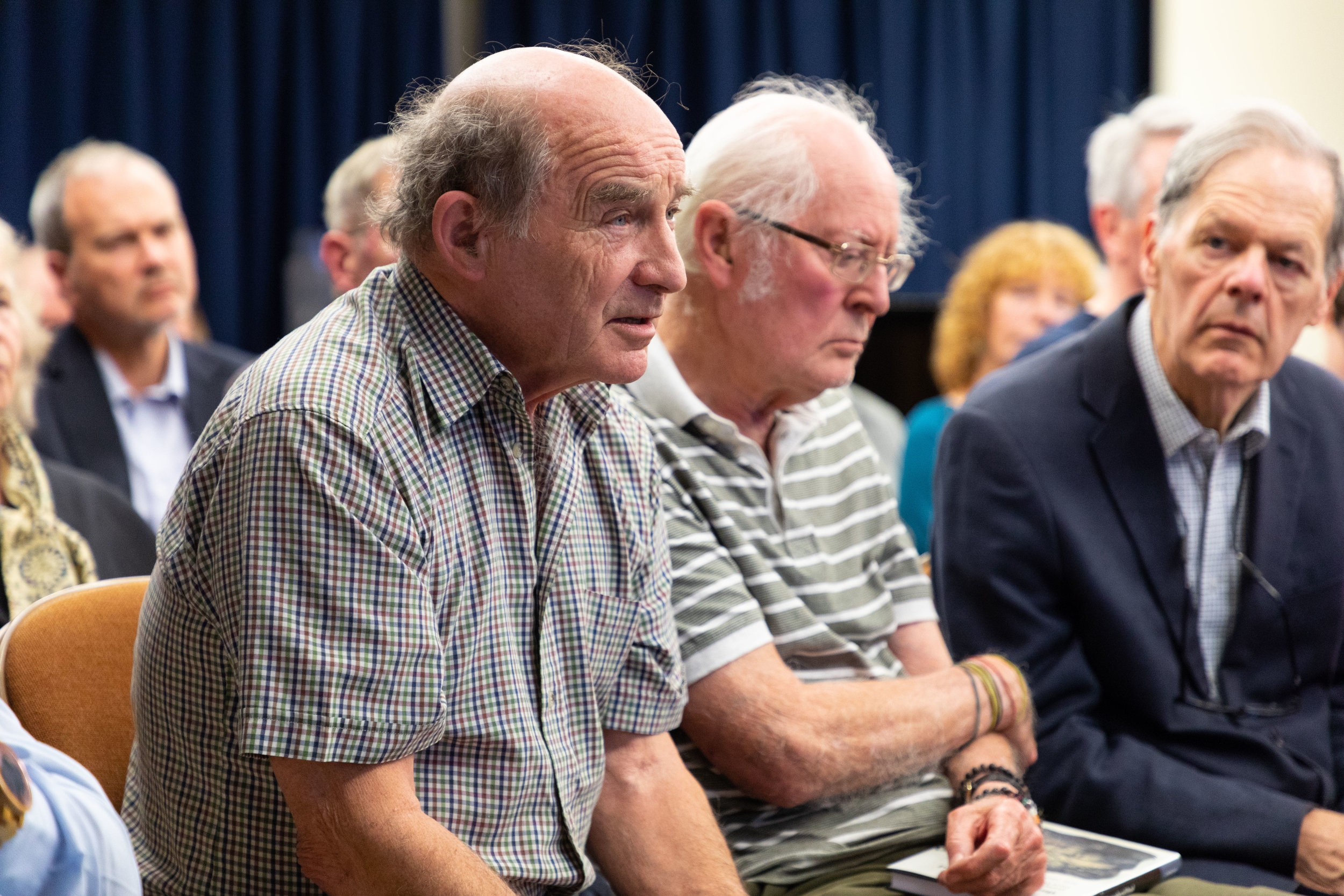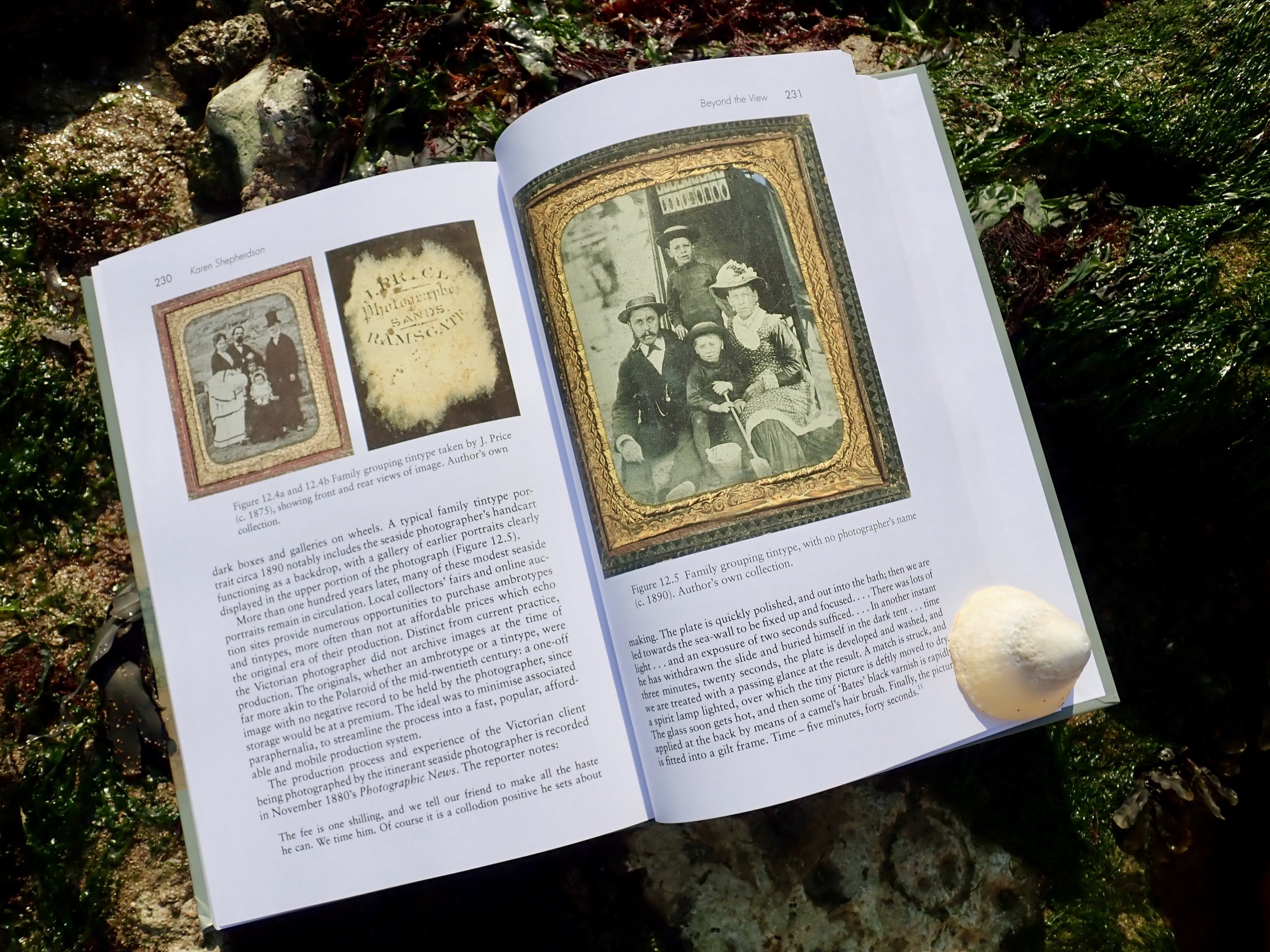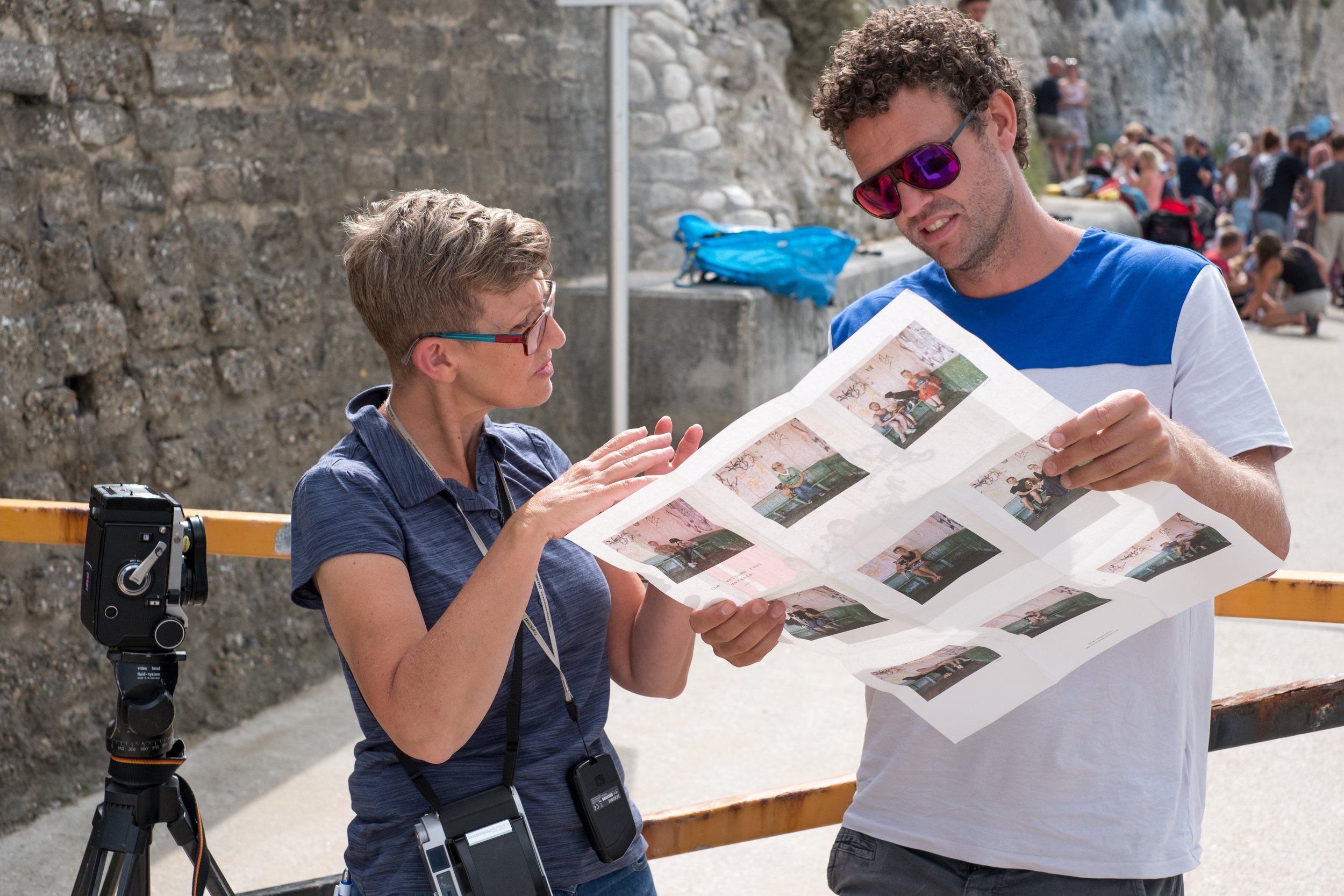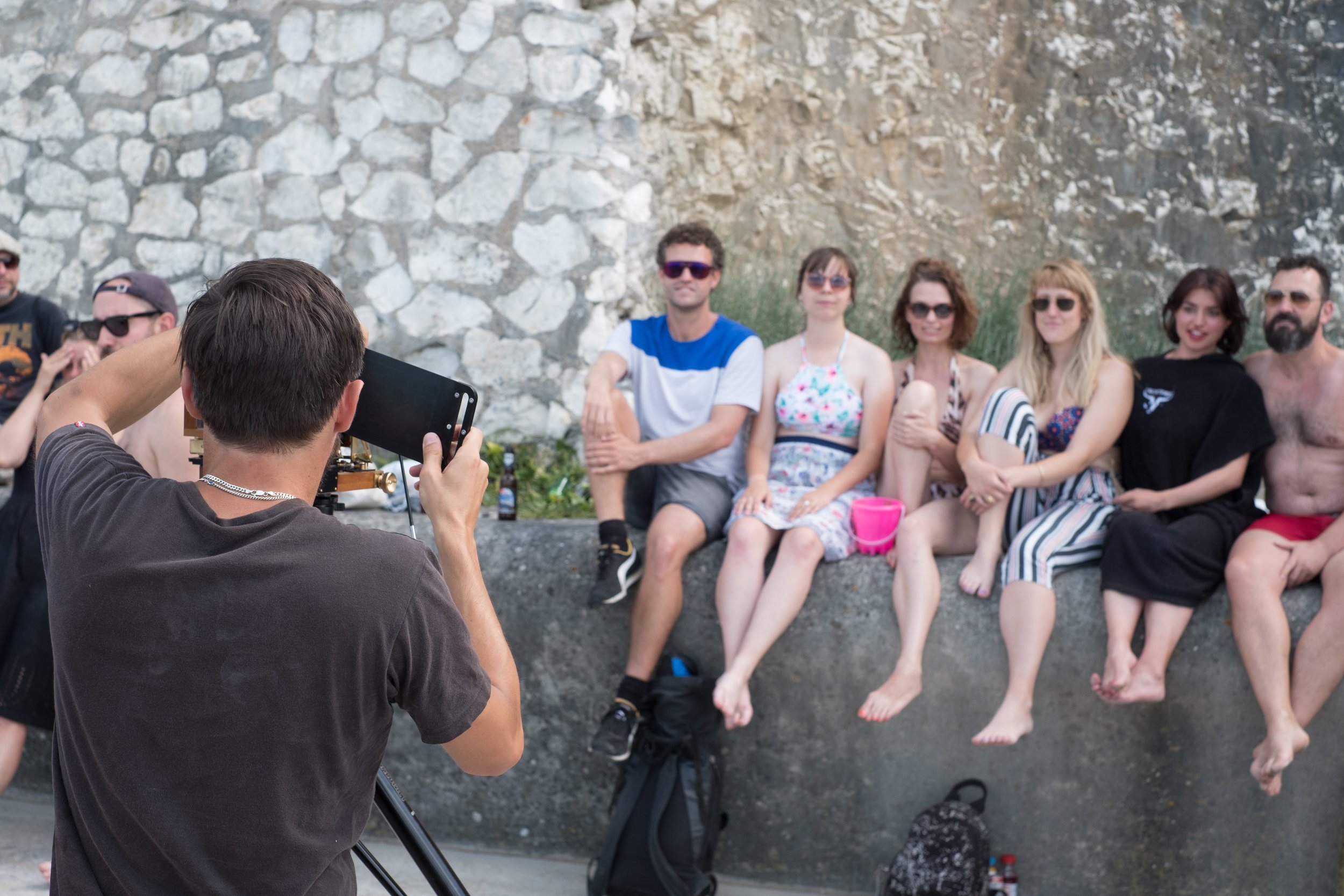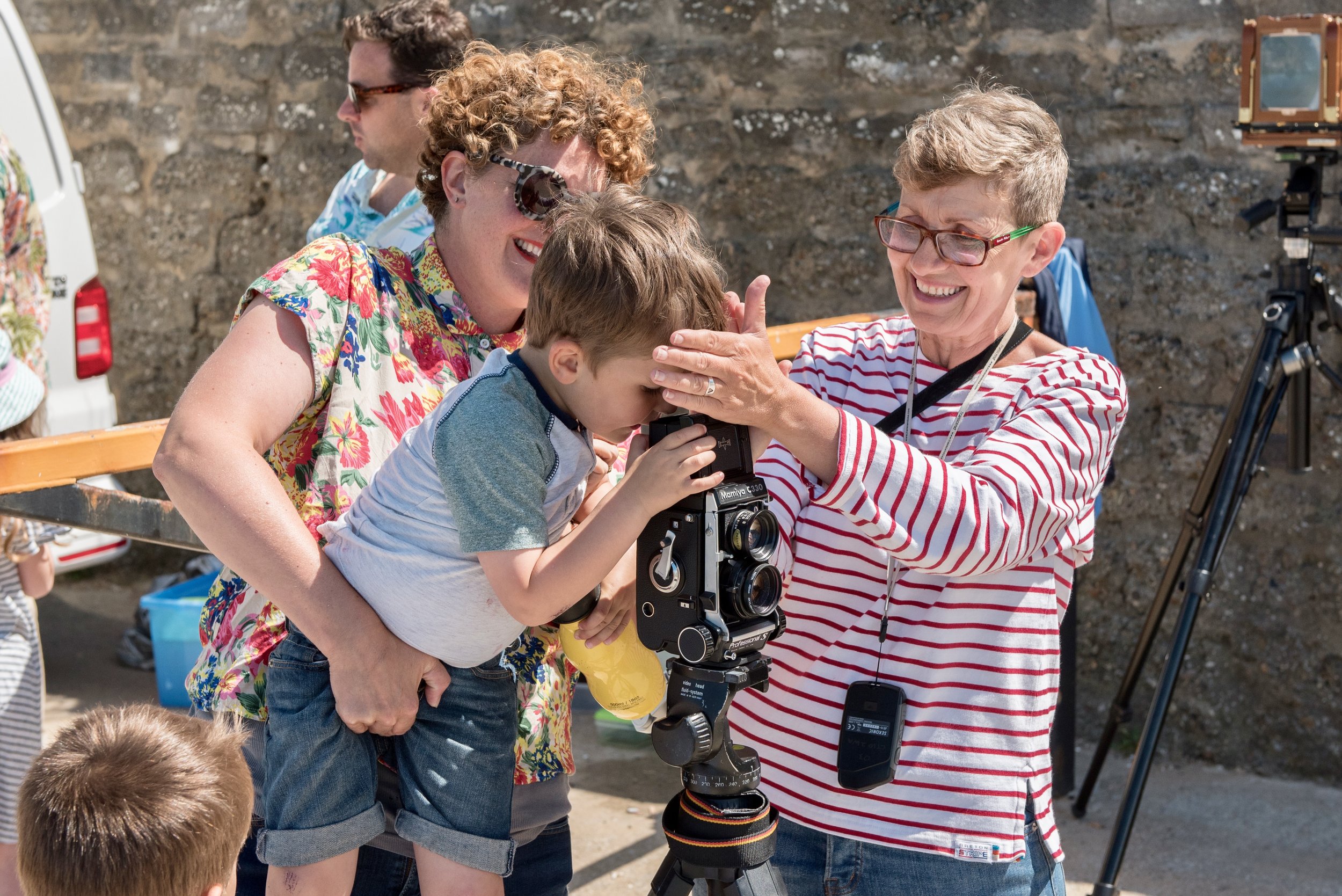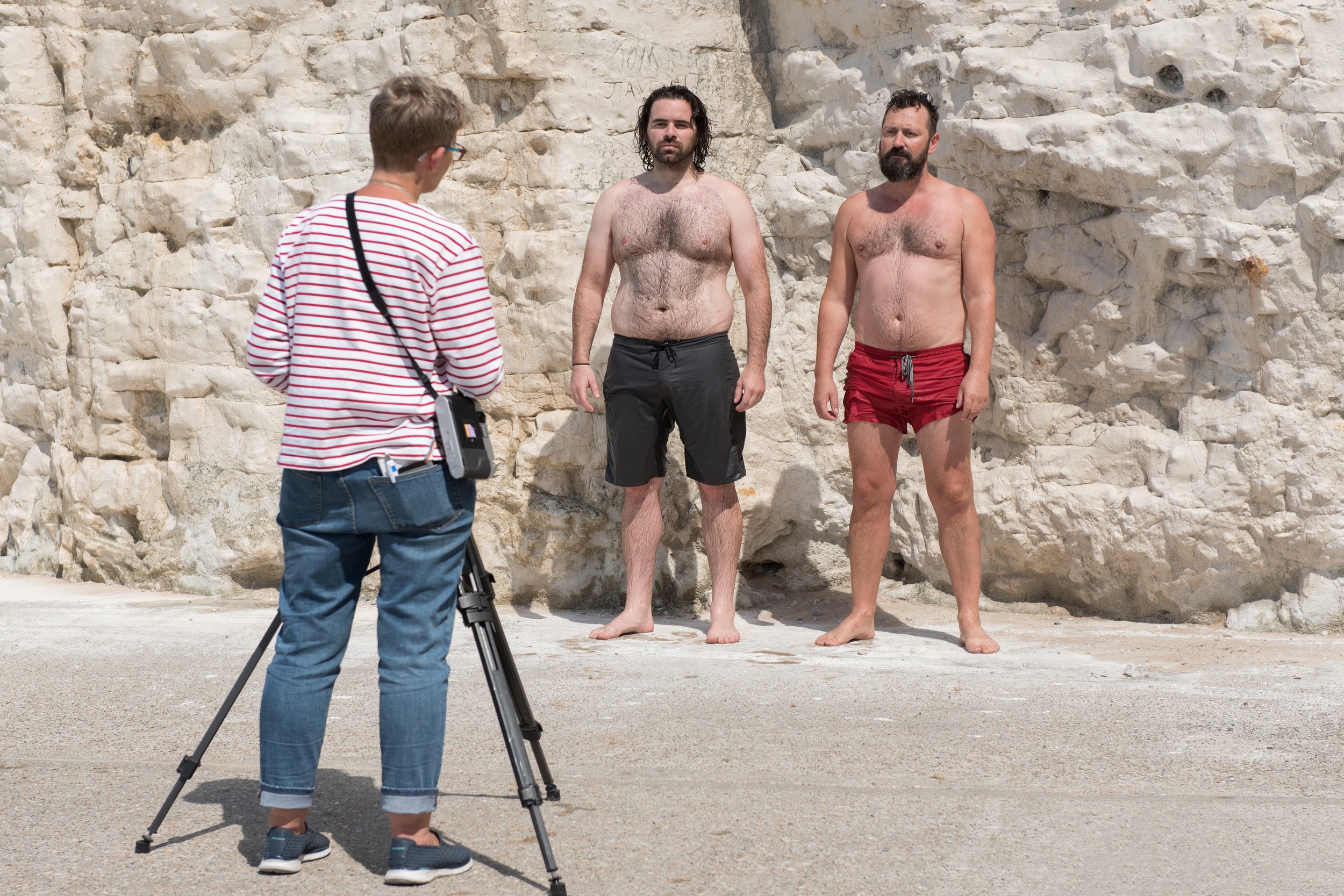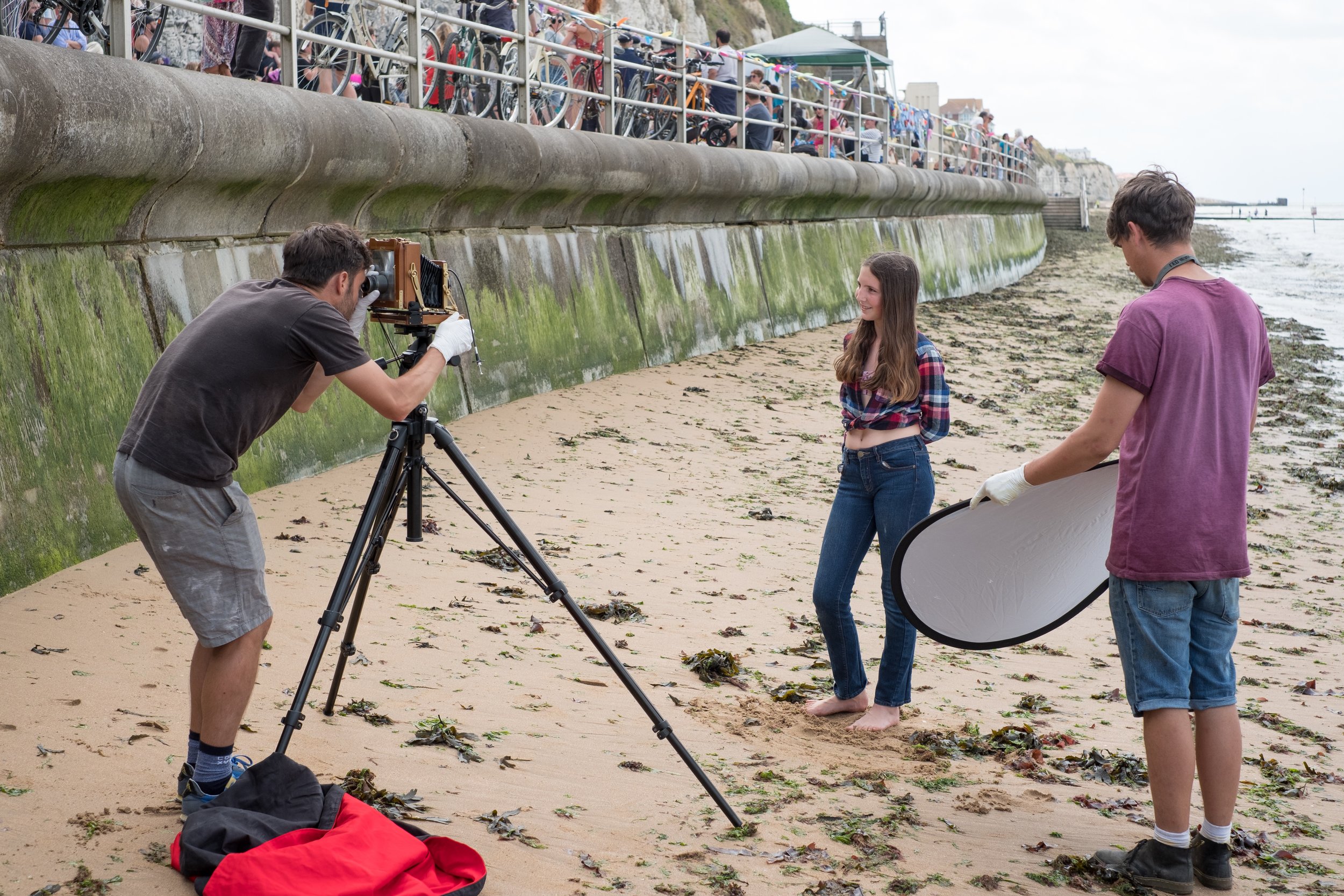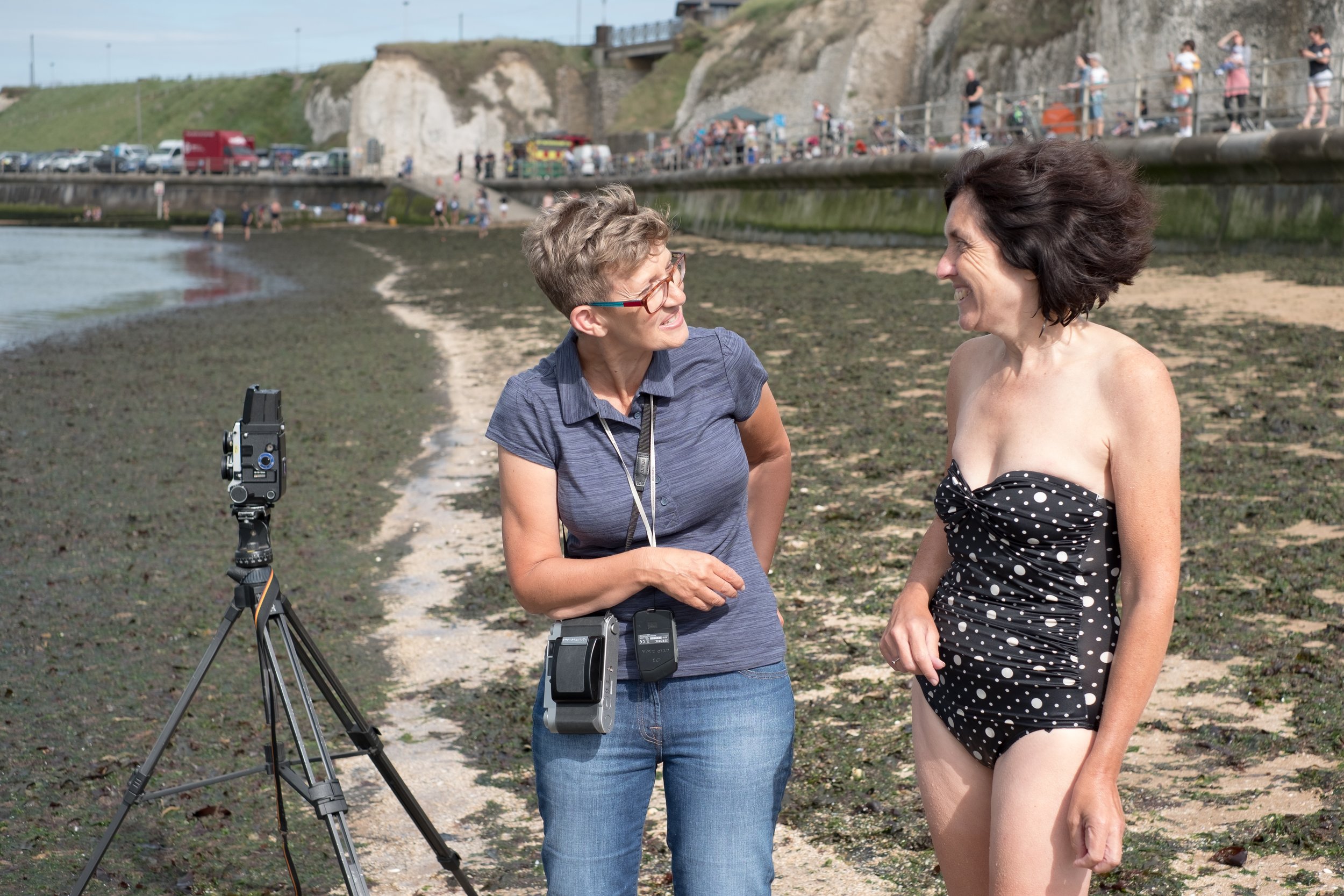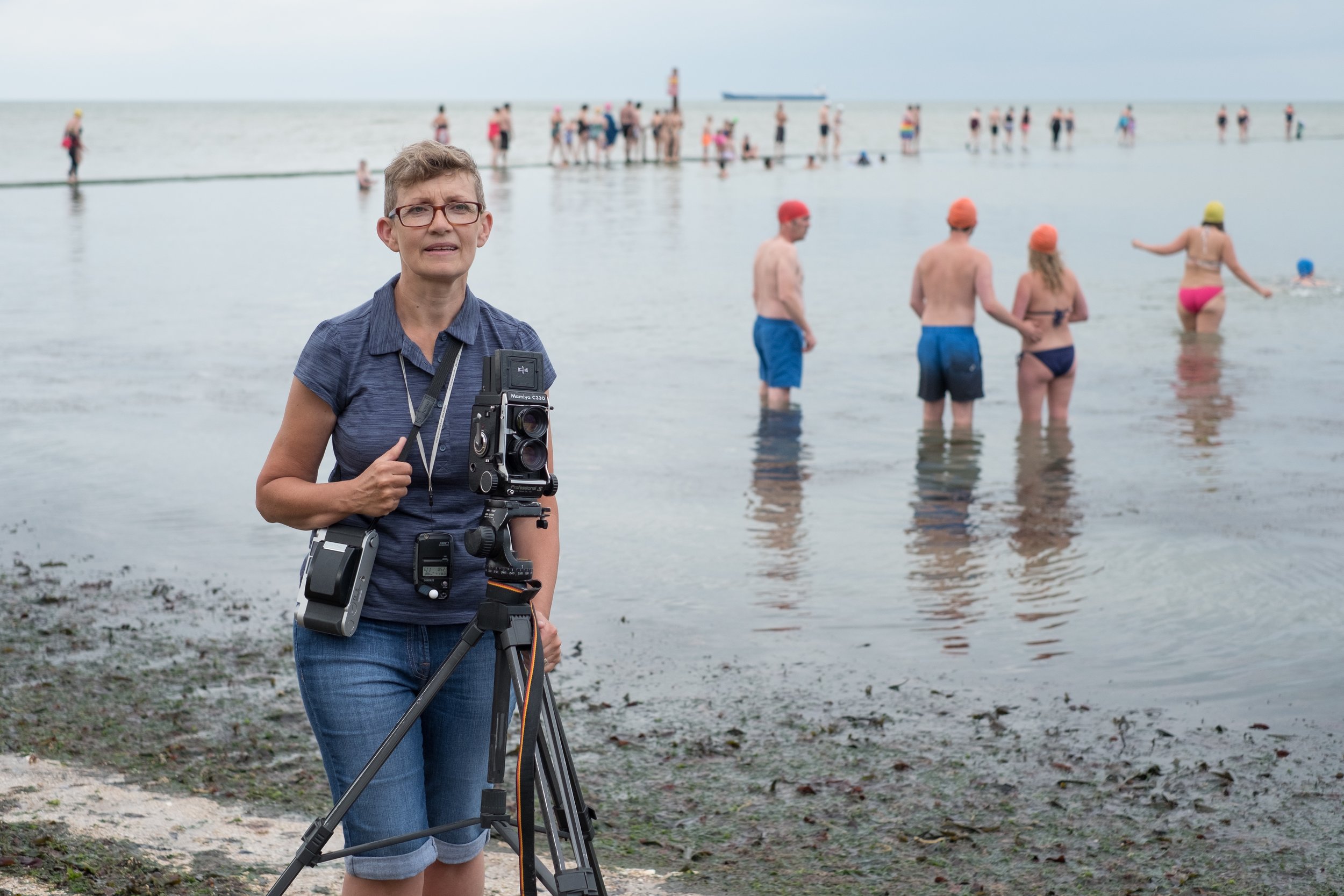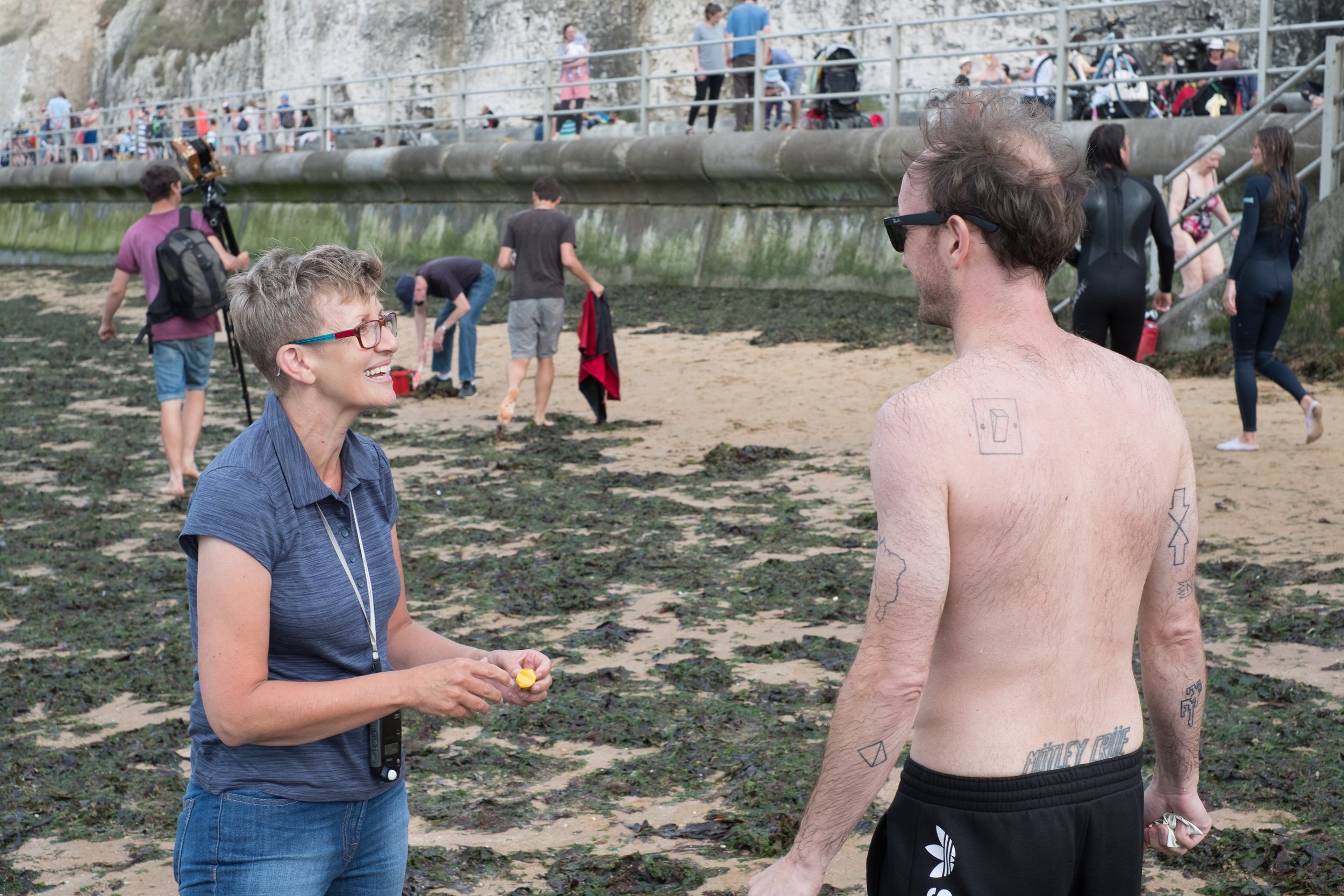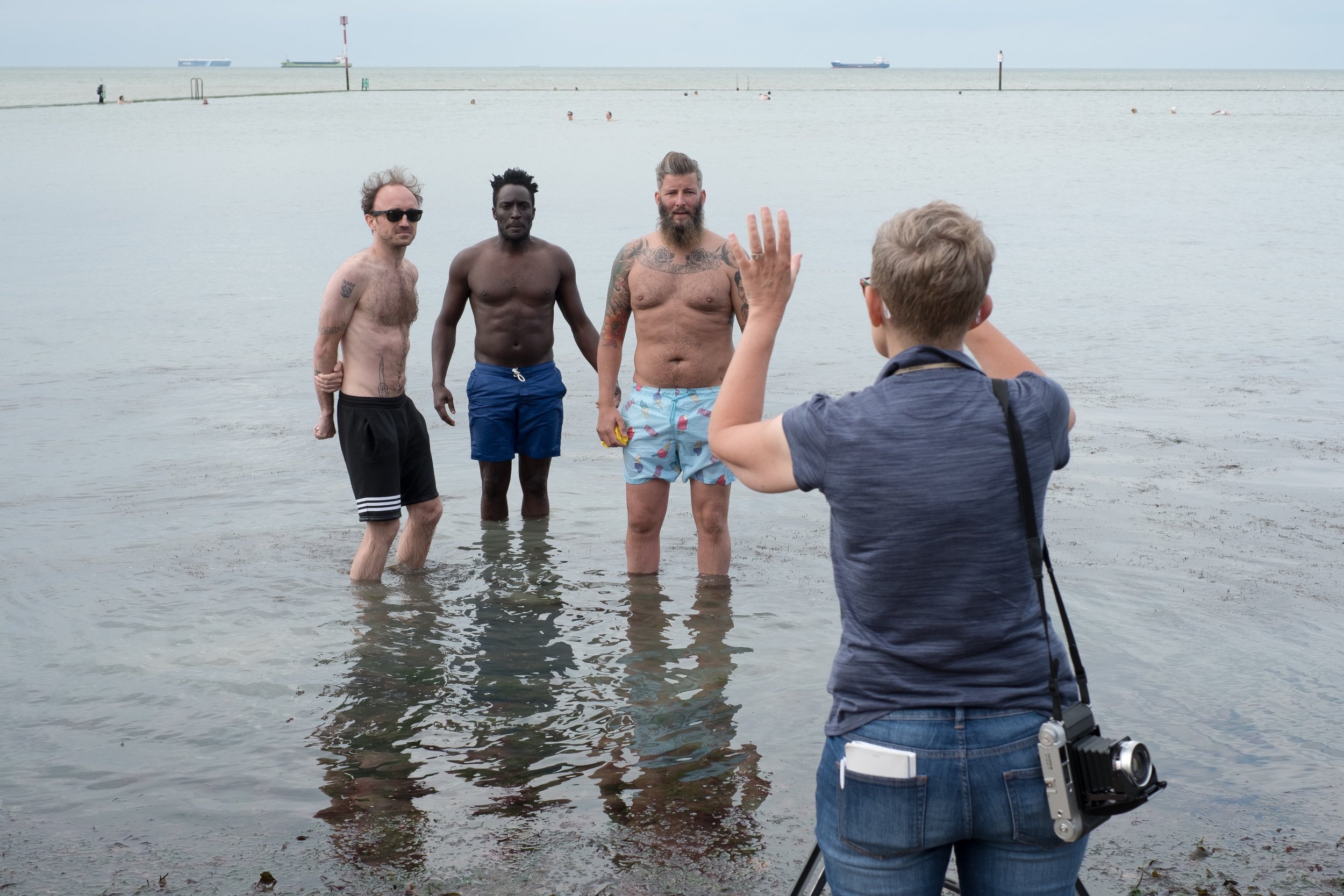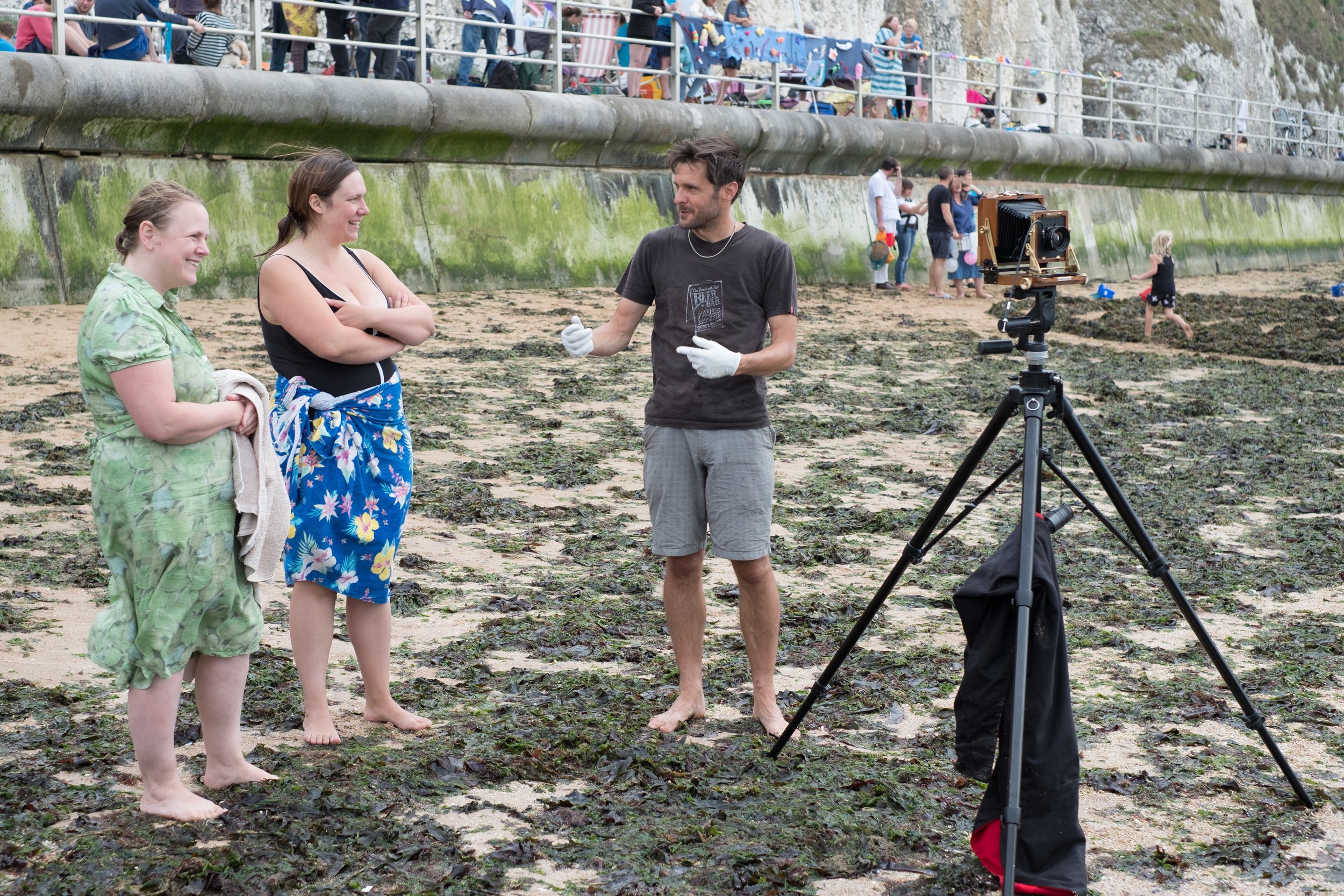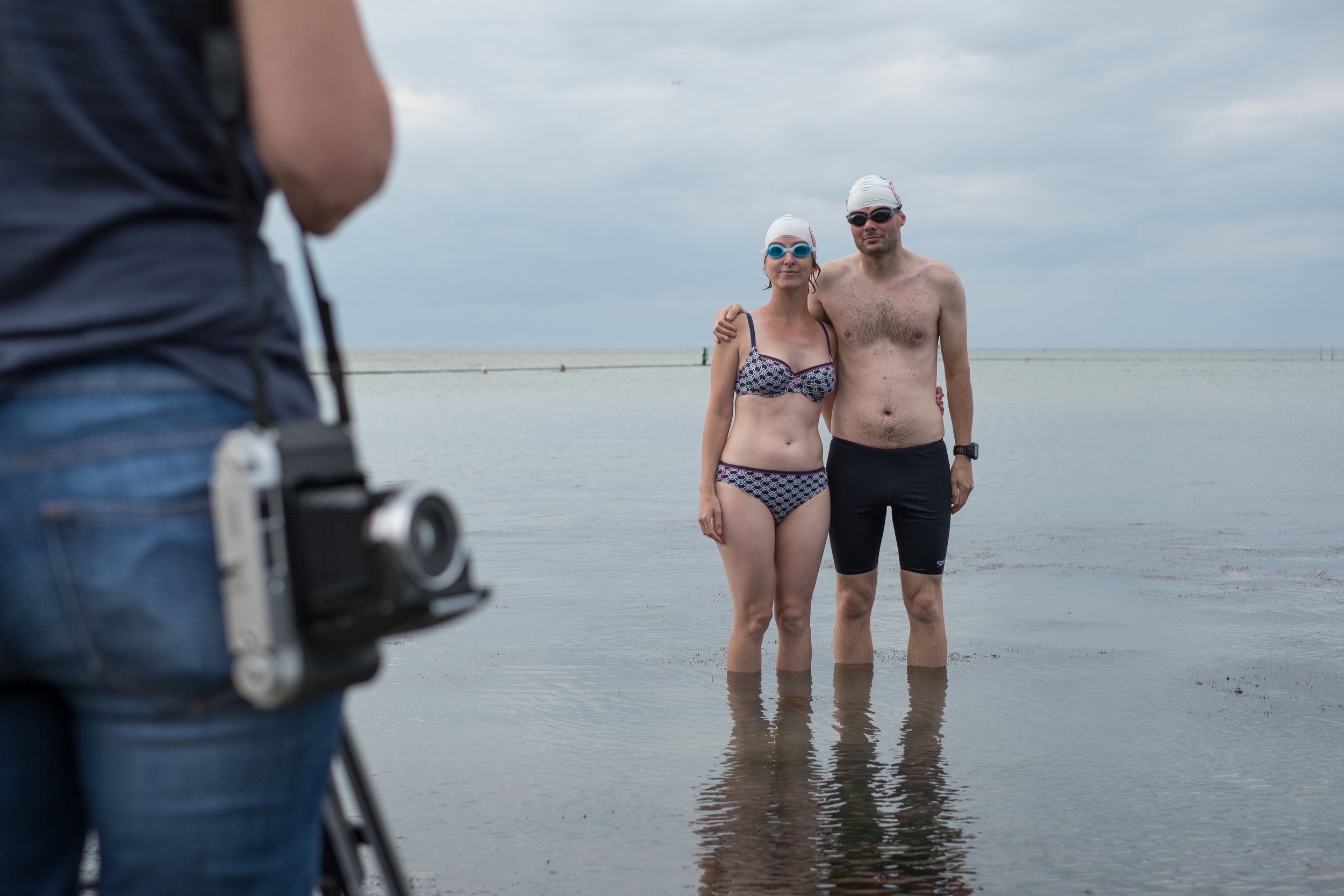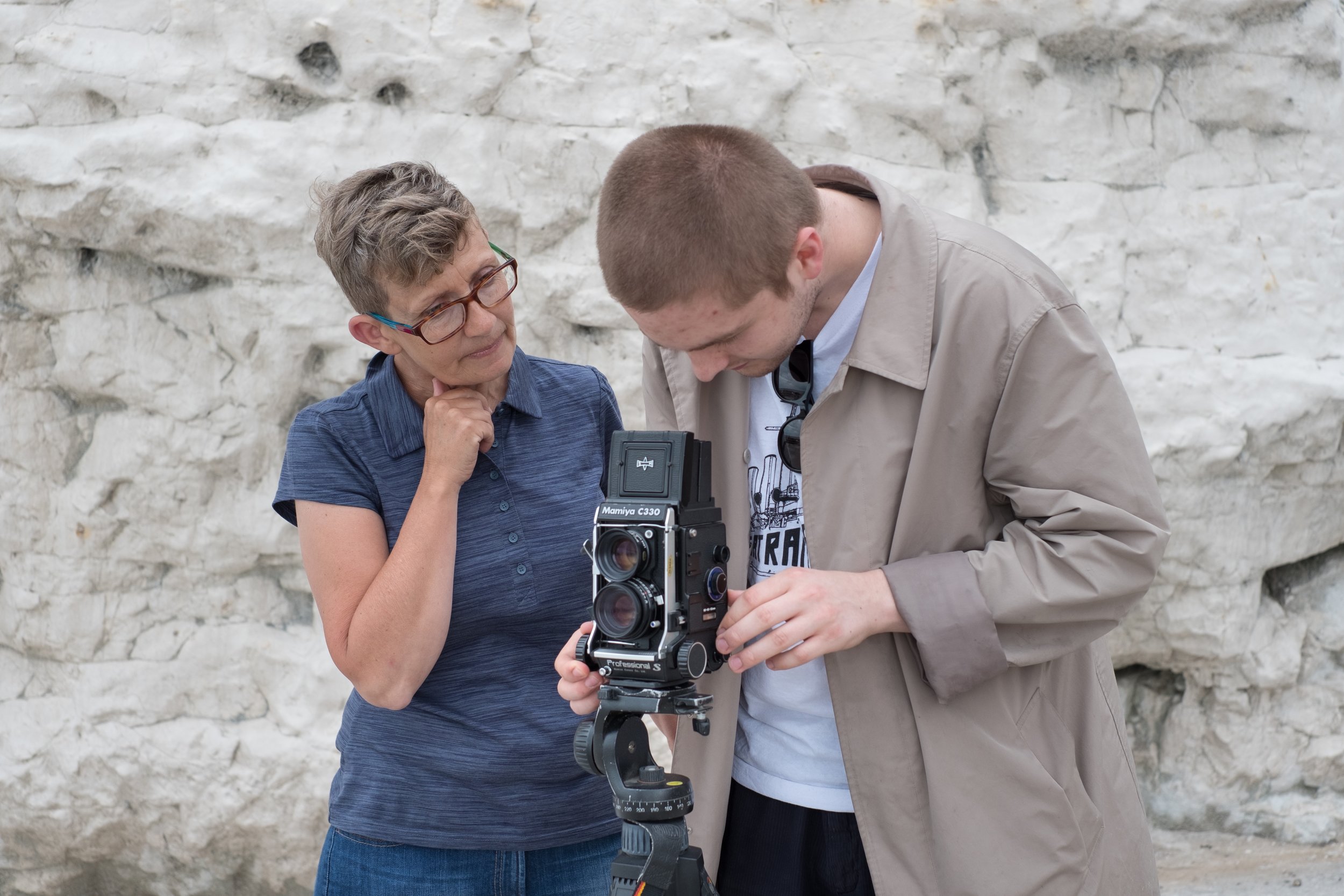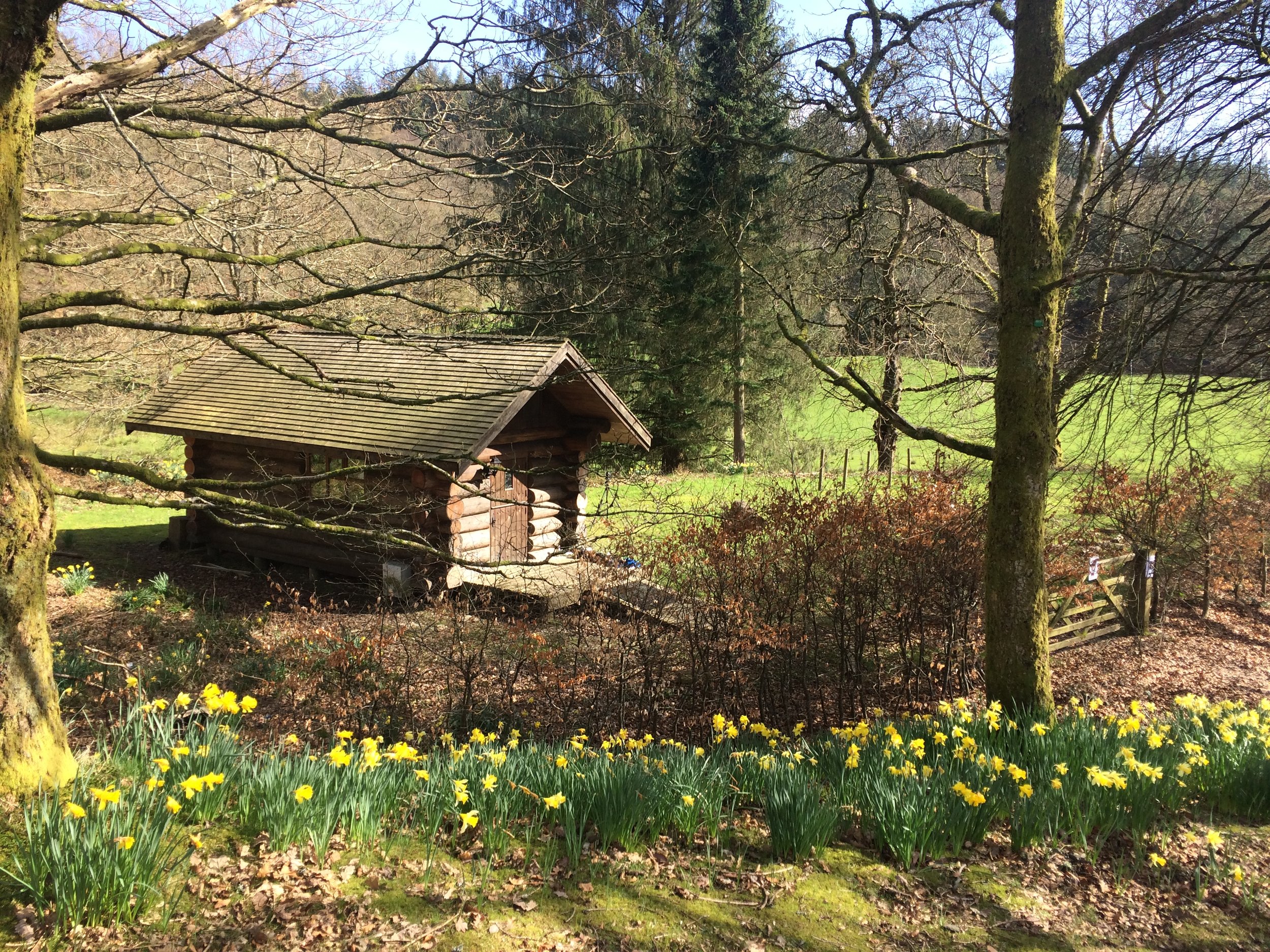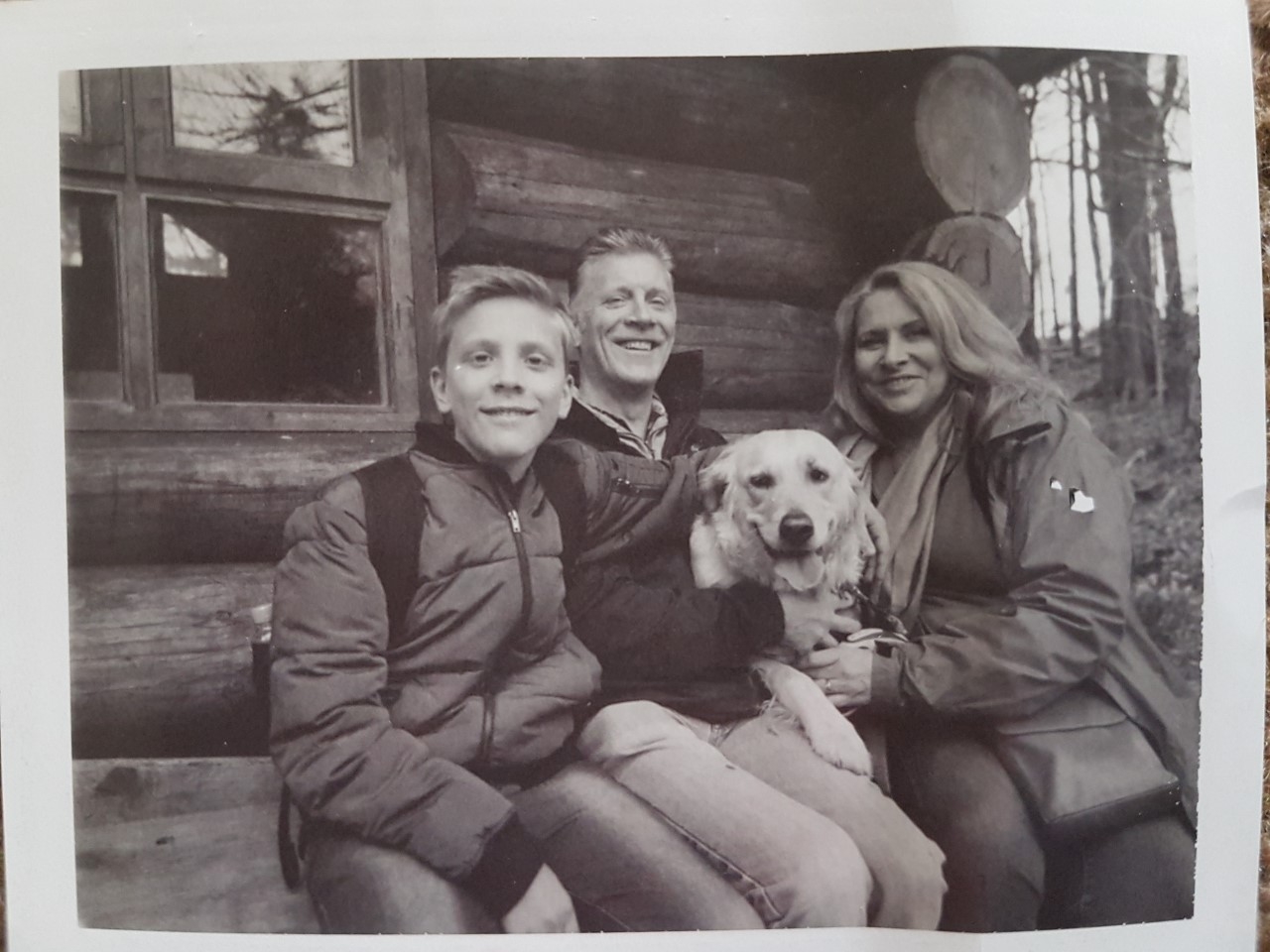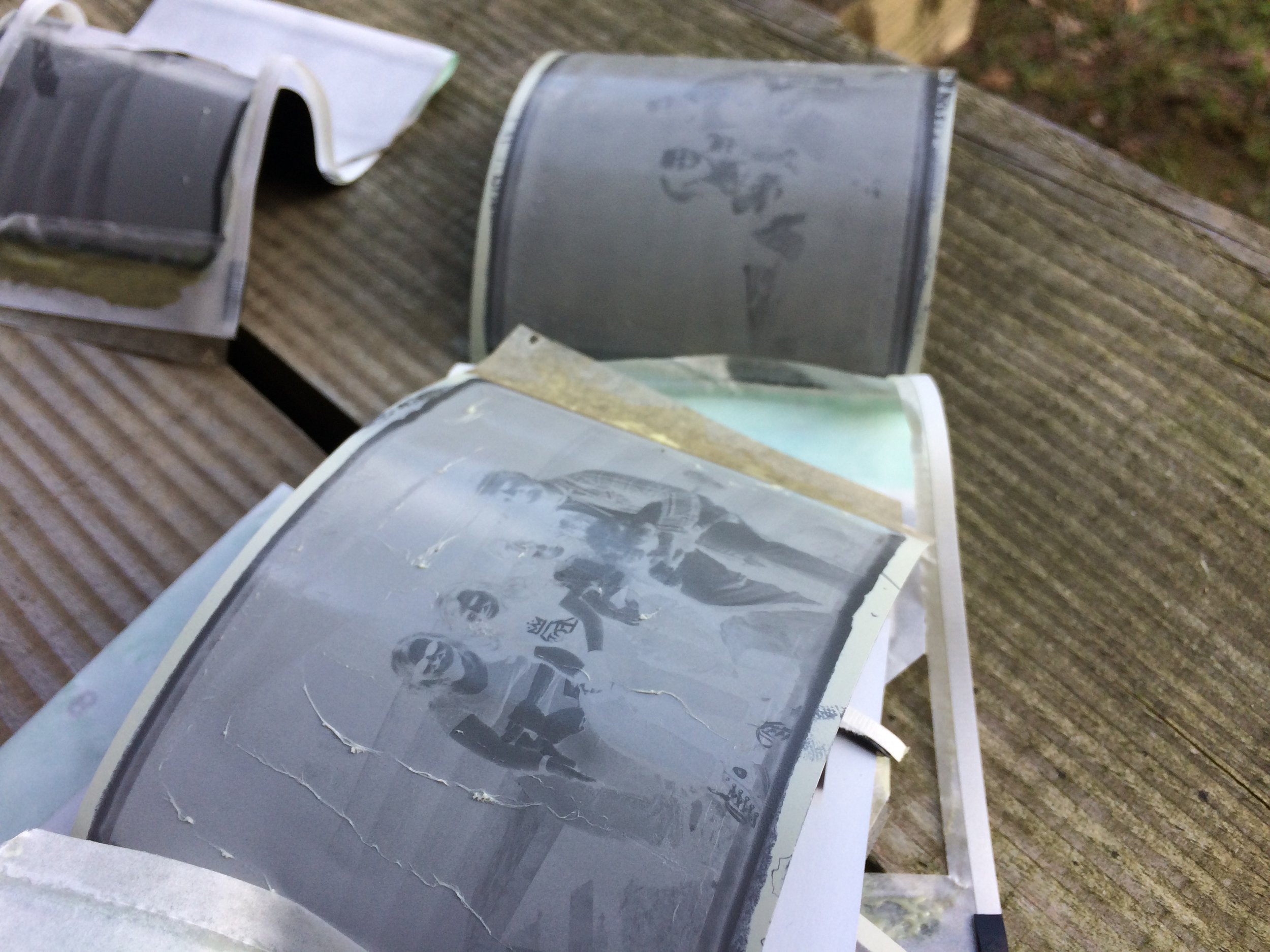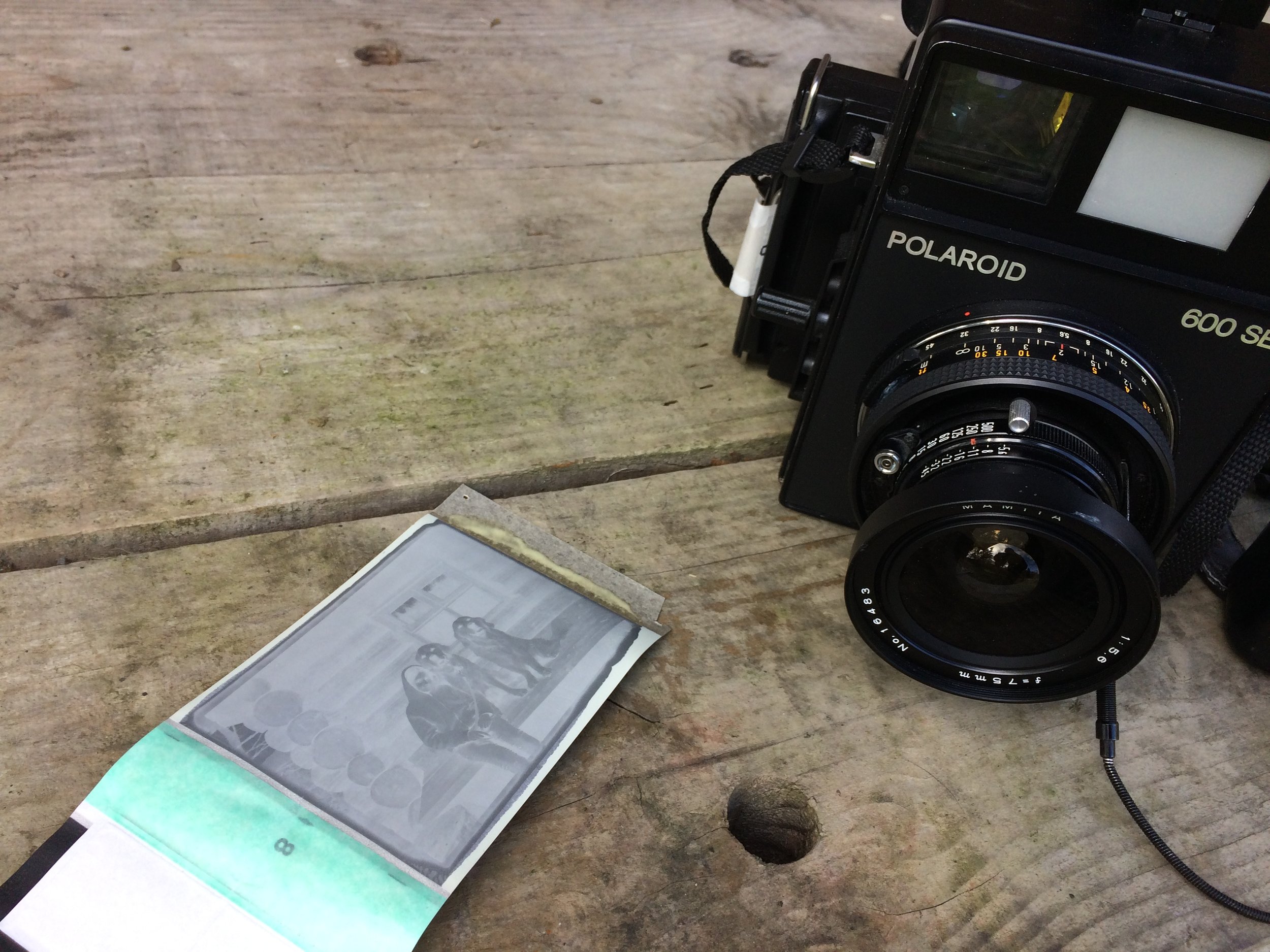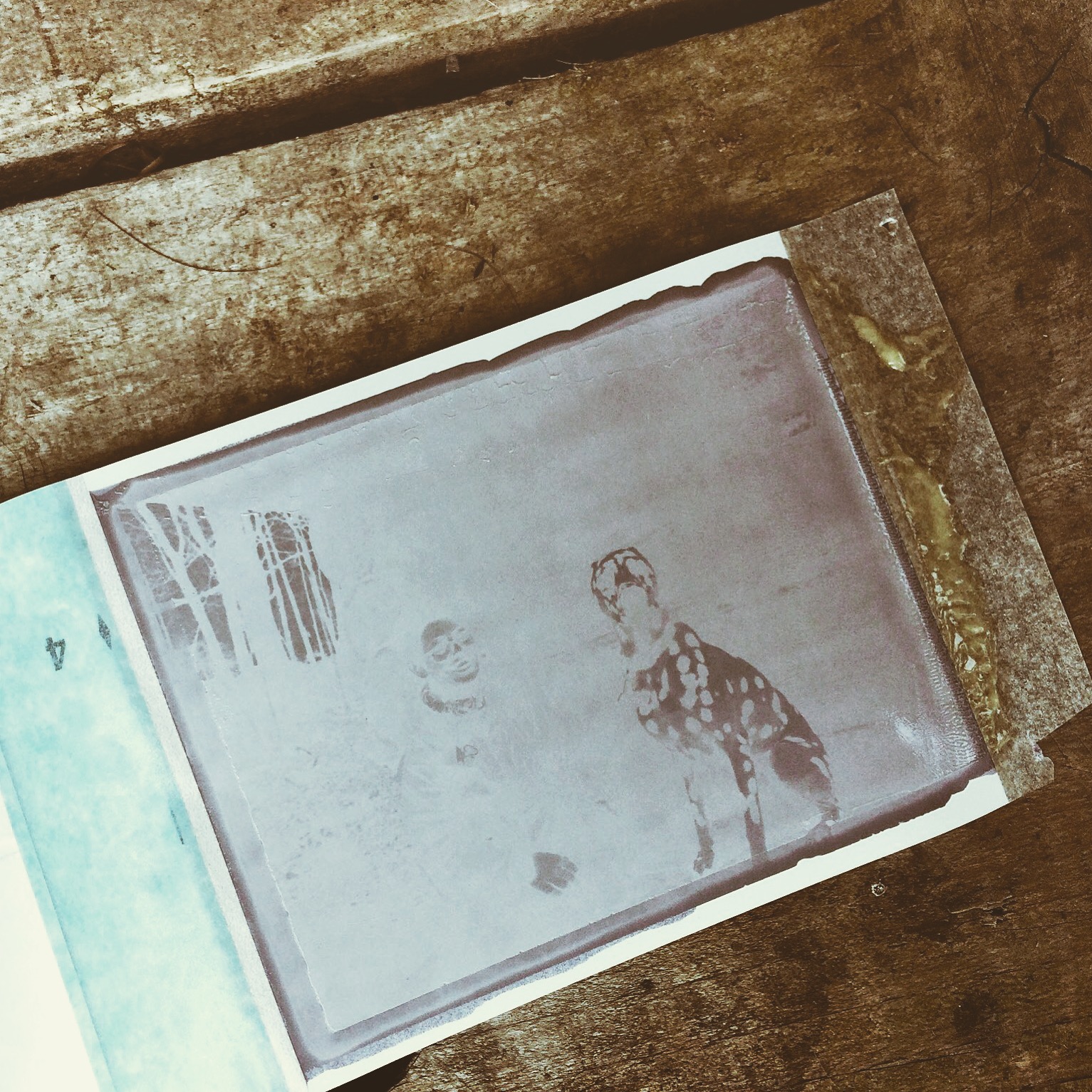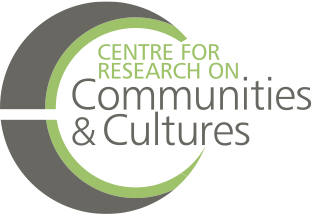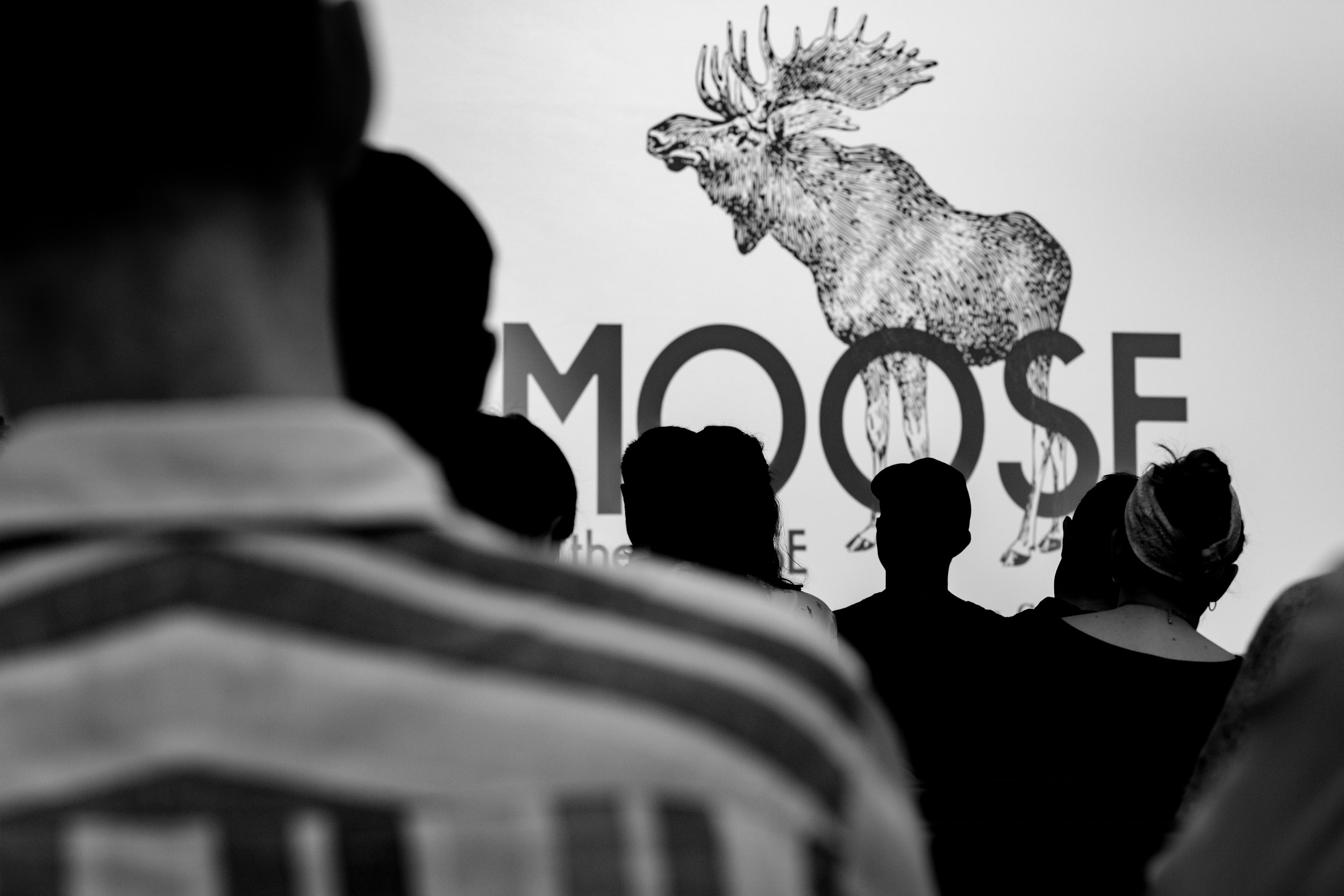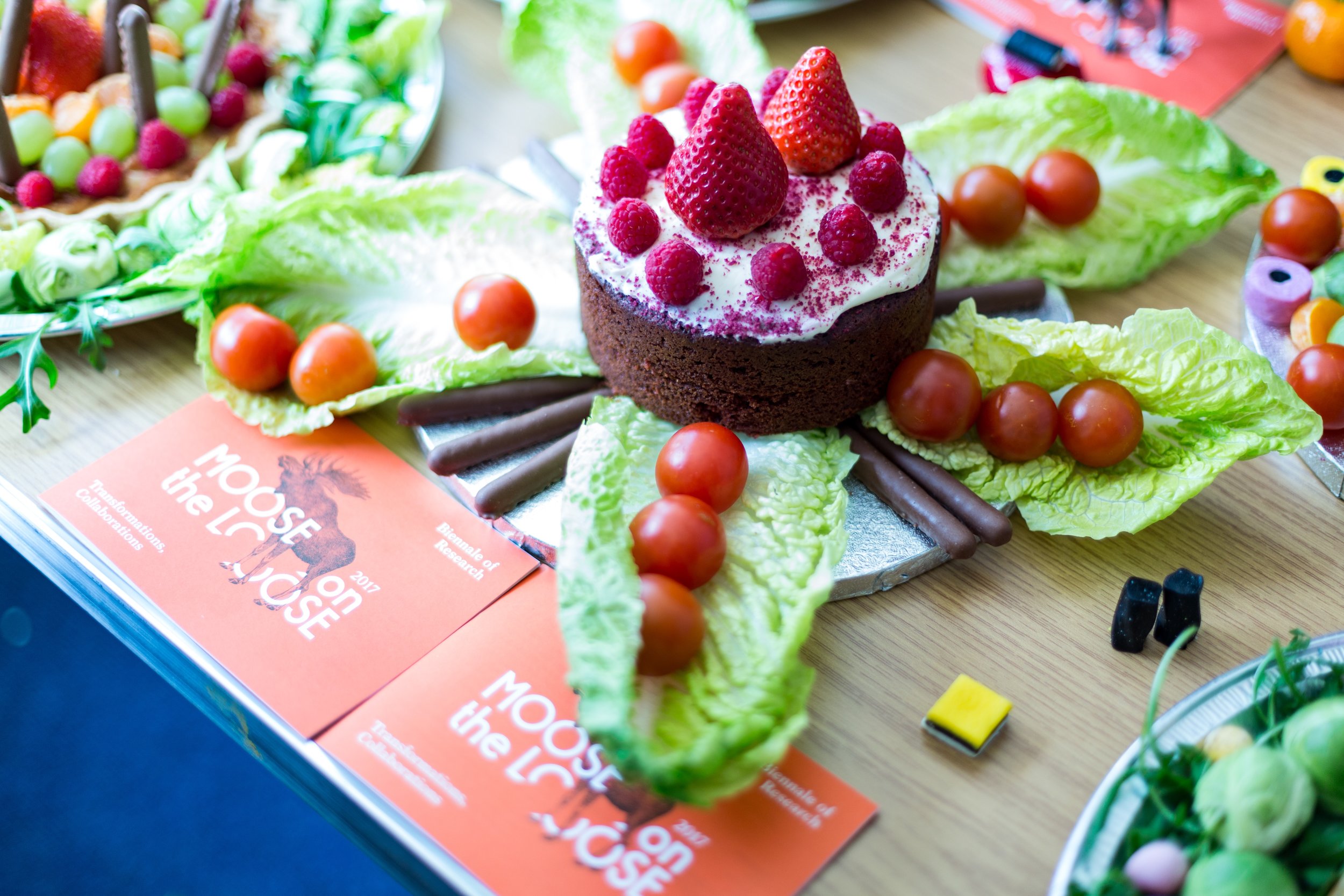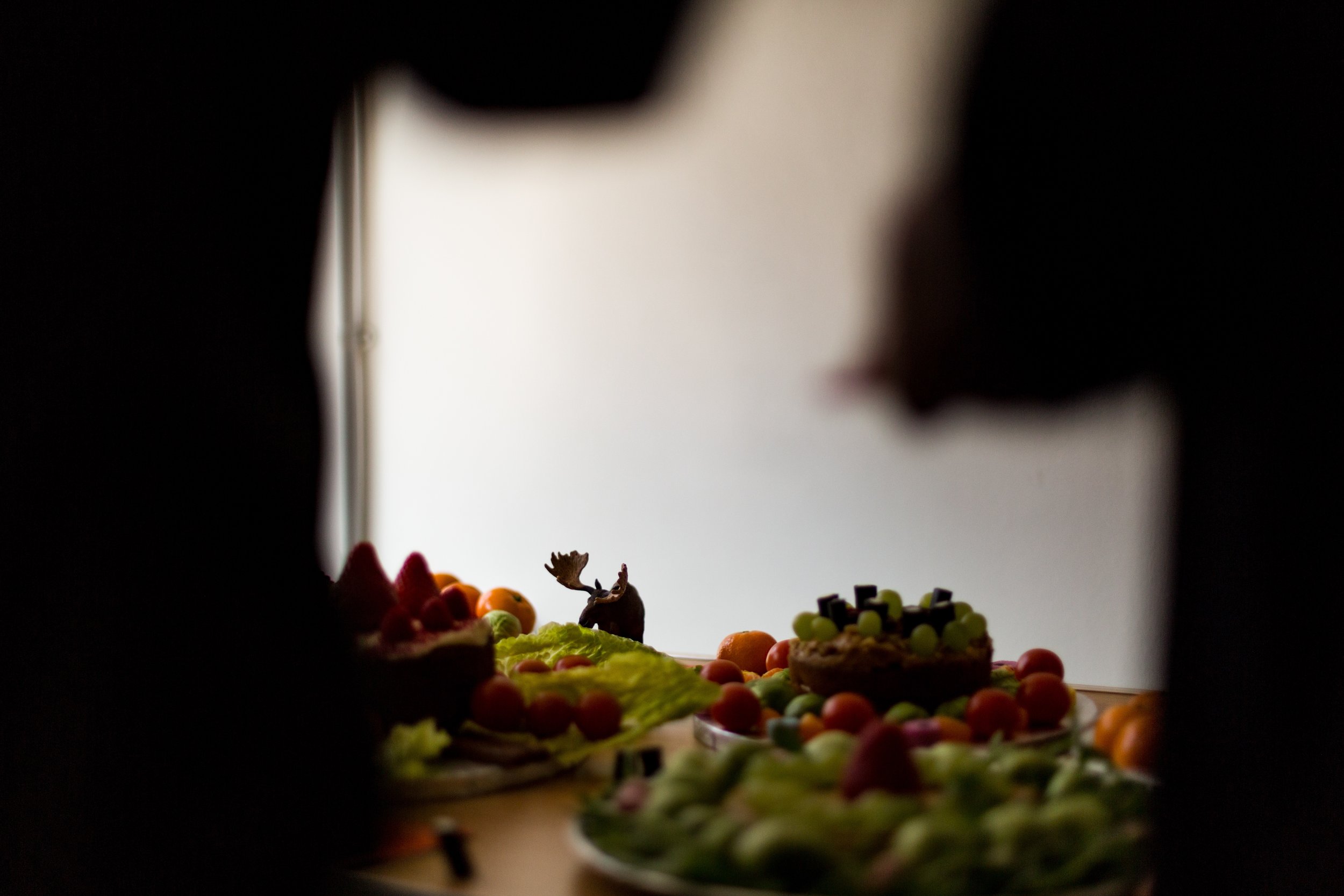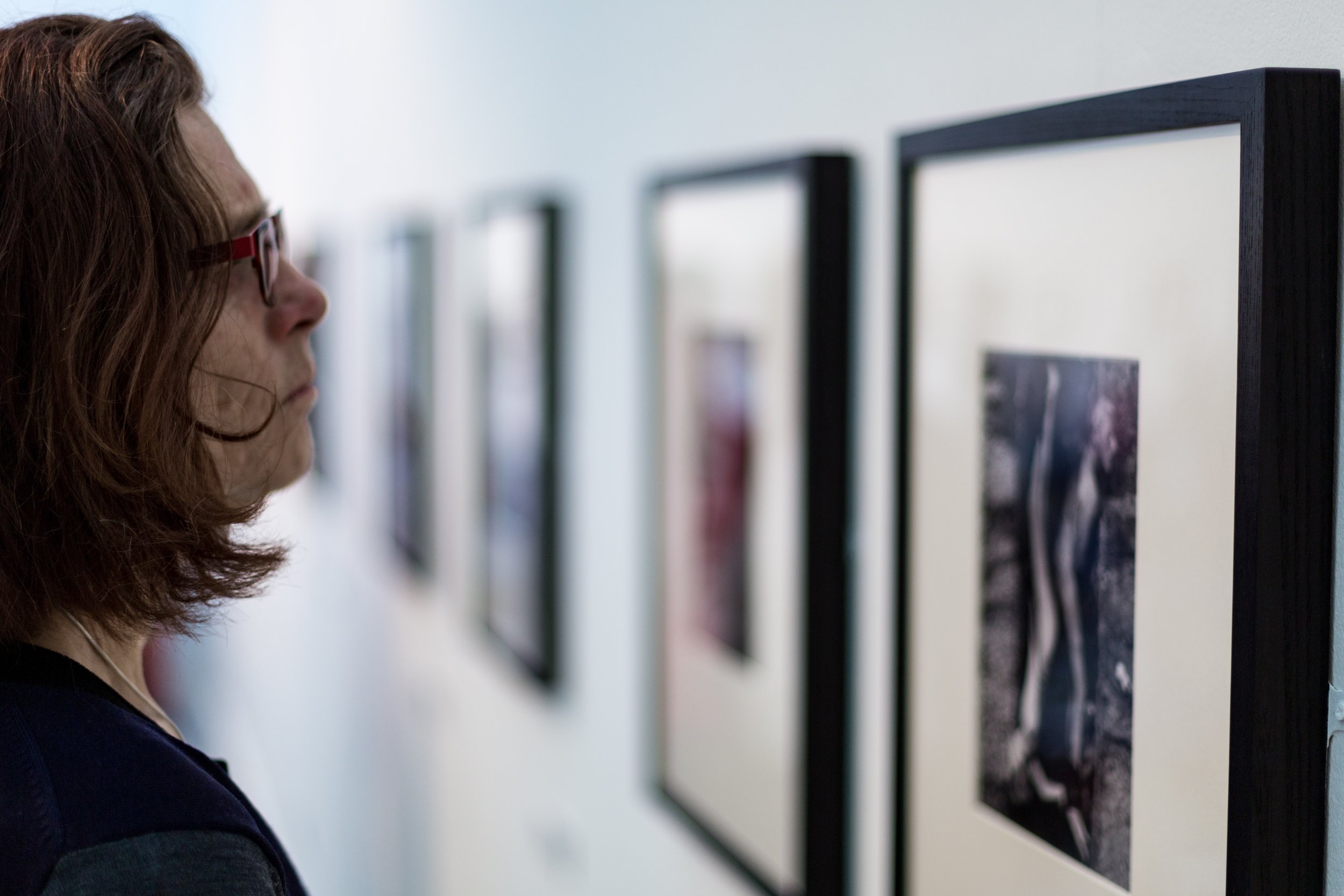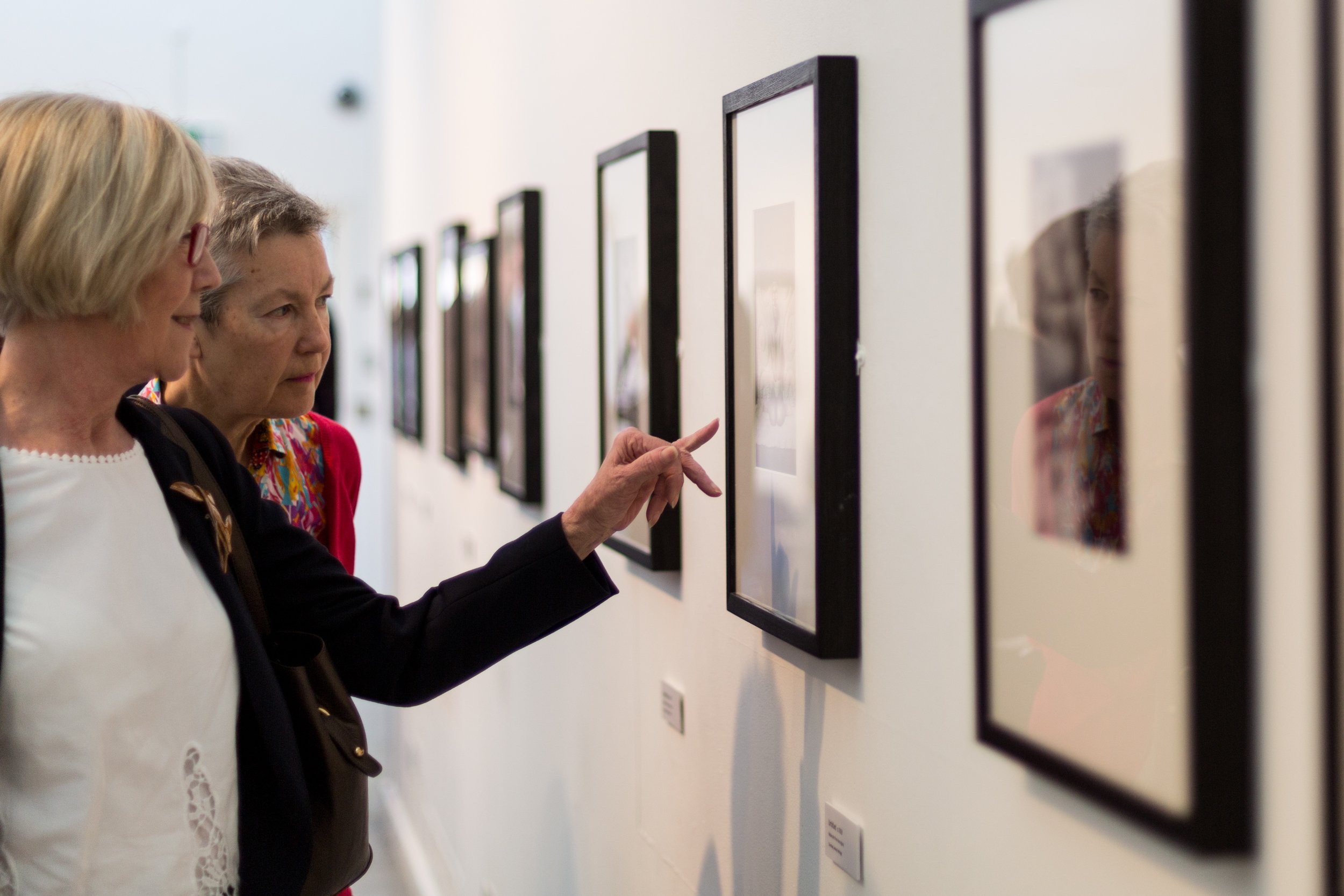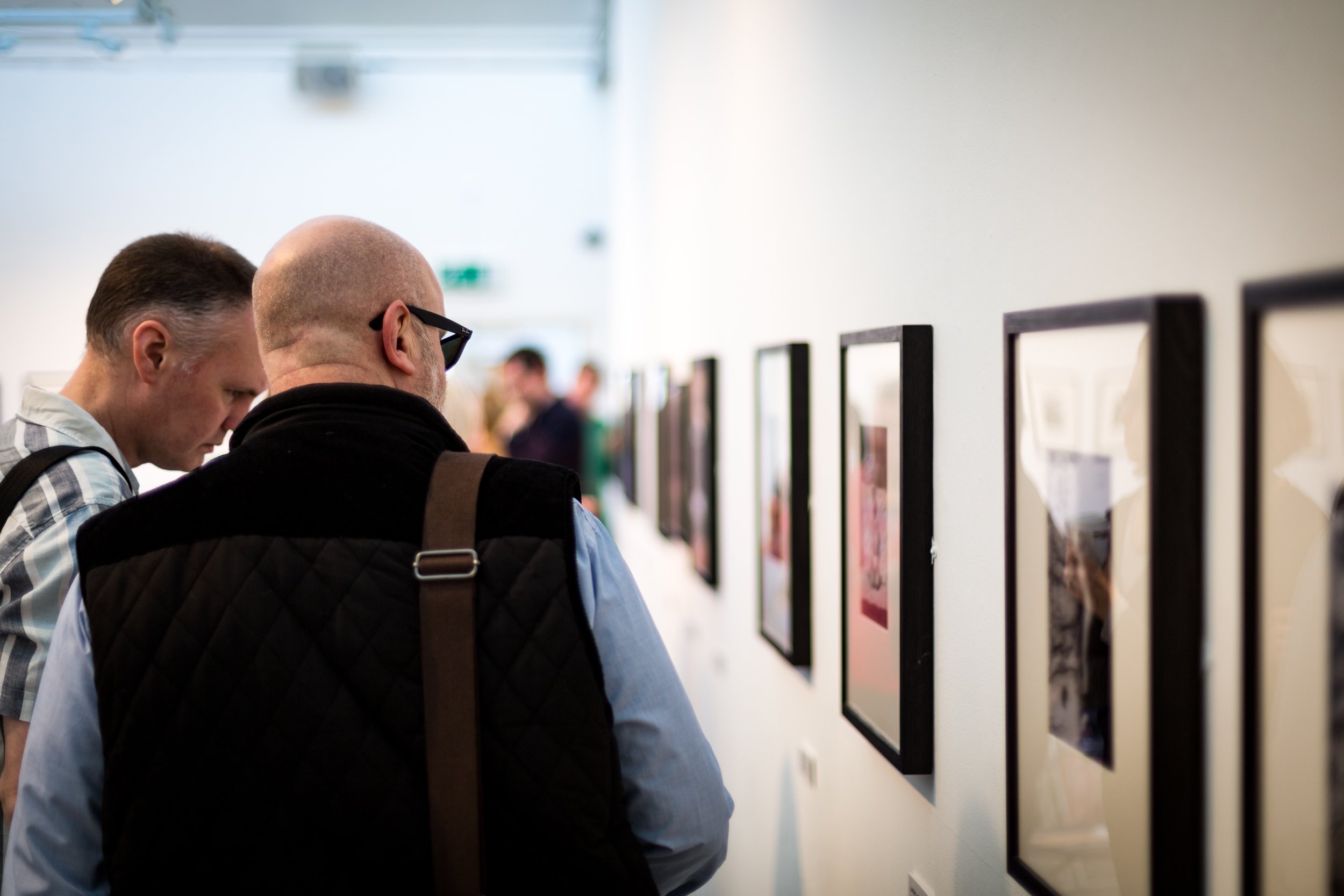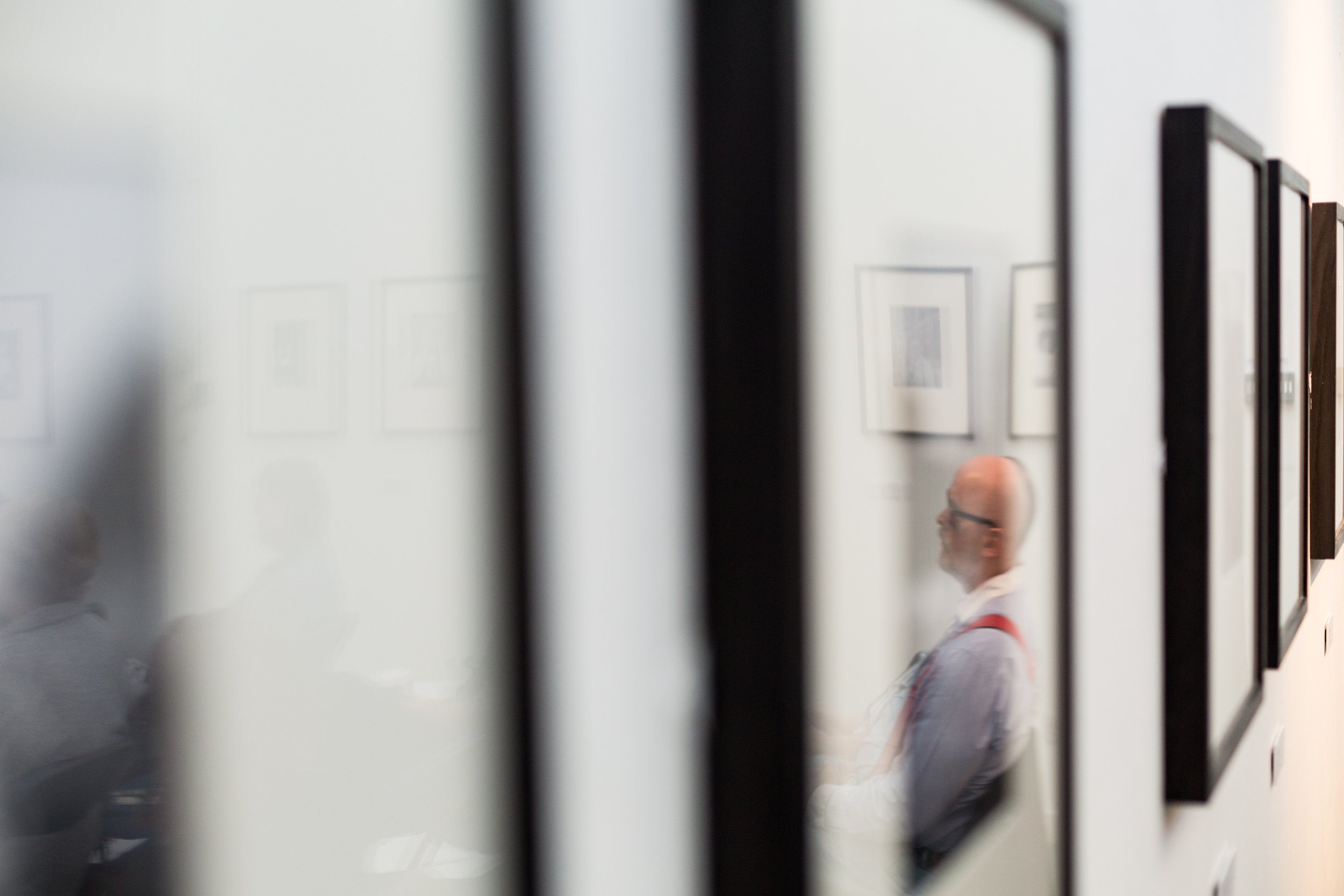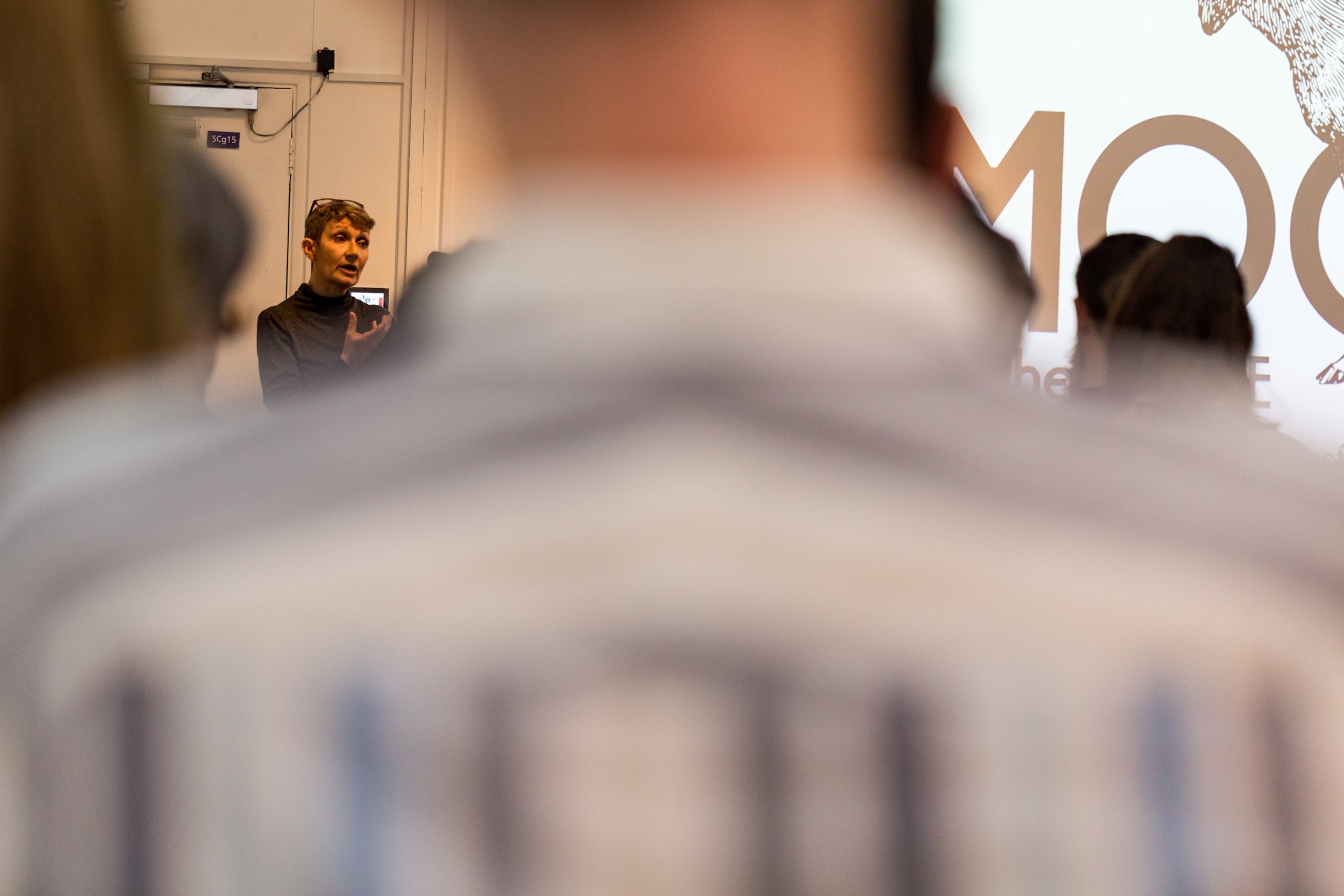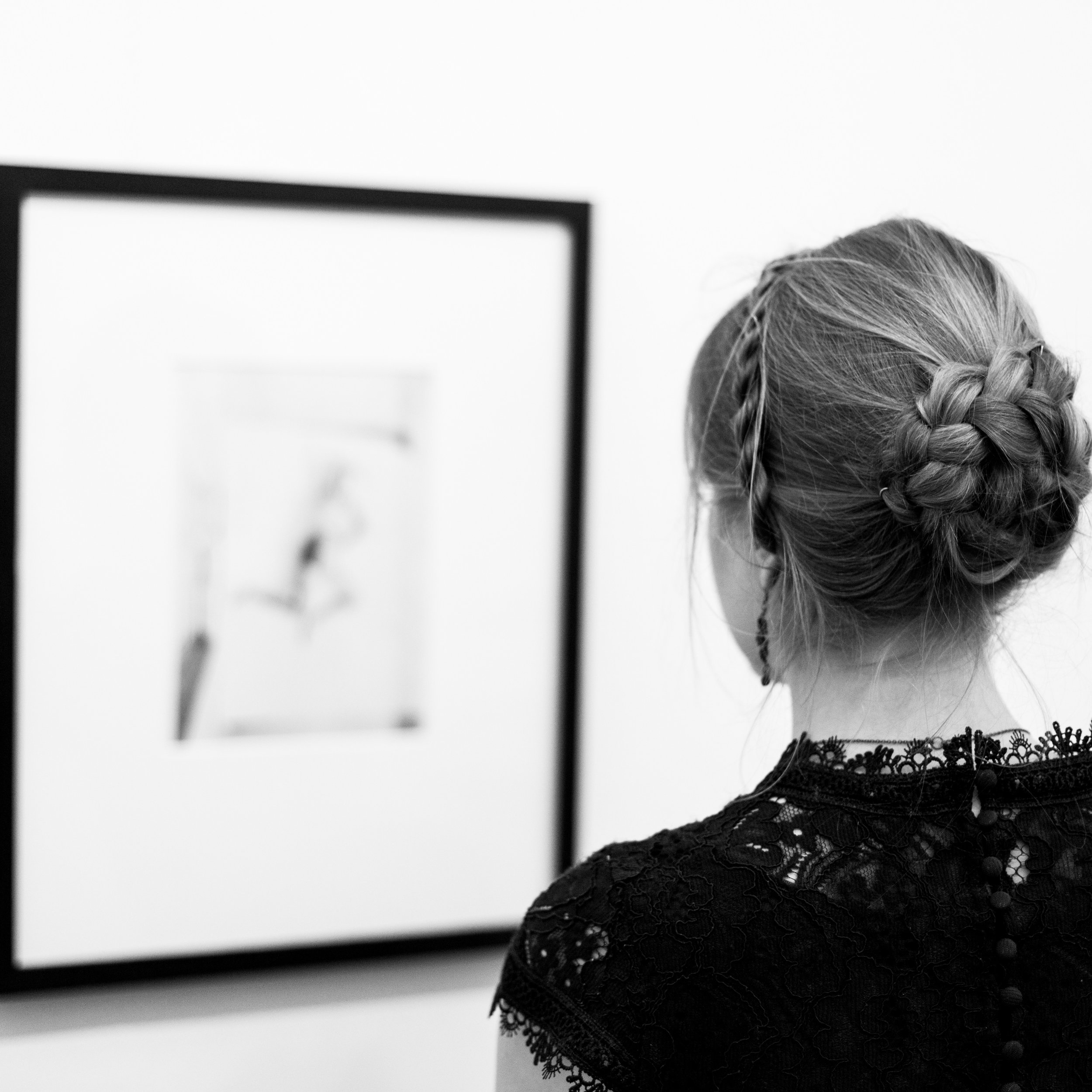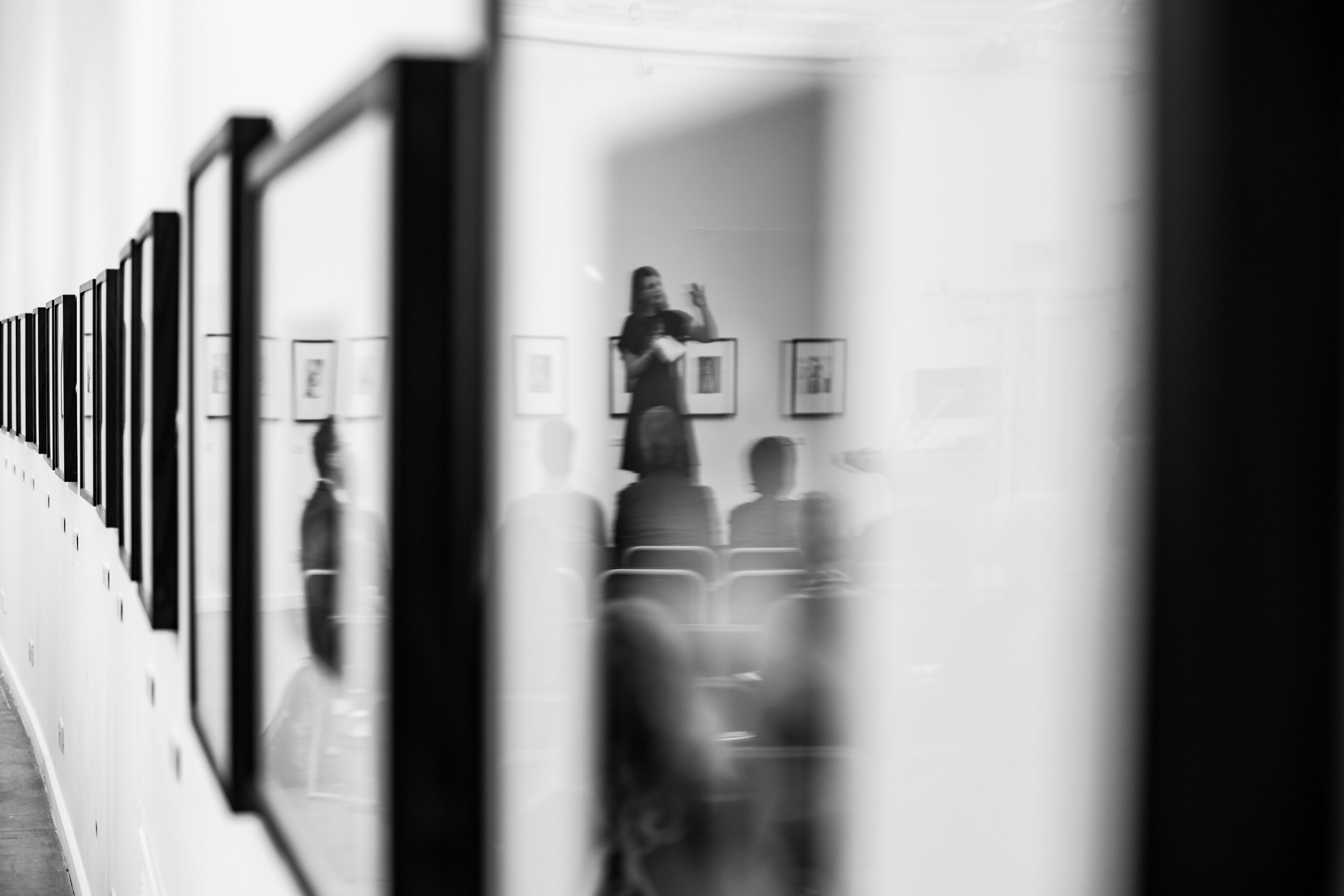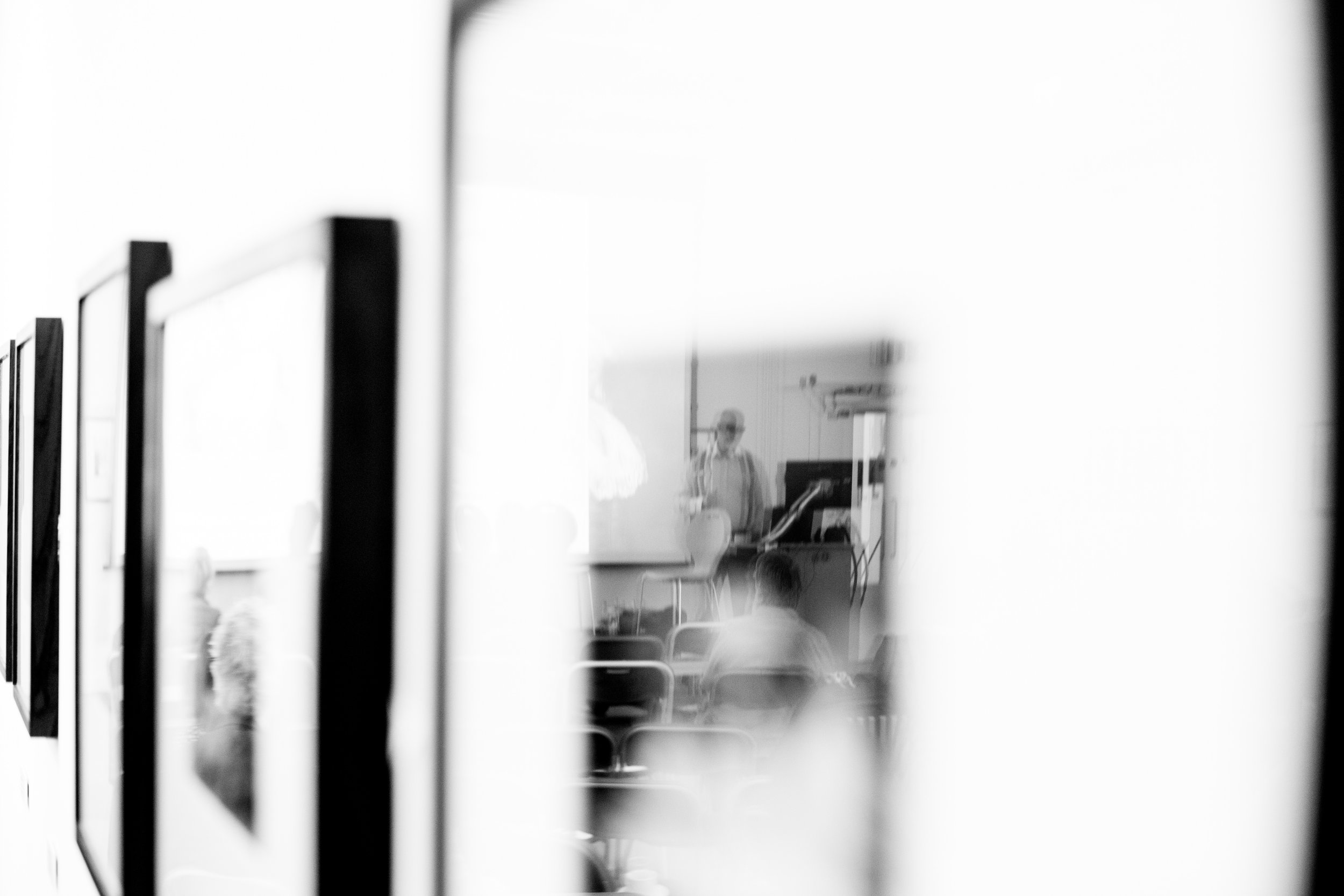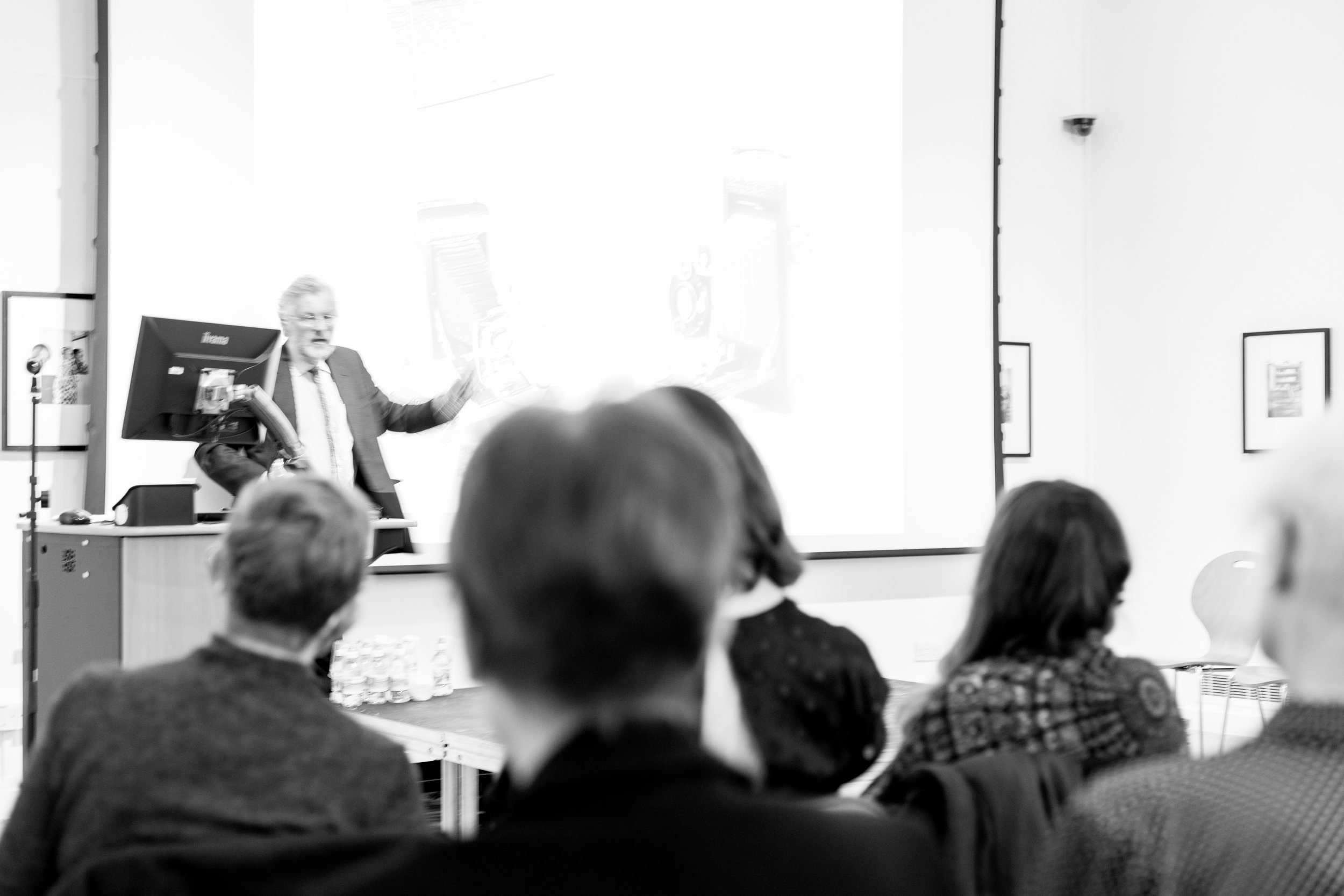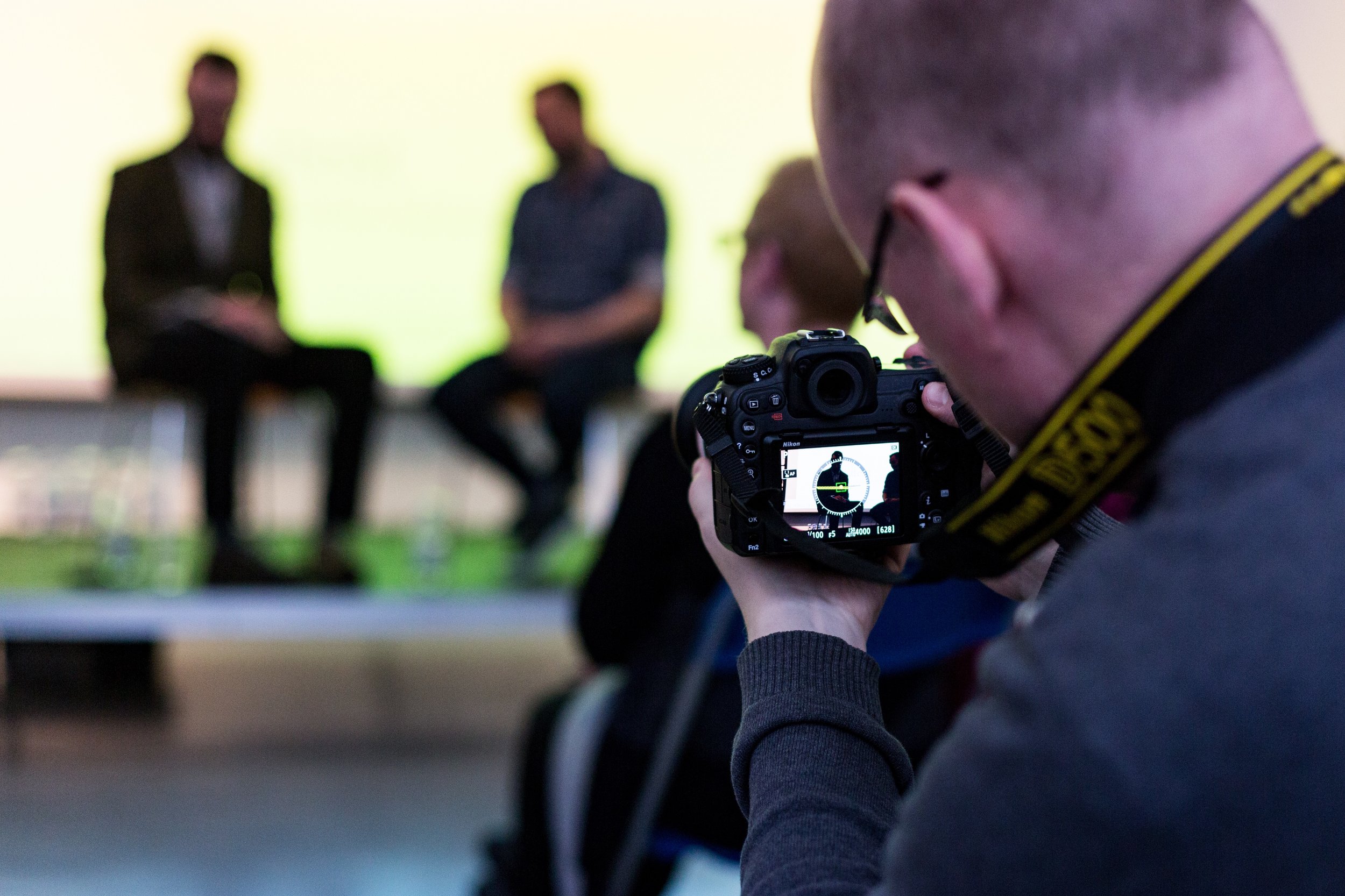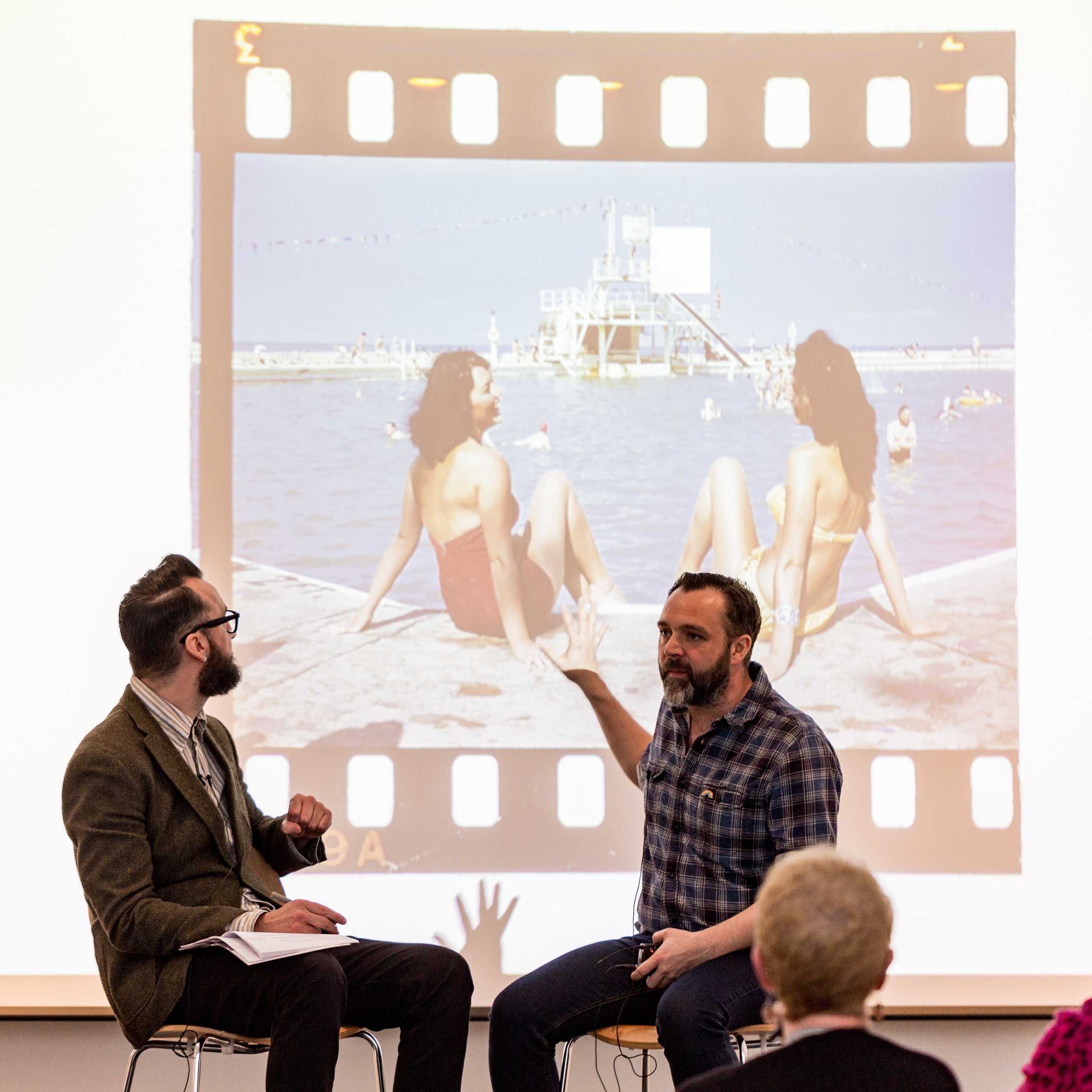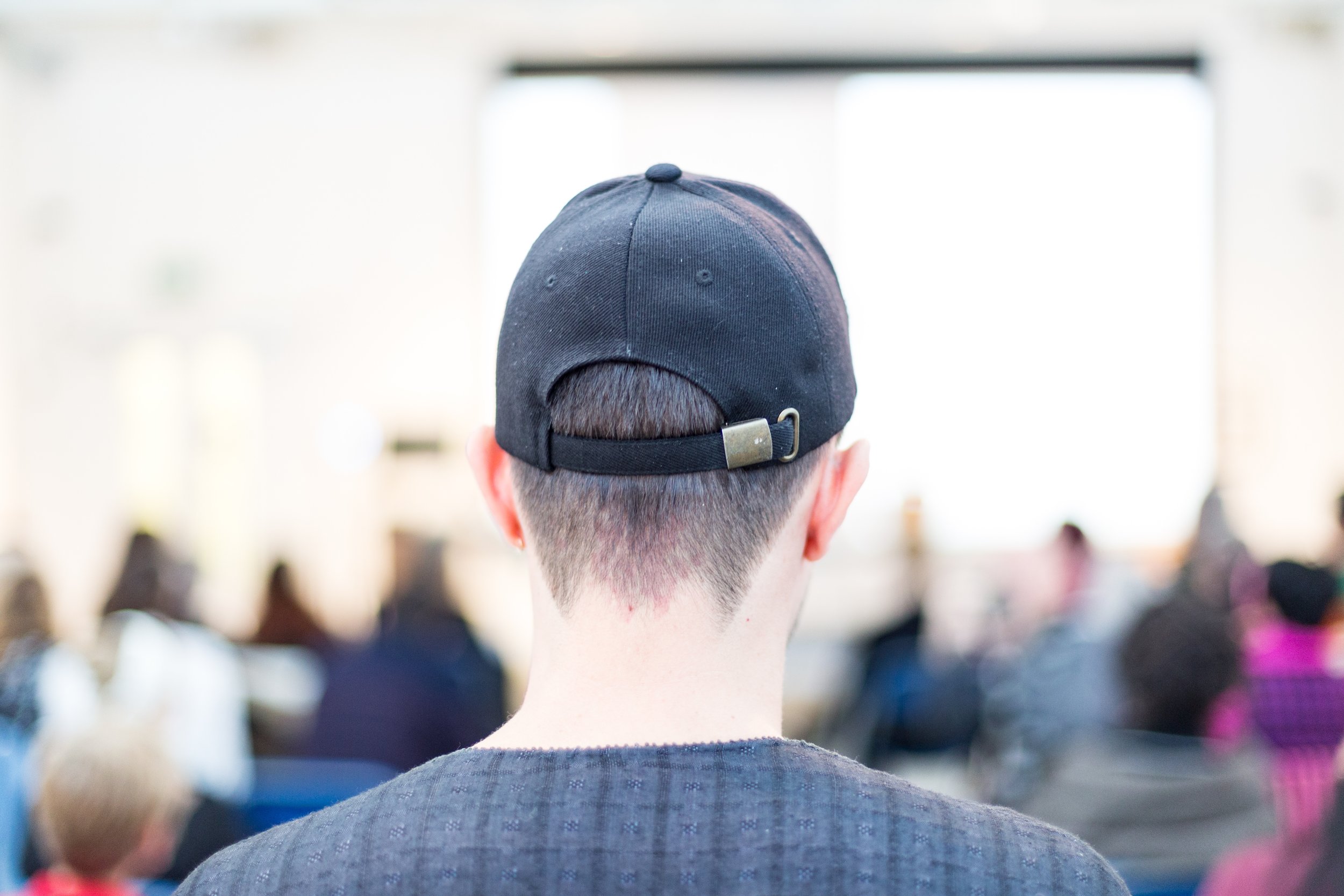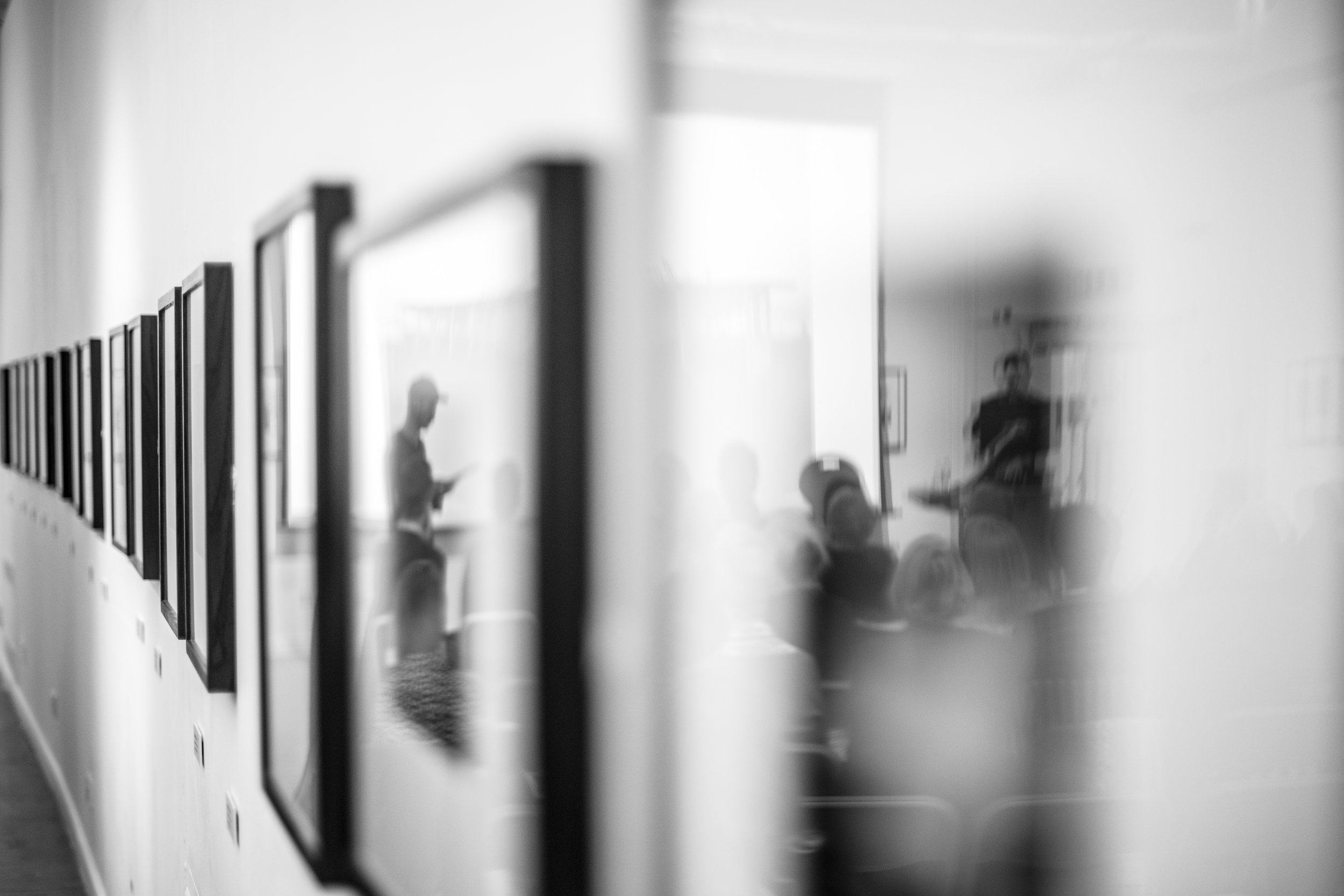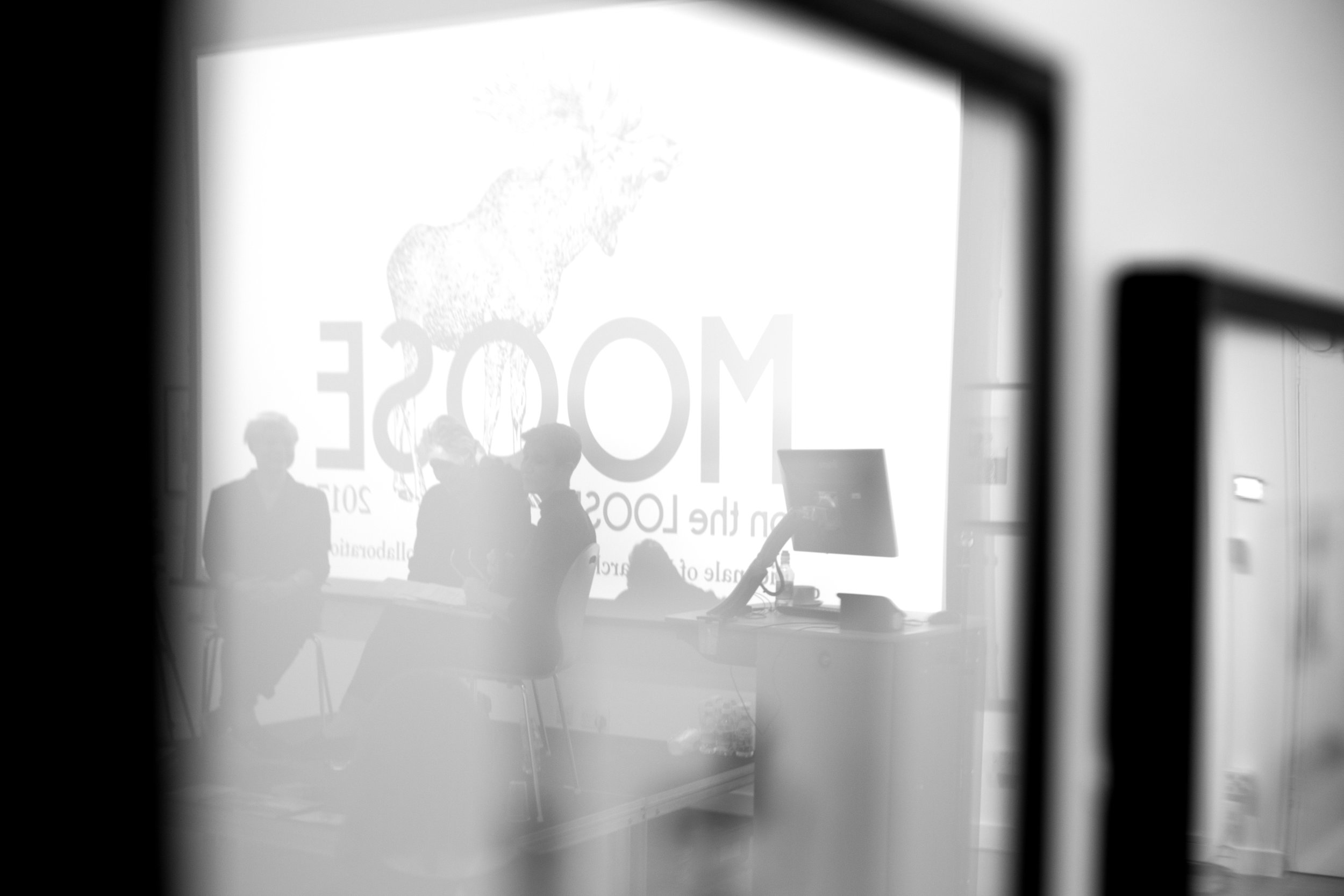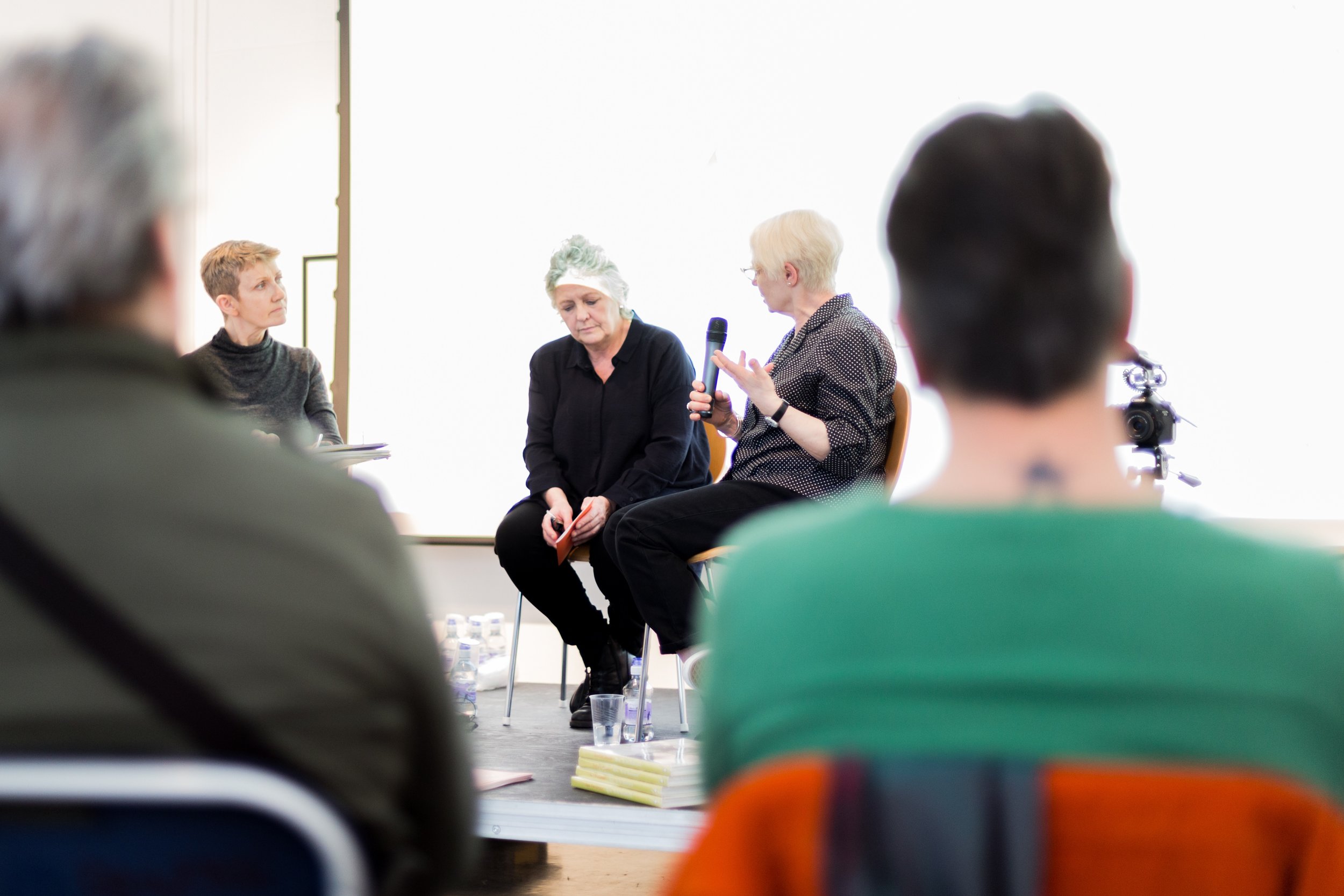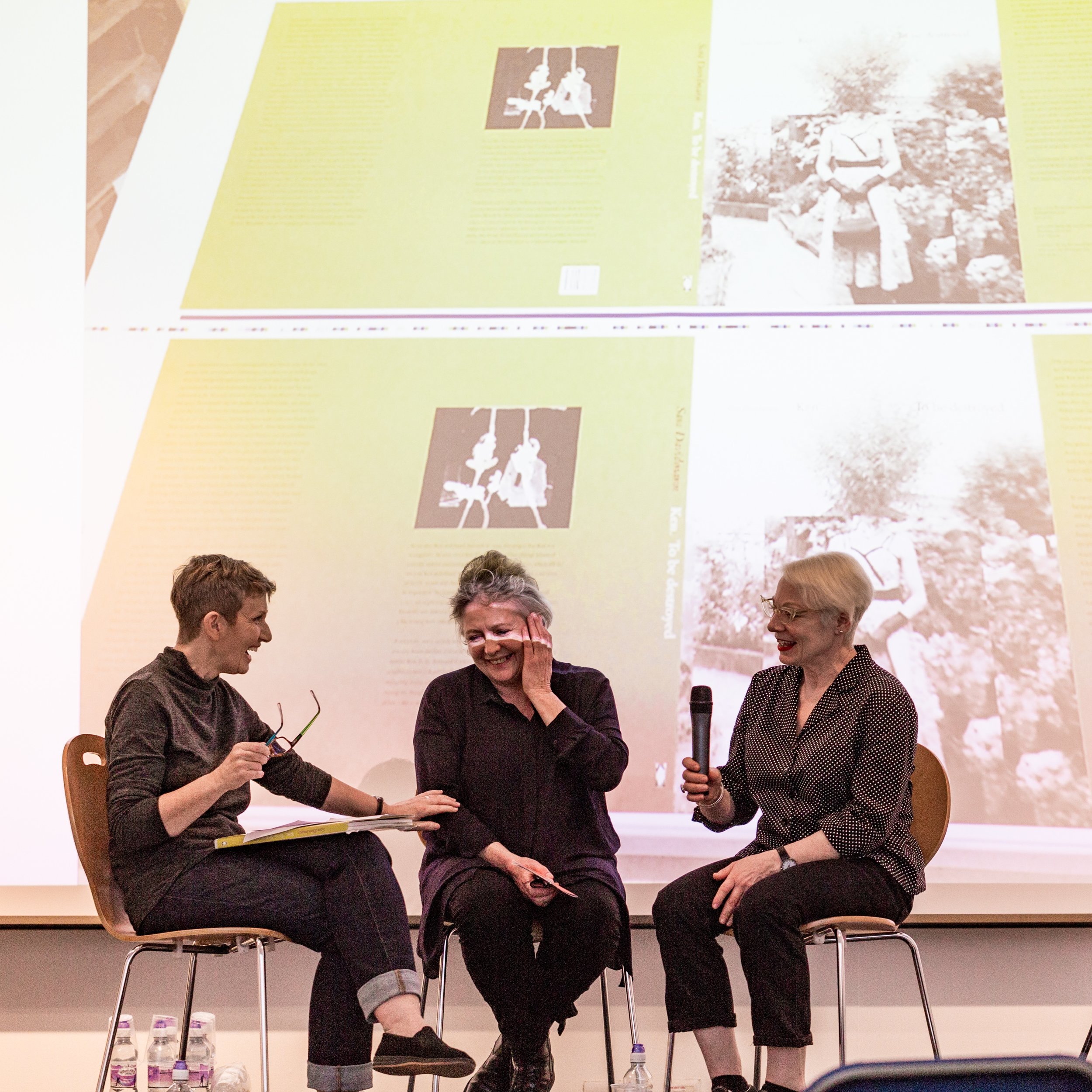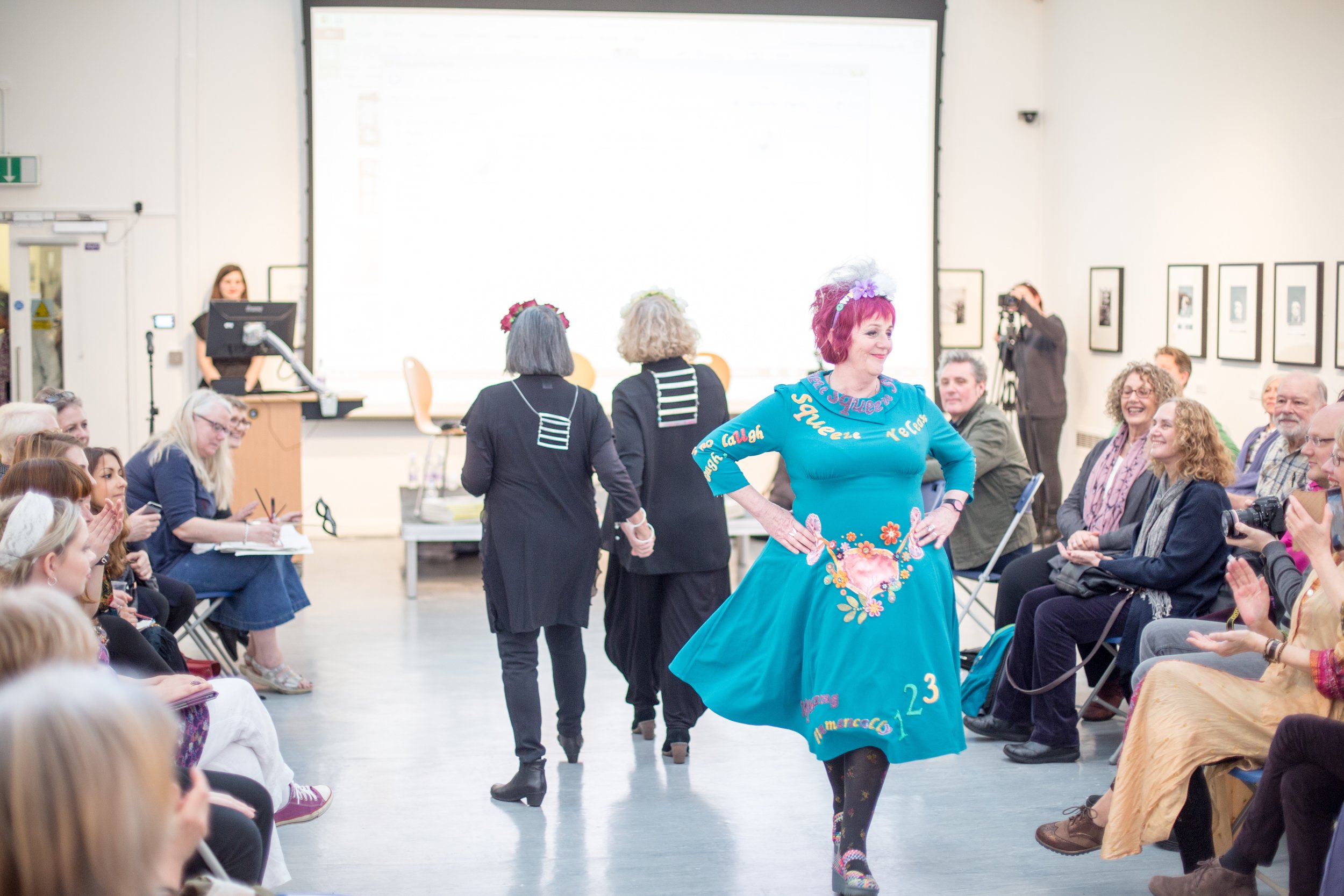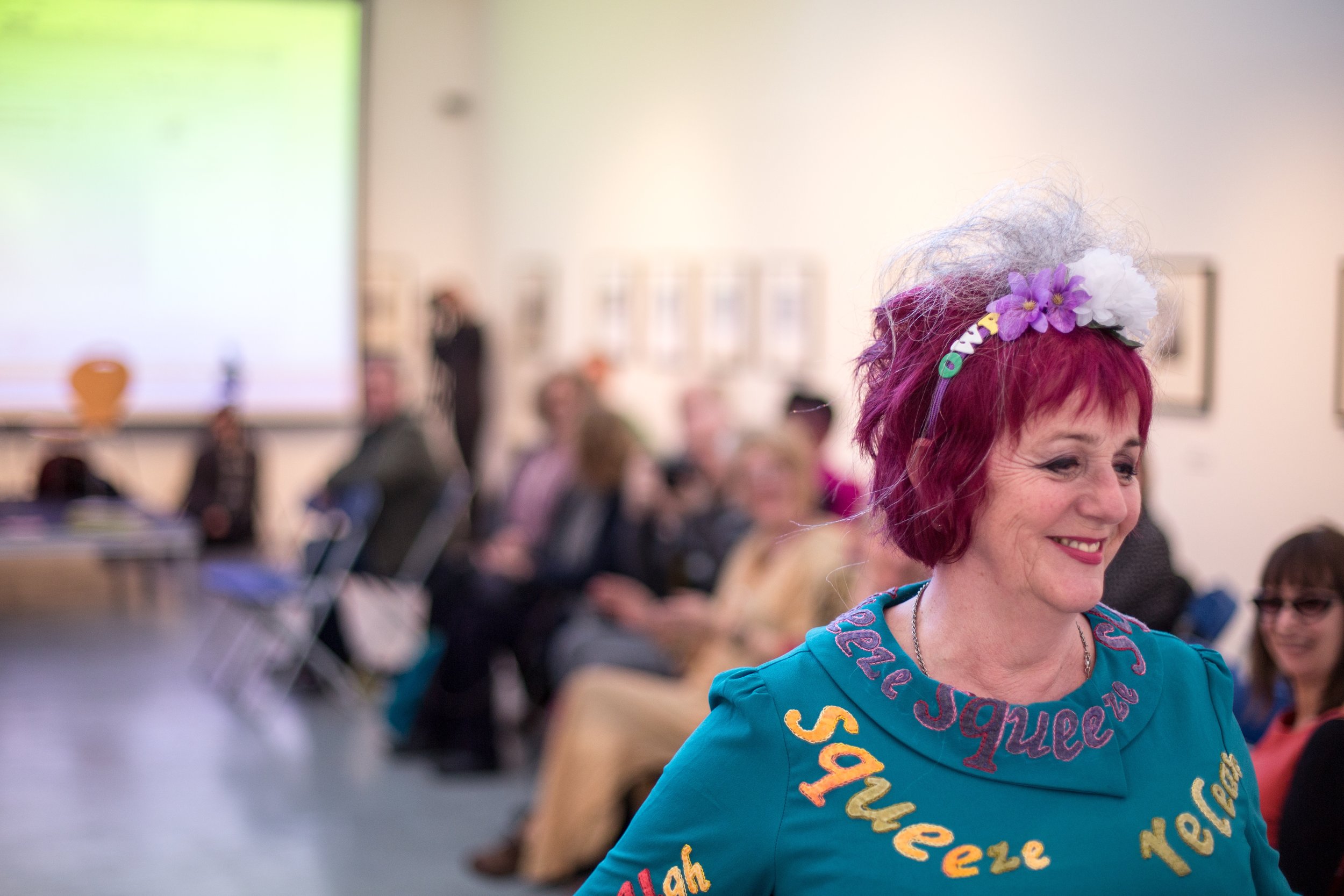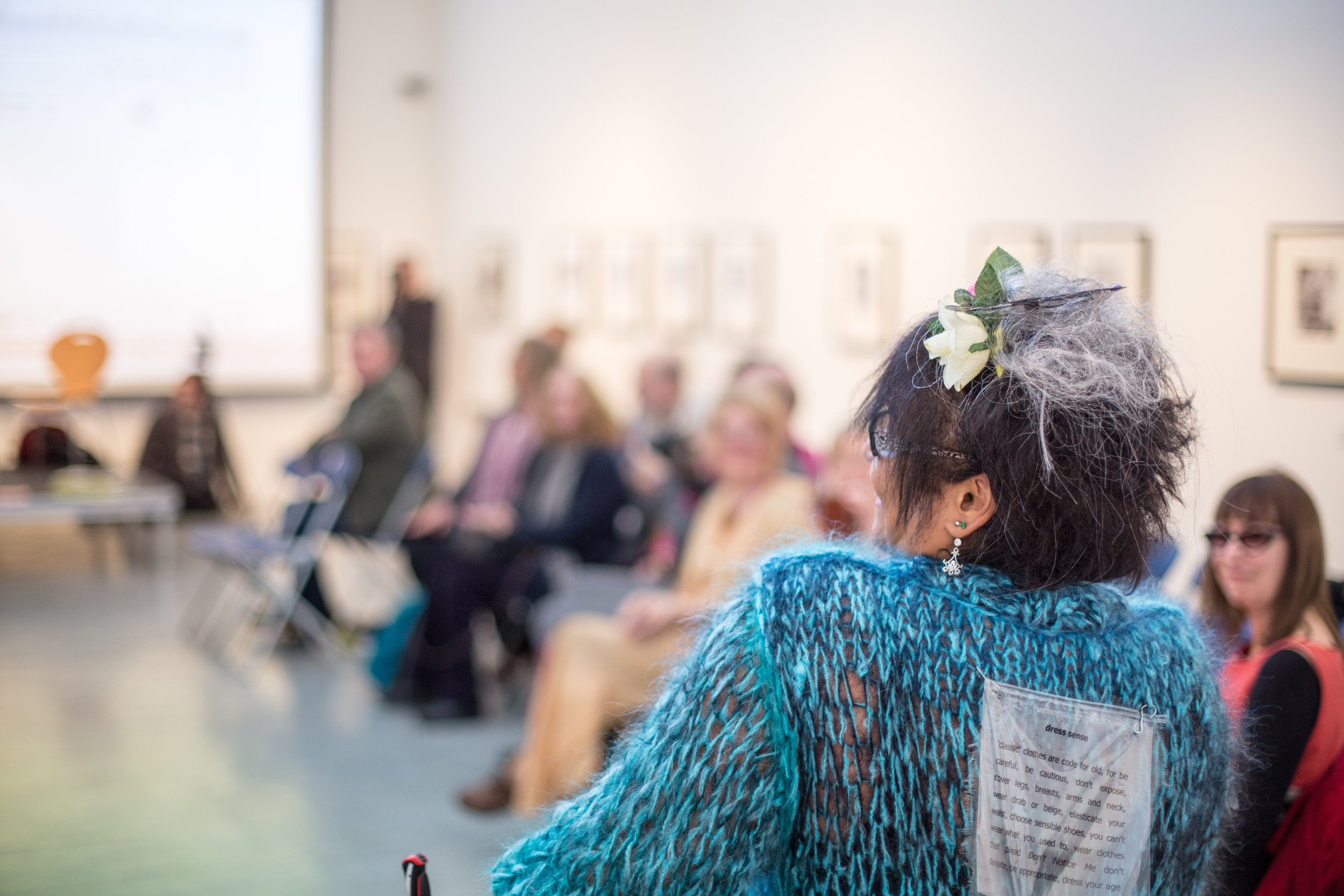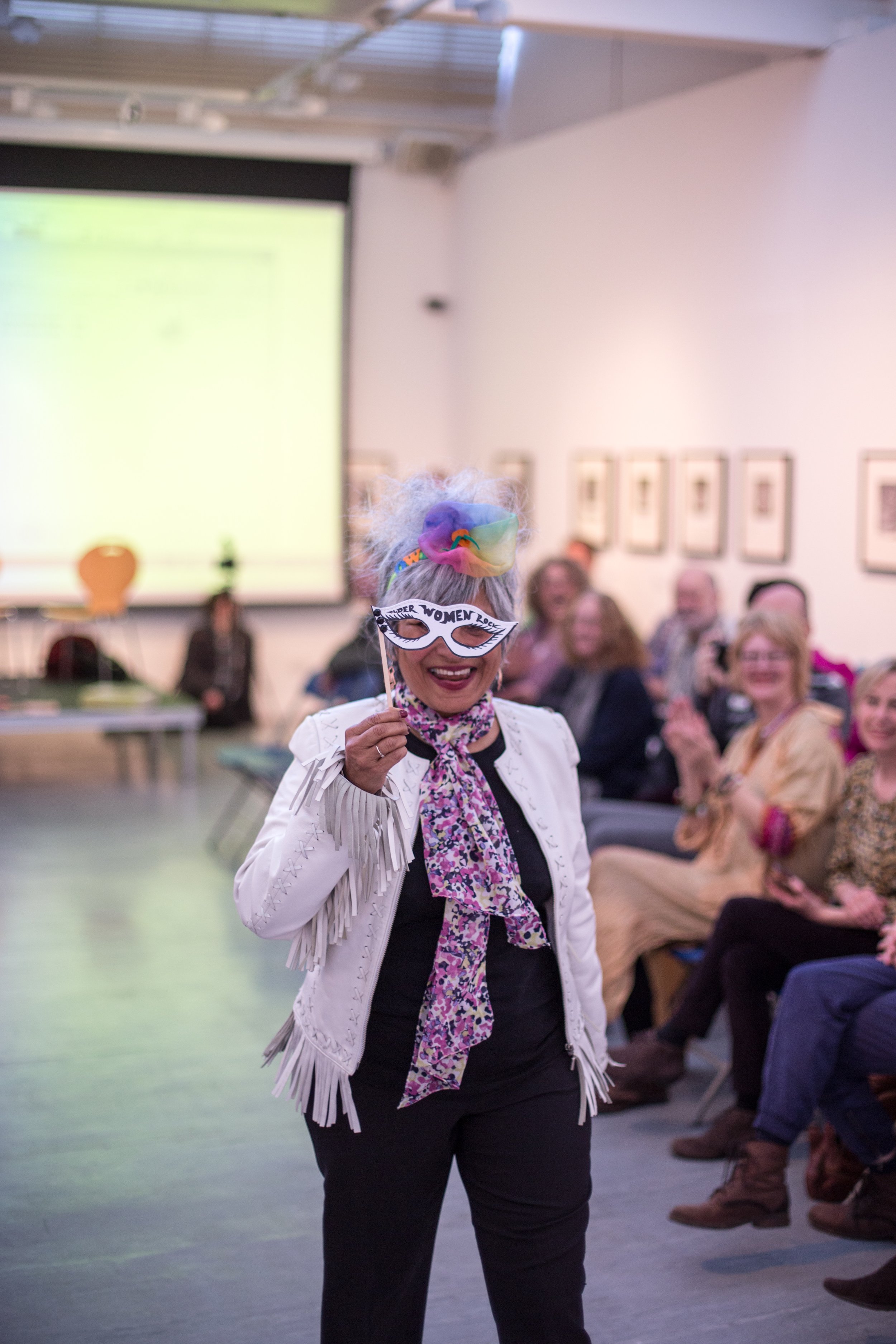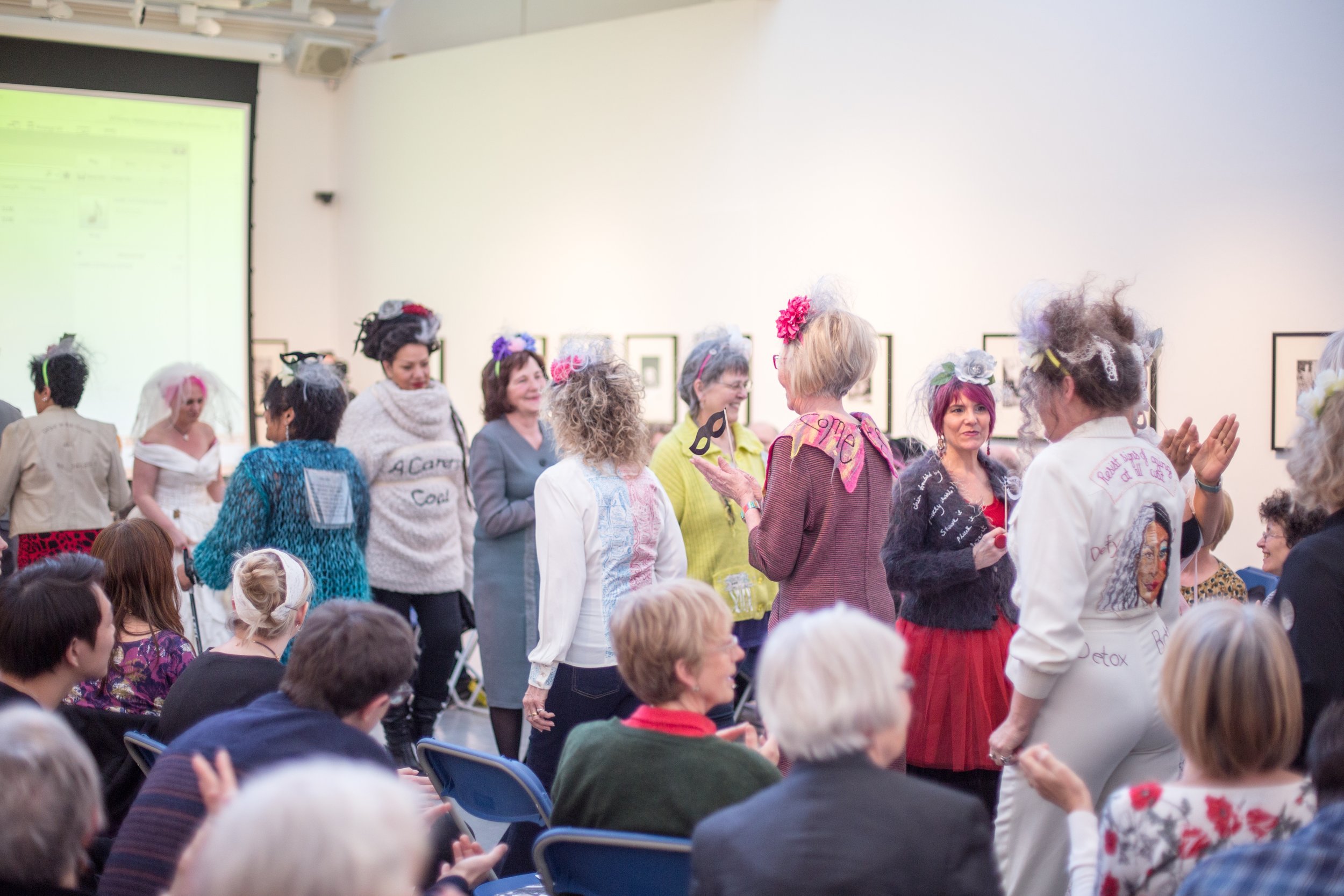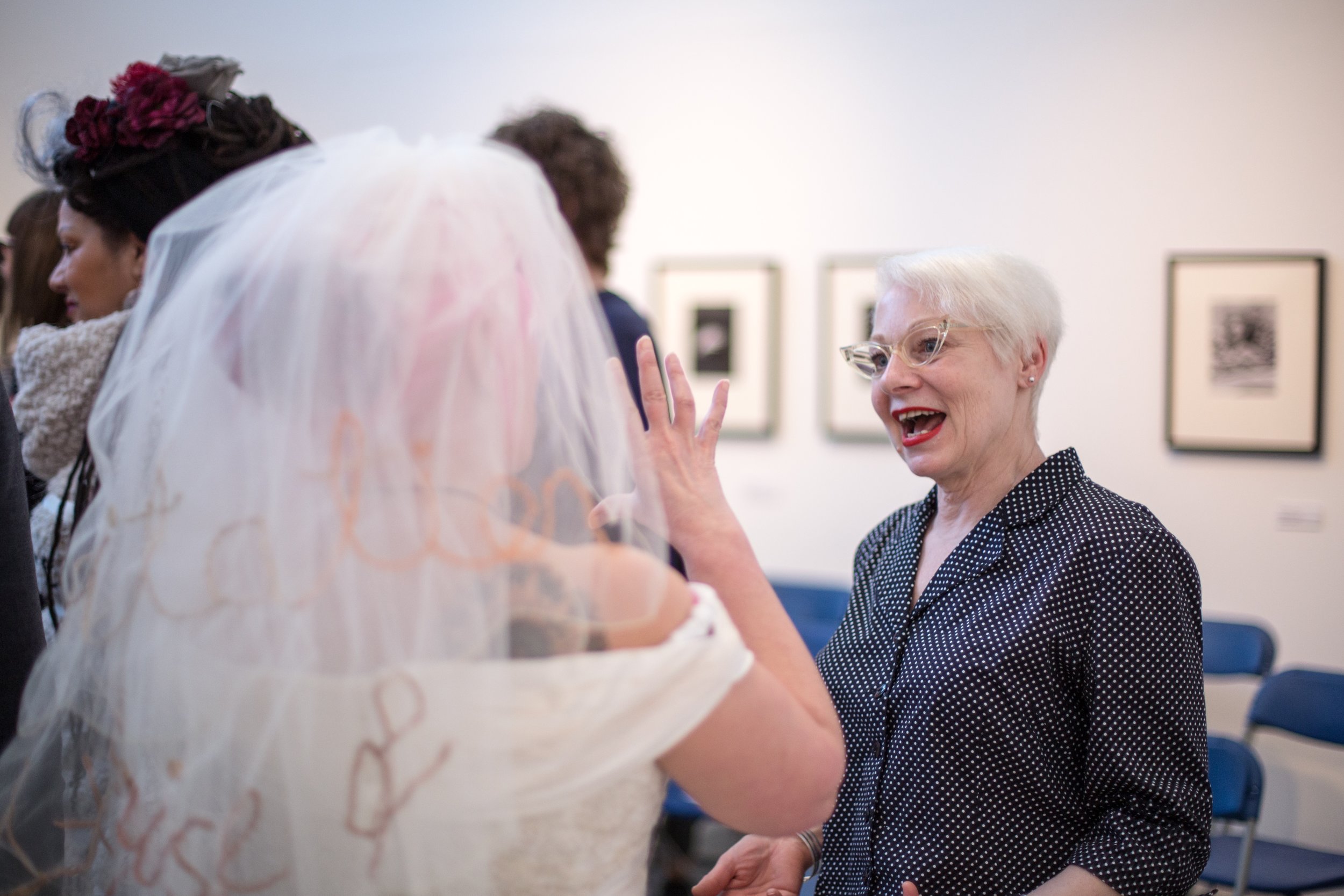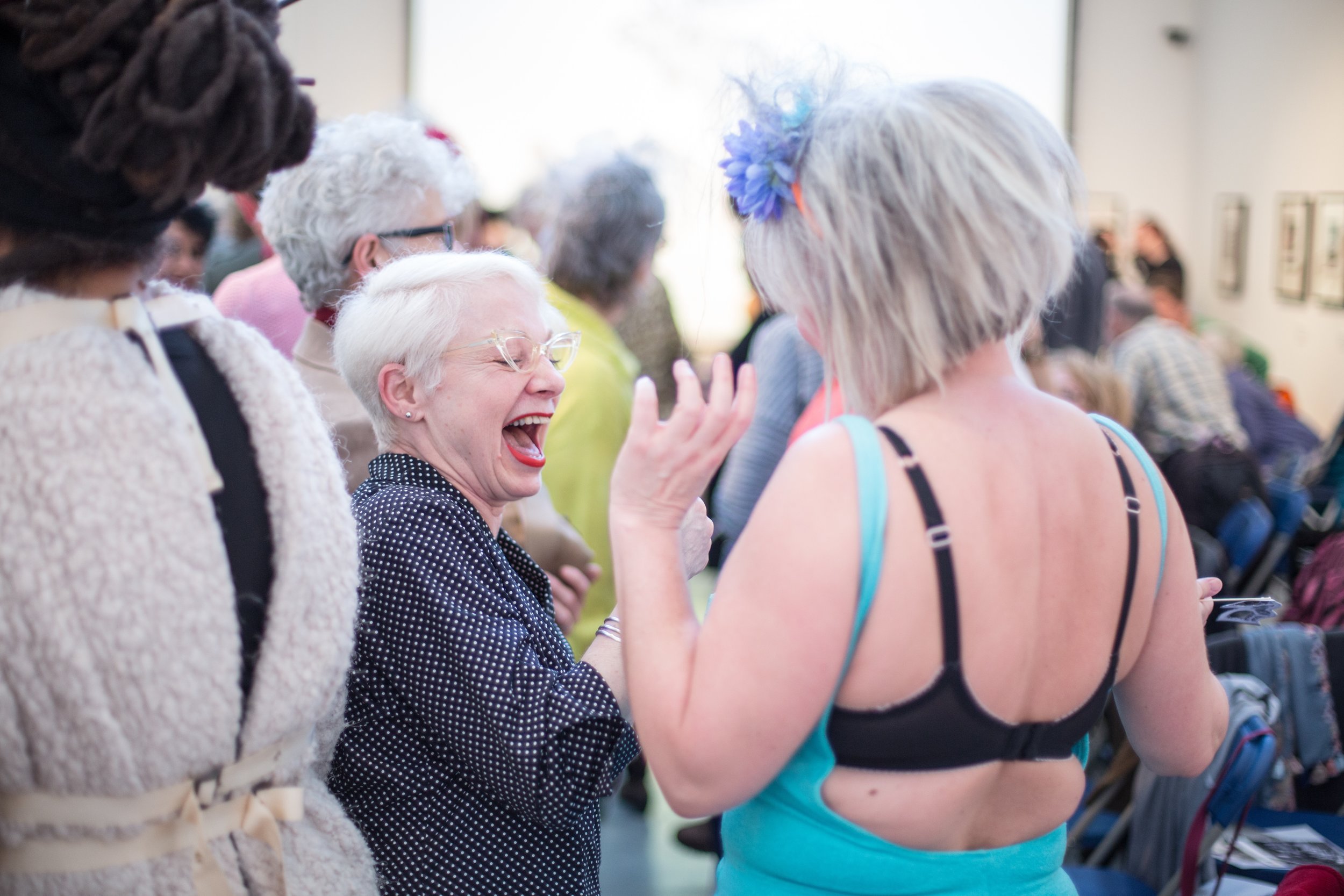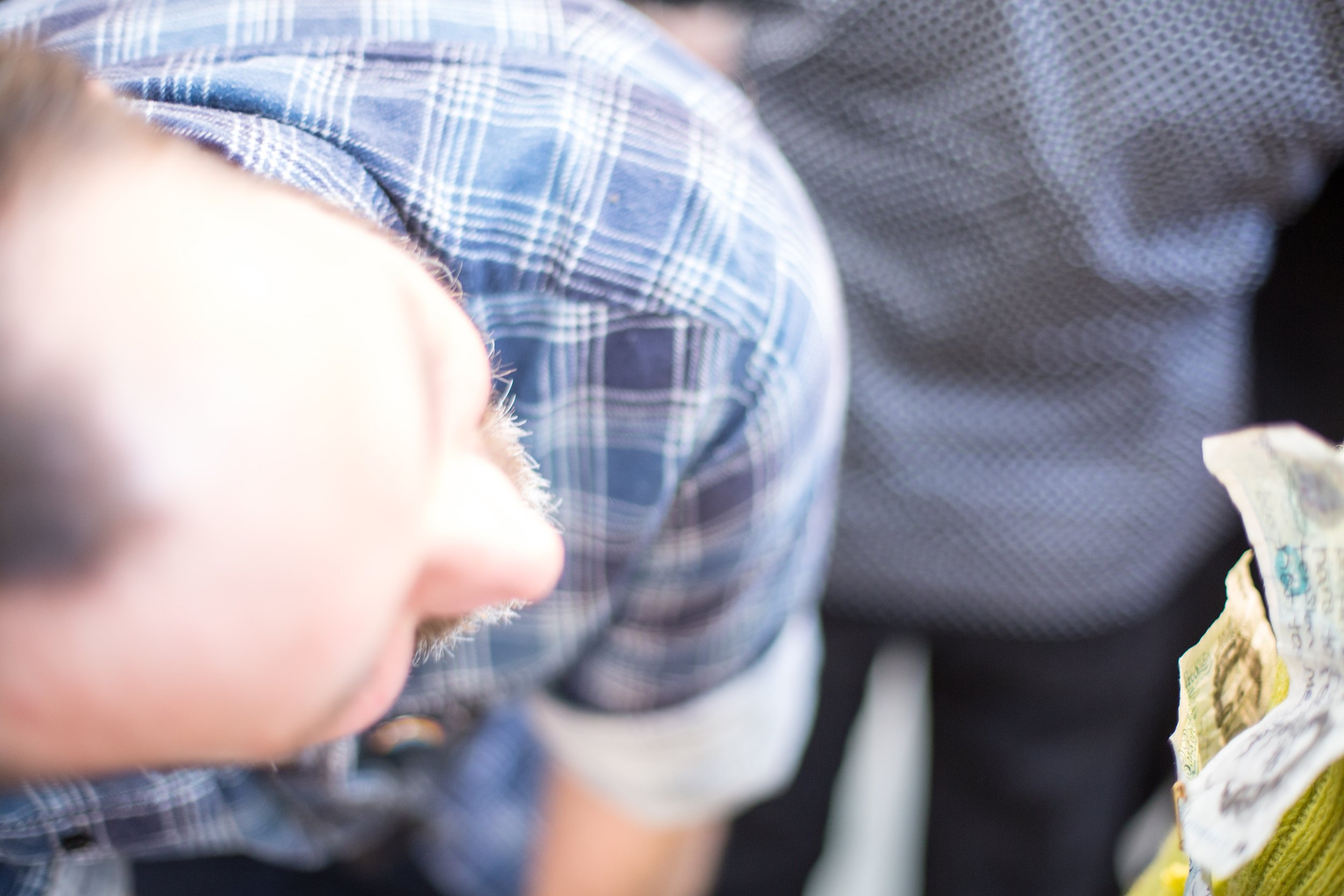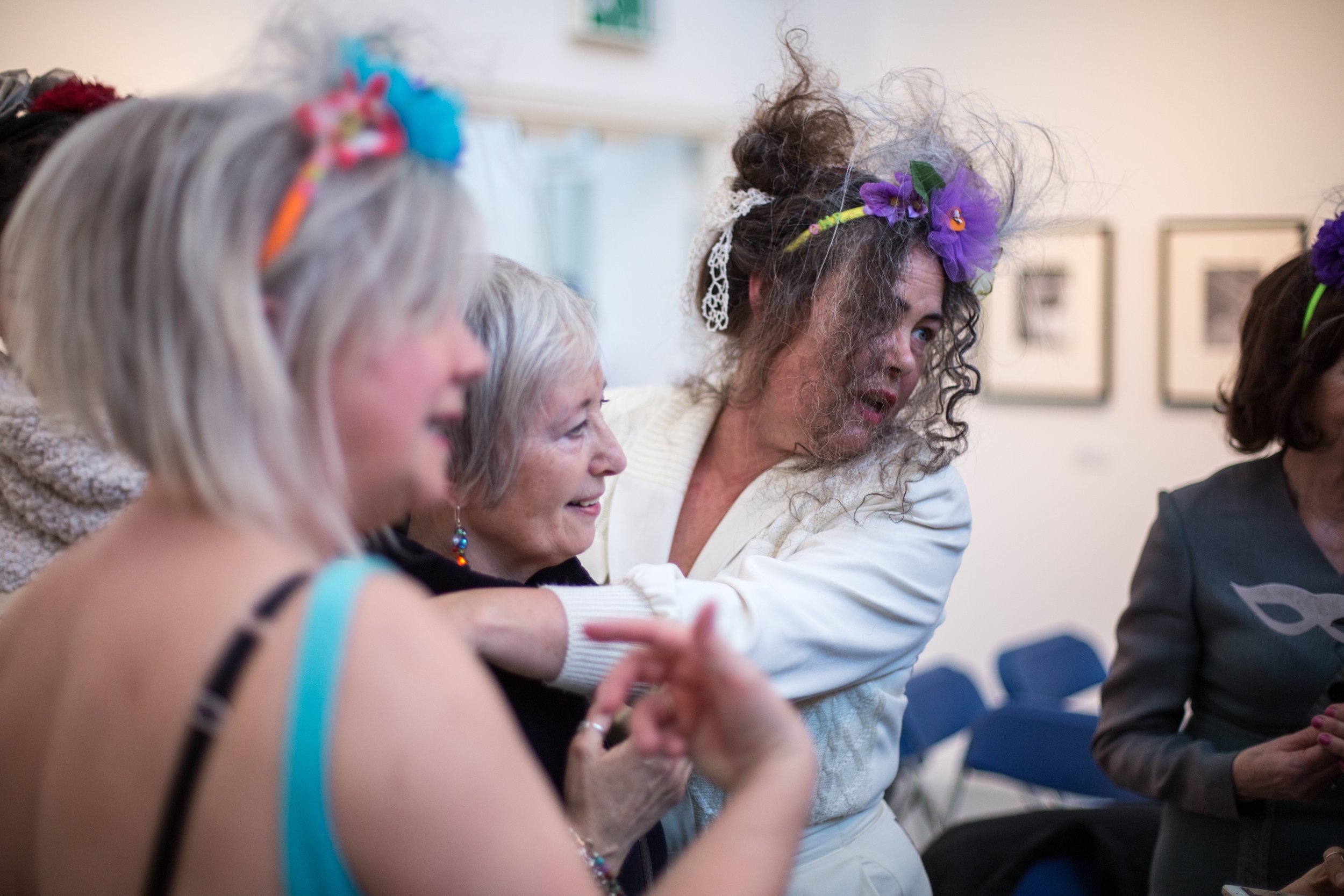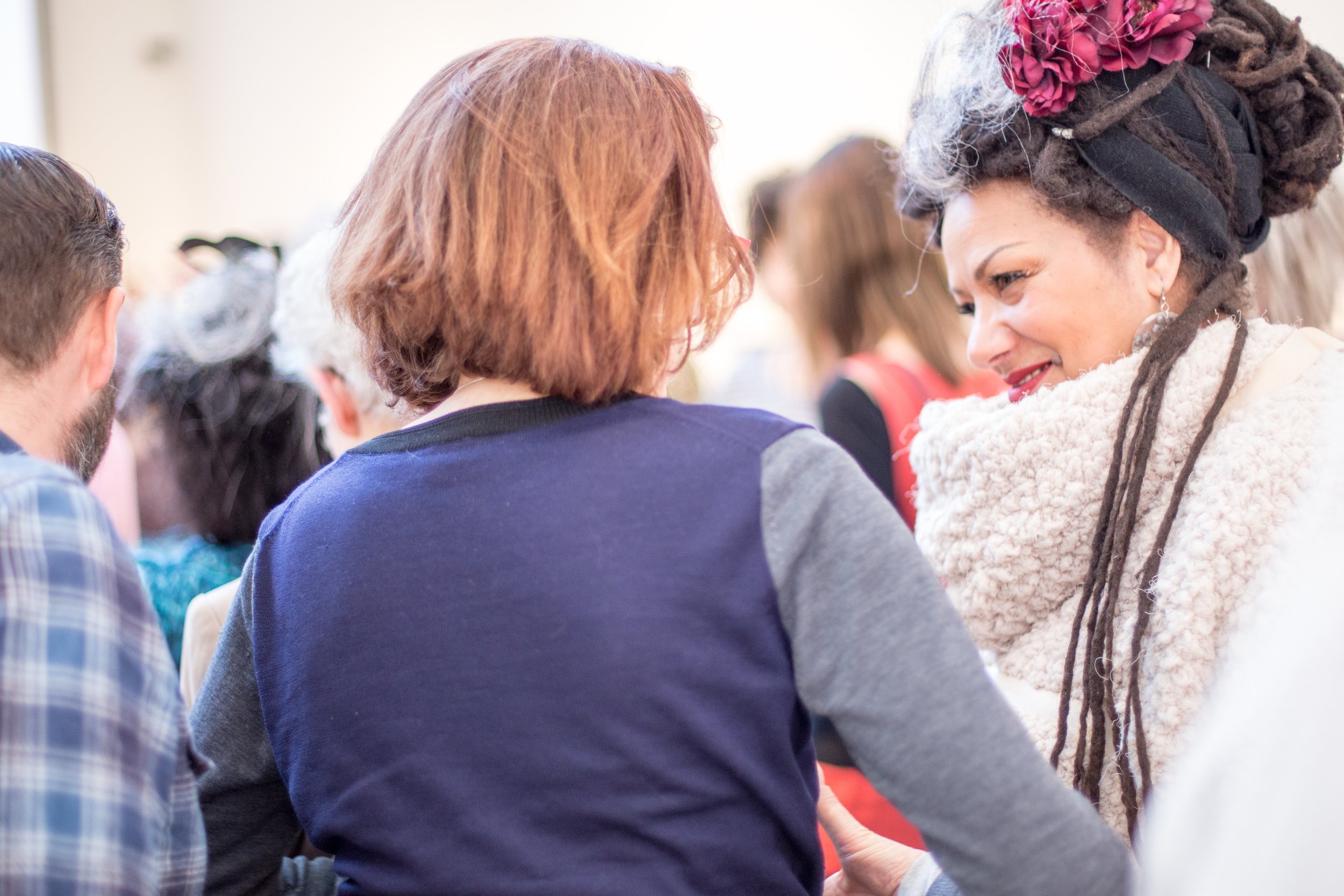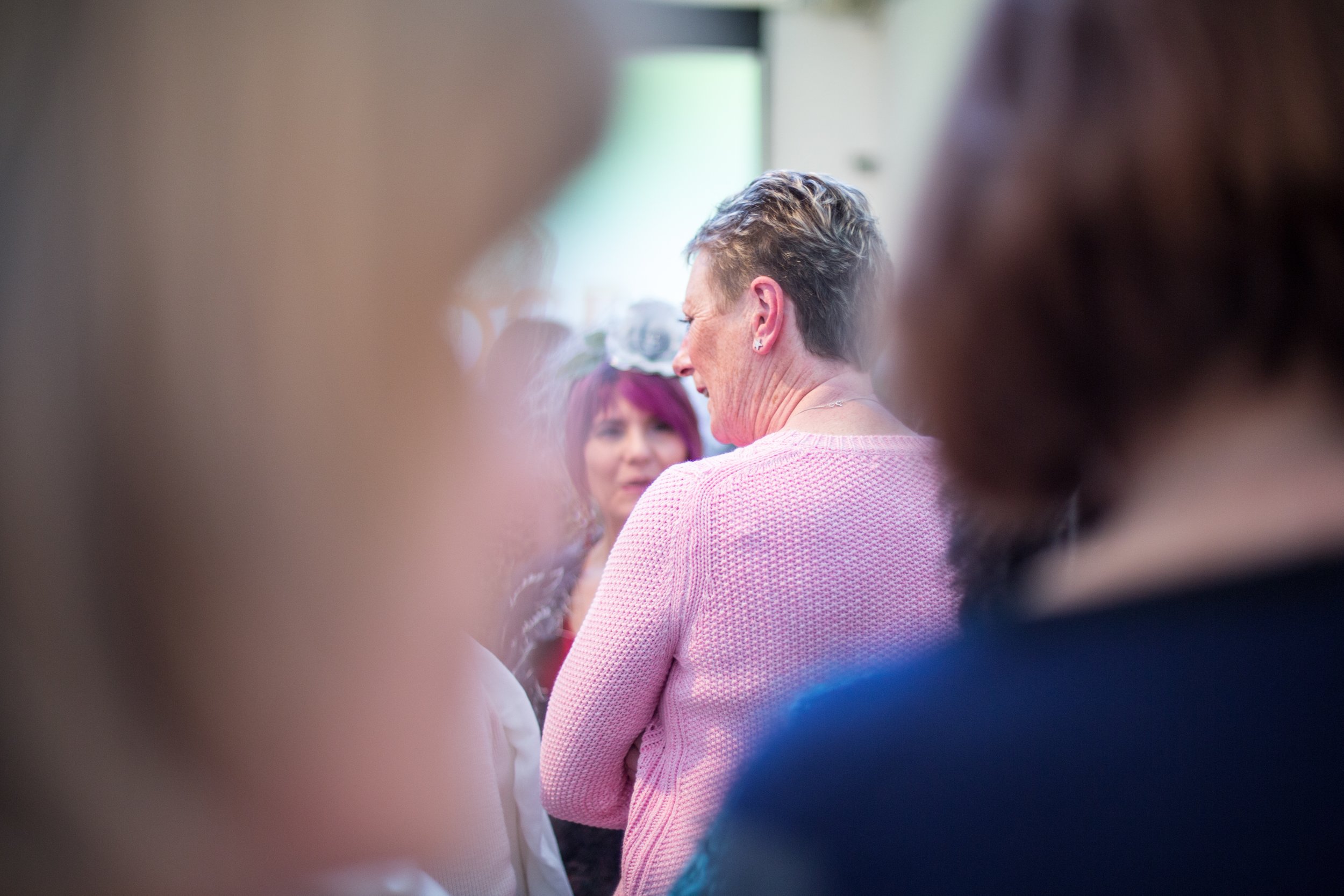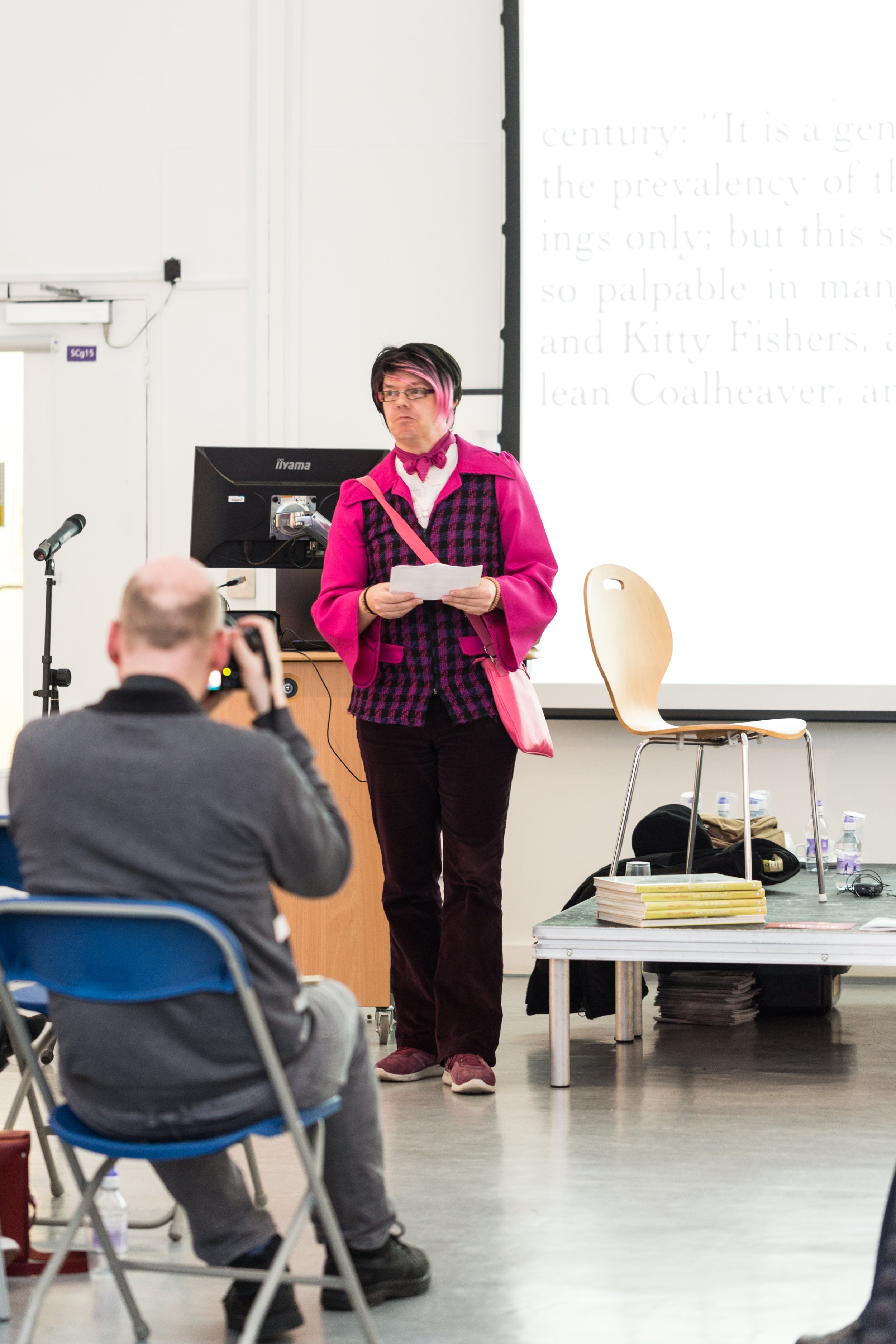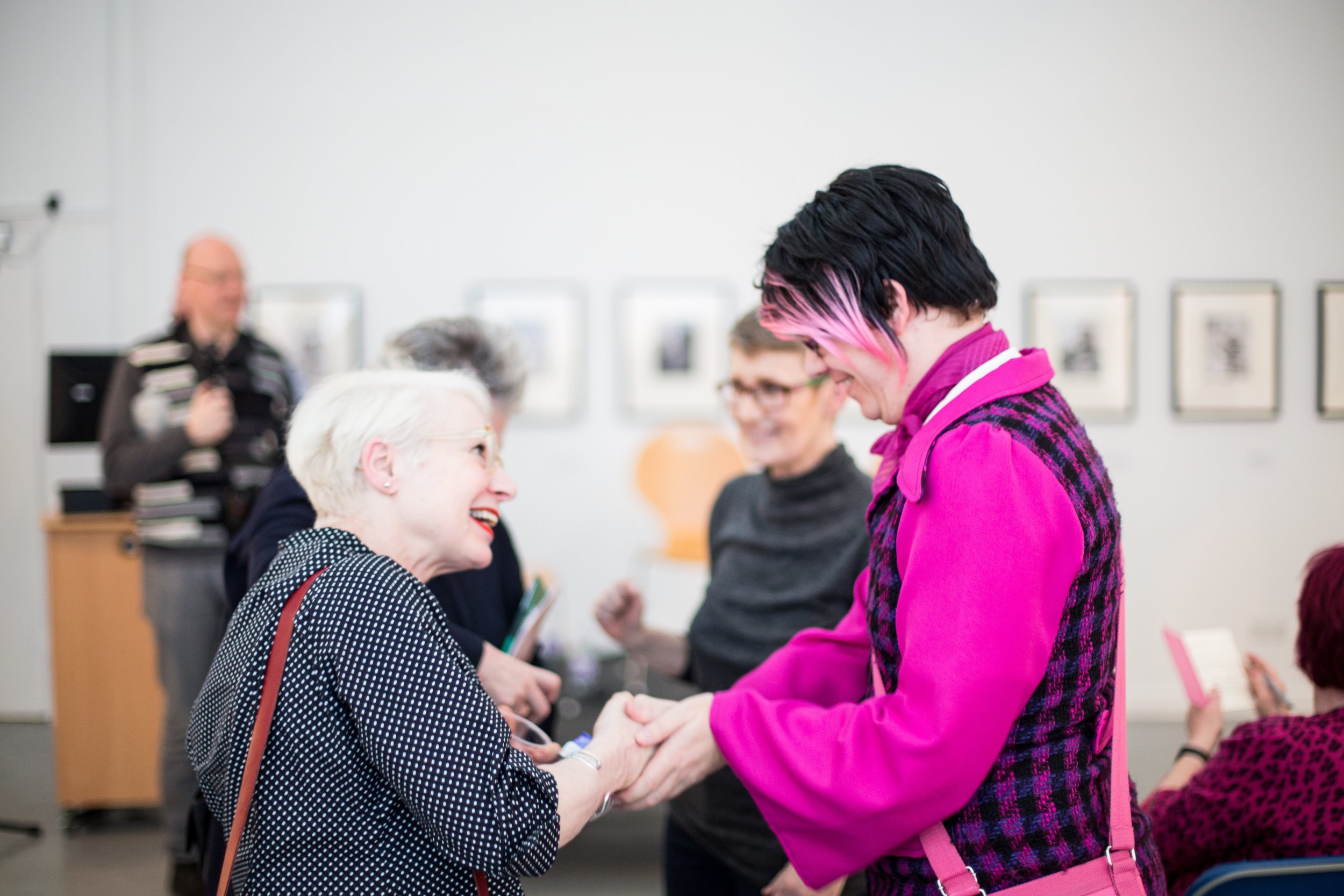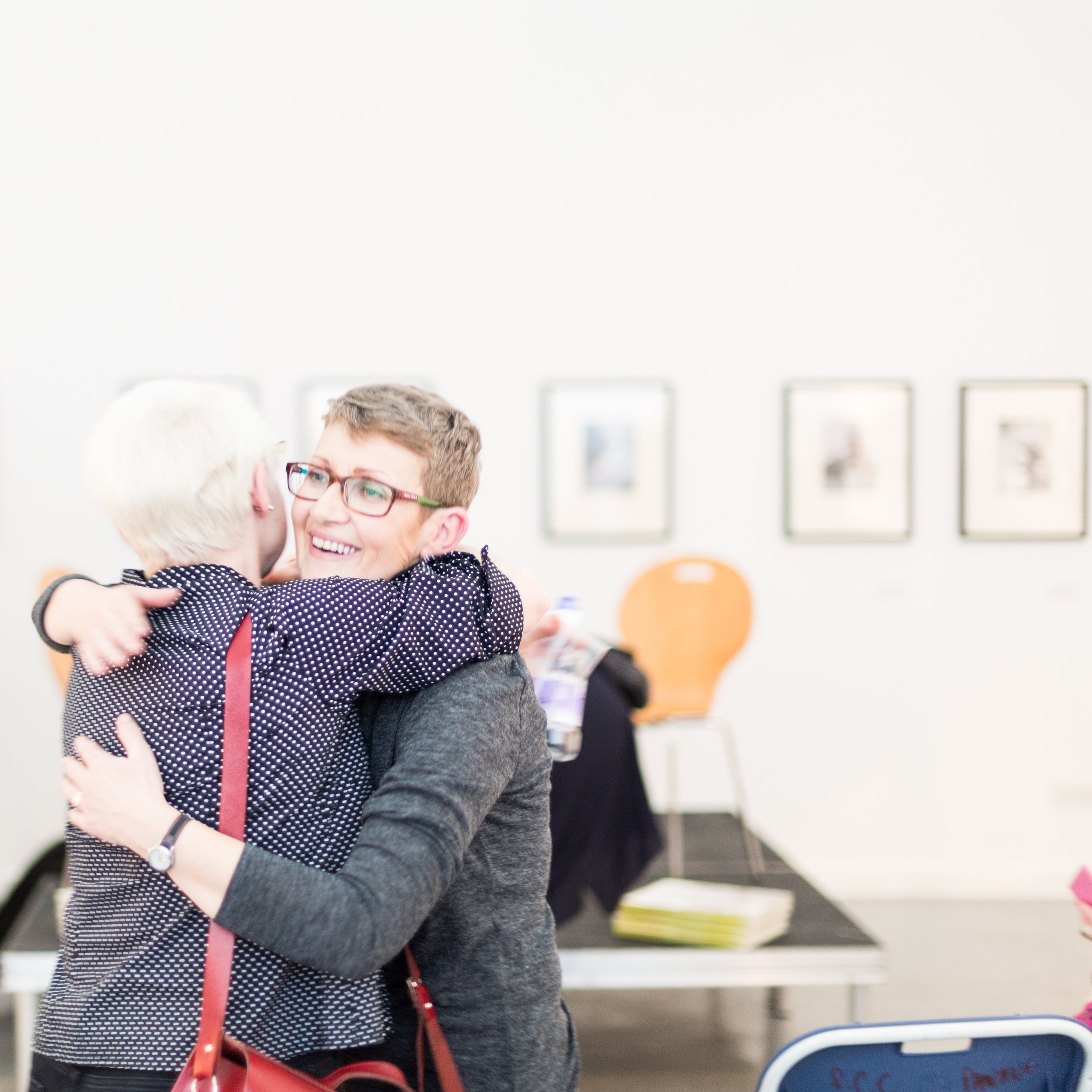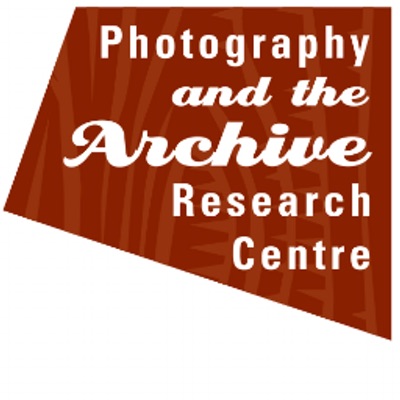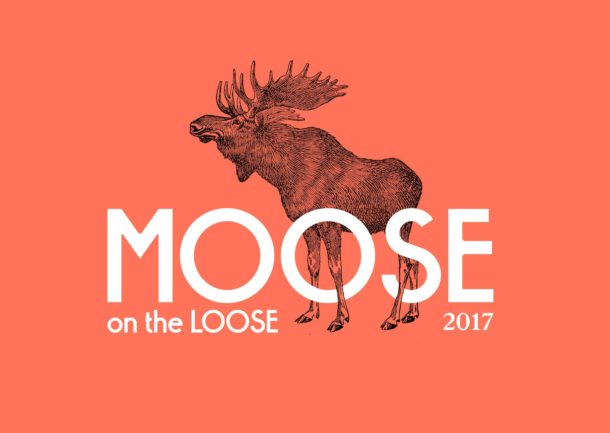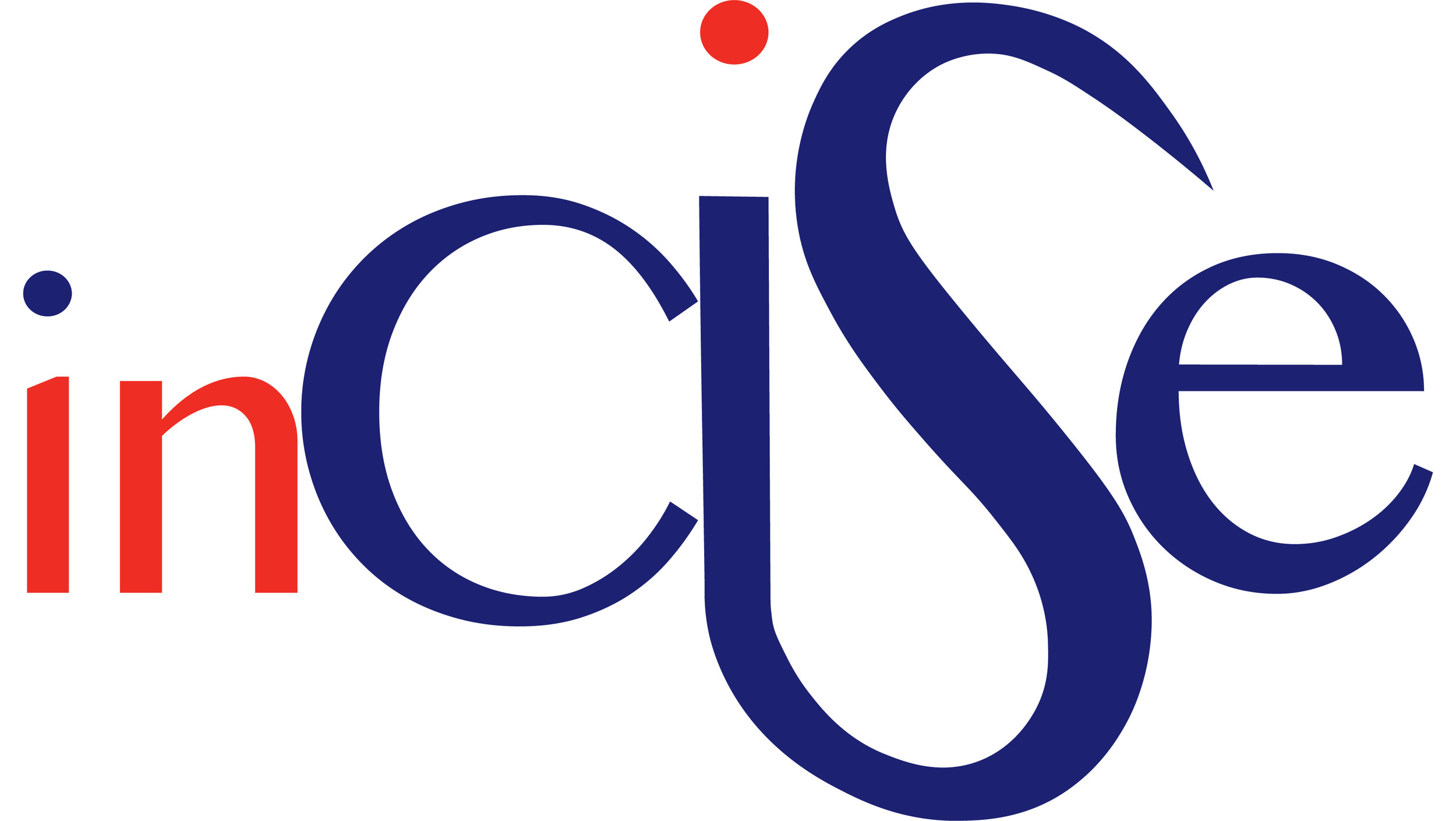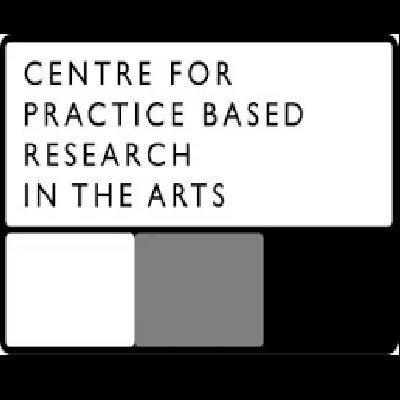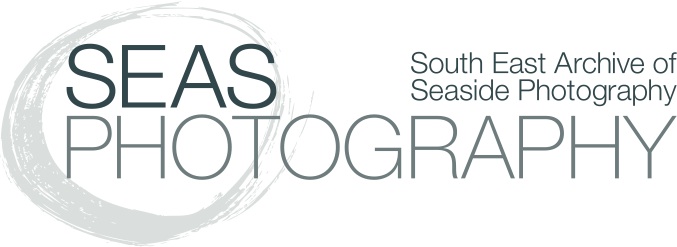Toy soldiers have been a firm favourite with children for who knows how long, but the 20th century saw the coming of the lead soldier. Cheaper means of mass production and the advent of The Great War made them ever more popular. Different armies’ colours, ranks, jobs and services allowed for a proliferation of models to be collected and played with. For every one bought and carefully stored away, thousands were put into pockets and school satchels and taken around to be fought with, fought over, swopped, held to ransom, burned, stood up, knocked down, dropped from great heights, plunged into water and generally to be as tested as their poor real life counterparts. As such, these models began to pick up all the signs of injury and disfigurement that the real life combatants sustained.
These modest models were mass-produced but then individually painted. So, like an army, they are comprised of a repetitive cast die but all in their own way individual, with no two exactly alike.
(A Model War was originally a UAL Photography and the Archive Research Centre exhibition, curated by Wendy Short and Val Williams as a part of Moose on the Loose 2013, and its production supported by London College of Communication.)
Alongside Goldwater’s A Model War a vitrine held the notes from surgeon Sir Harold Gilles.
Gilles Notes
The lists given in Gillies notes attest to the ghastly injuries that could be sustained in the Great War, in amongst the many references to GSW (gun shot wound) are bullet wound lower jaw, shell wound jaw, shrapnel wound face, enucleated eye, loss nasal tip, loss upper third nose, loss of lower jaw, gsw face and mandible maxilla, gsw loss of right eye and upper and lower jaw, plus sadly, several references to ‘mule kick’. A terrible irony that such a disastrous wound, sustained in the middle of the industrially fought Great War, should come from a farmyard animal.
Sir Harold Gillies was one of the pioneering founders of modern plastic surgery. Born in 1882 he was exposed to early attempts at skin grafts in Paris. On his return to London he convinced the Army’s chief surgeon that these new techniques would be not only vital in saving the lives of injured soldiers but also allow them to have some kind of a normal life when returned to civilian duty. In 1917 The Queens Hospital opened in Sidcup where over 11,000 operations took place on over 5,000 men.
Herbert Coles and Henry Tonks were employed by the unit to paint detailed watercolours of the injuries sustained by the men. These are now housed in the library of the Royal College of Surgeons.
The Herbert Coles portraits are used with the kind permission of the Archives of the Royal College of Surgeons of England.
Model and Soldier Key
Manoil 16. A prone machine gunner.
Pte P. Green. 471928. Rfn. Londons 2/12.
GSW Face. 14-06-17
Manoil 43. Kneeling sniper.
Pte W. Gordon. 32515. Rfn. NZRB.
Face. (no date of injury)
Manoil 9. An Officer.
Pte David. Howard. 266228. East Surreys 8th.
GSW Jaw, mouth and mandible. 01-02-18
Manoil 75. Anti-aircraft searchlight being operated by a soldier.
Pte A. Greive. 4170. Black Watch 8th.
GSW Mouth and nose. 14-10-18
Manoil 93. Soldier in a gasmask carrying a riffle.
Pte J. Eggington. 241460. South Staffs 2/6th.
GSW Nose and right eye. 11-04-17
Manoil 62. Soldier in bayonet charge.
Pte F. Smith. 241160. Norfolks
GSW Face. 02-11-17
Manoil 73. Anti Aircraft Gunner
Pte A. Godfrey. NZ X1 Taranaki WG
Face/Eye (no date of injury)
Manoil 112. An Aviator holding a bomb.
Pte L. Tringham. 235074. Middlesex 12th.
GSW Face, nose and right eye. 08-08-17
Karen Shepherdson
Aftermath
Aftermath was supported by Arts Council England and reappropriates the found images of Ernst Friedrich’s 1924 Krieg dem Kriege. It examines ‘ruination’ relating to the human form, a form all too vulnerable to mechanical warfare. Using the esoteric photographic technique of emulsion lifting, whereby the photographic emulsion - similar to that of a fine layer of skin - is lifted away, each image forces us to consider the fragility of the face and the utter devastation at its loss. A characteristic of emulsion lifts are tears and creases which subsequently require slow, gentle teasing and stroking out by hand using soft natural bristle brushes. This act of stroking and easing the face back into shape is of course in sharp distinction to the moment of facial destruction.



